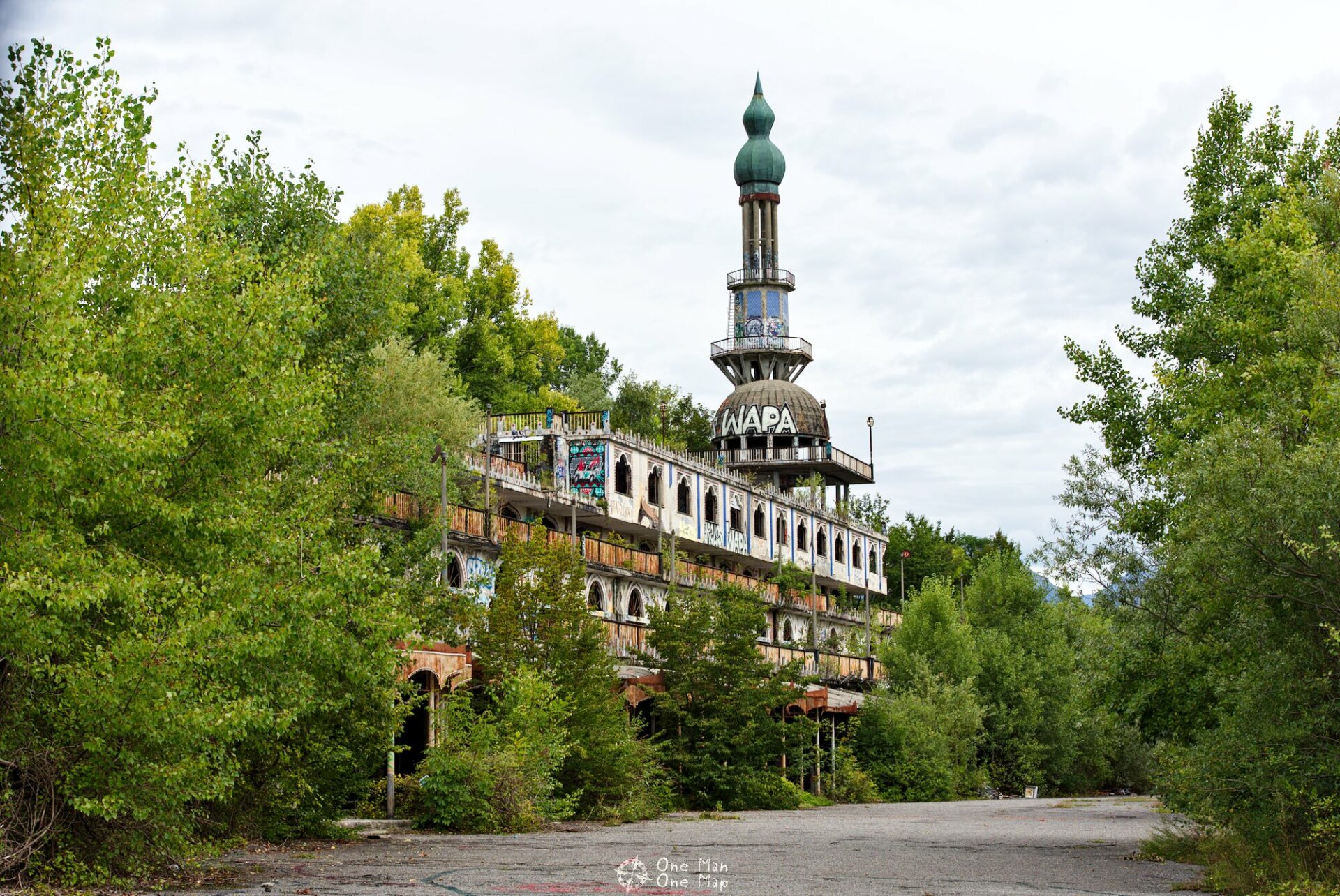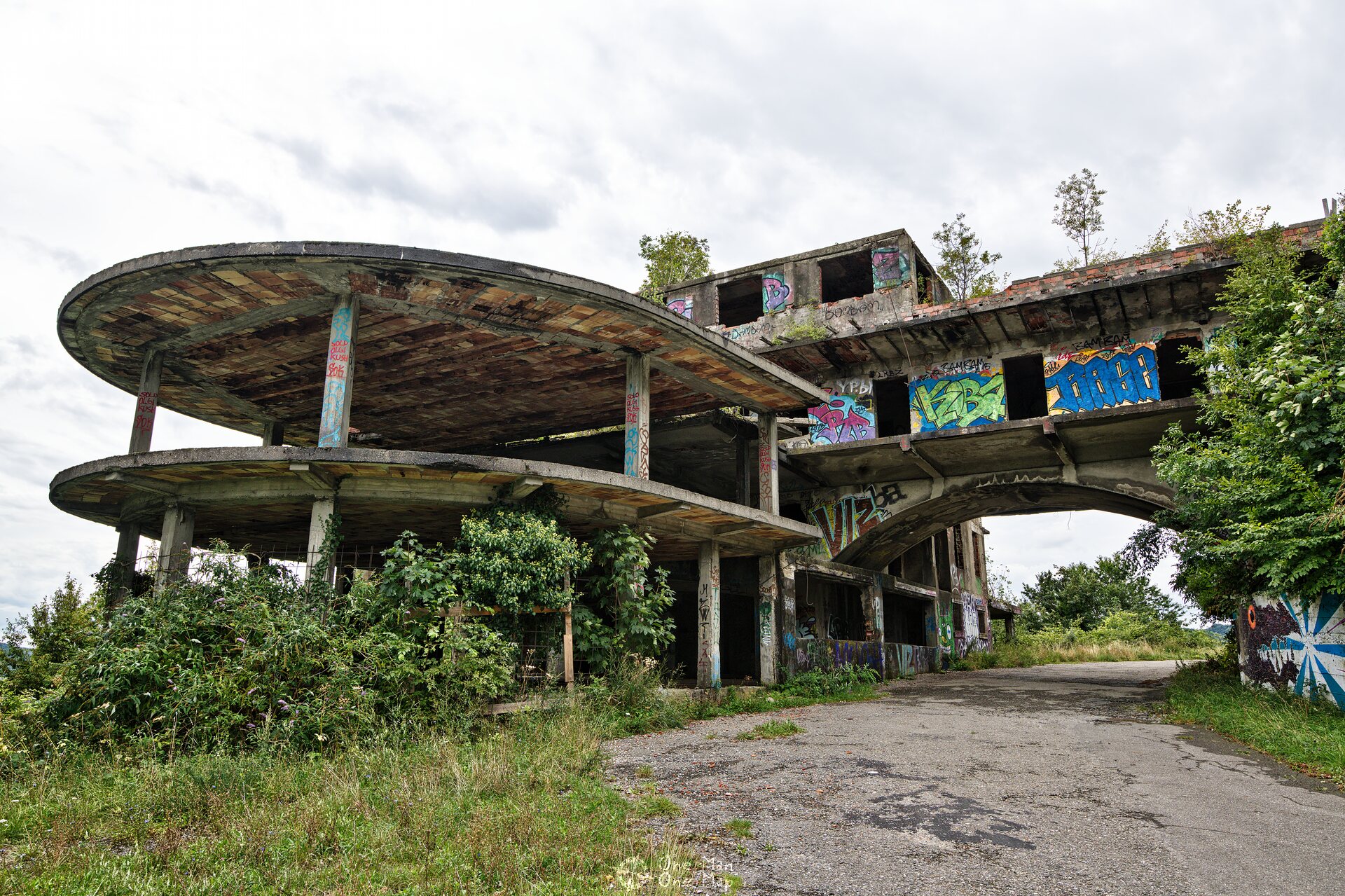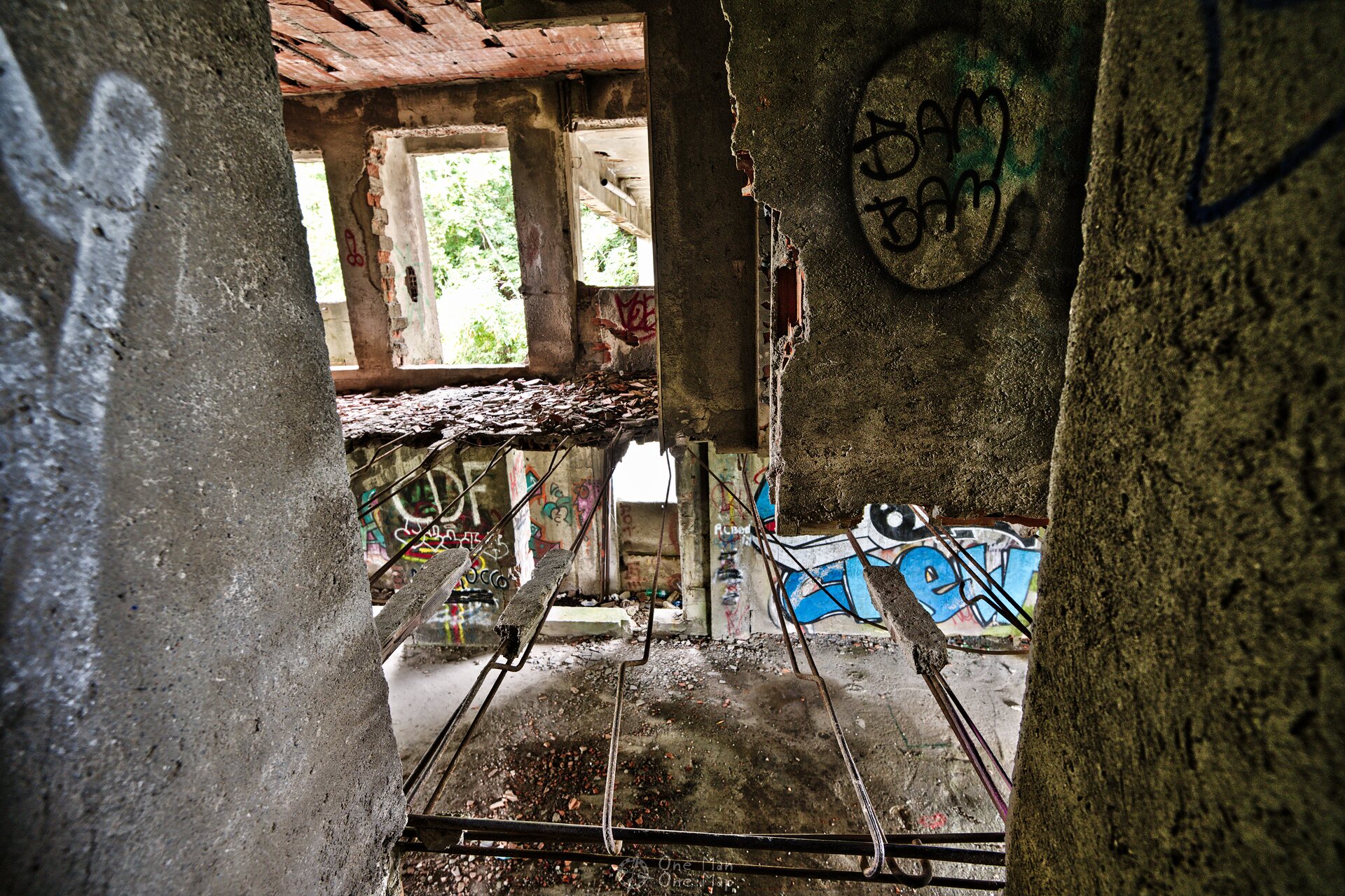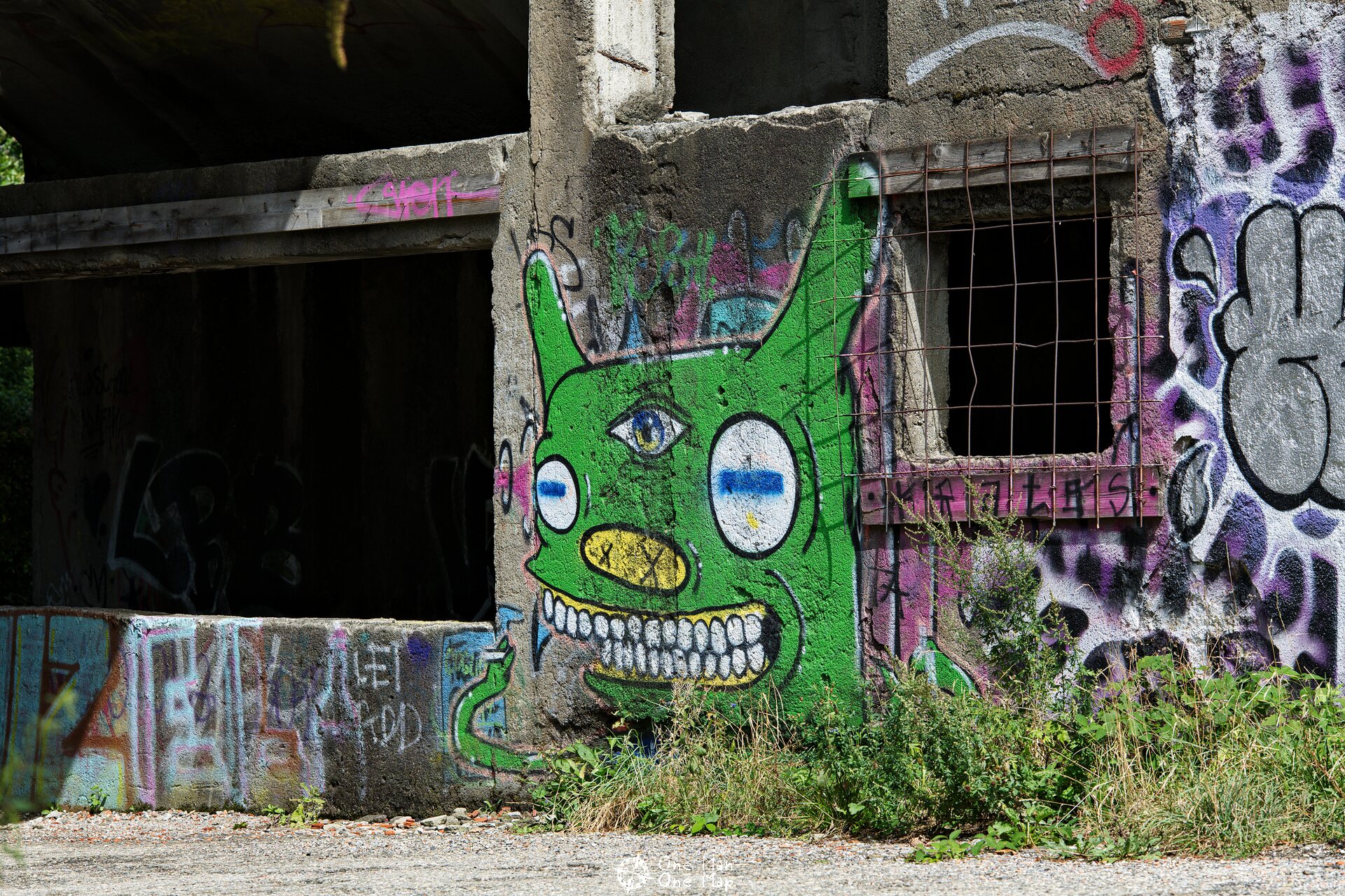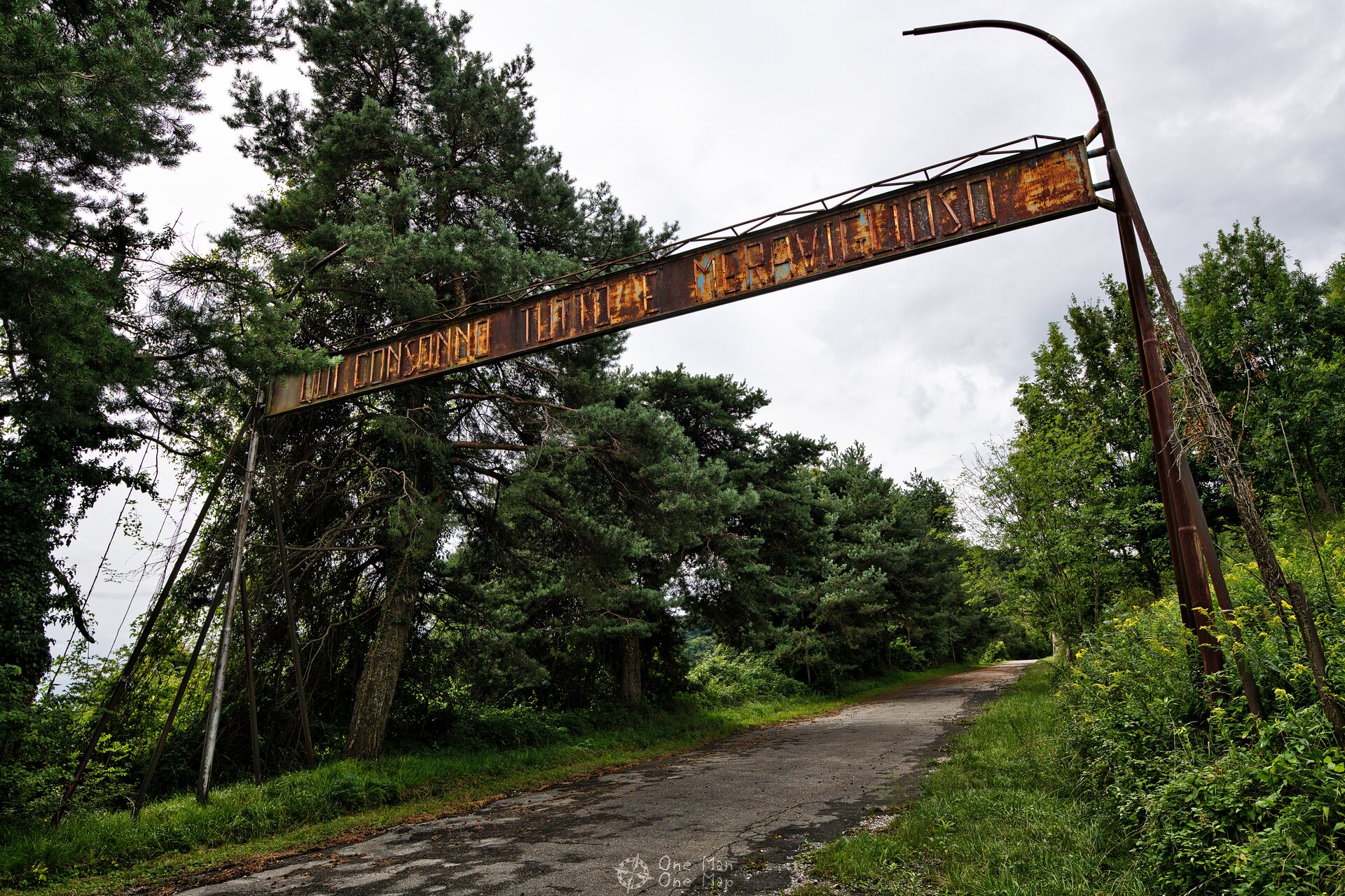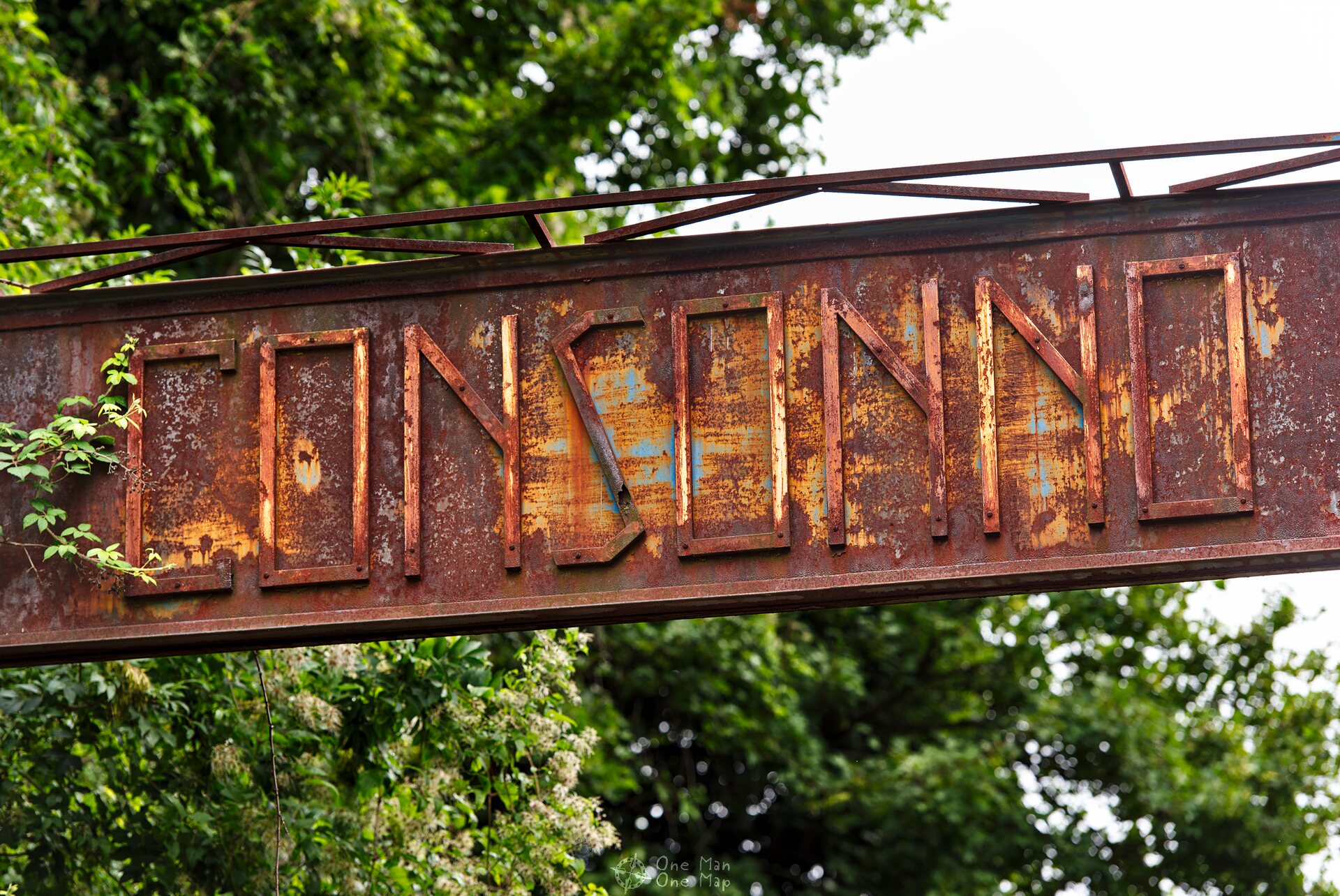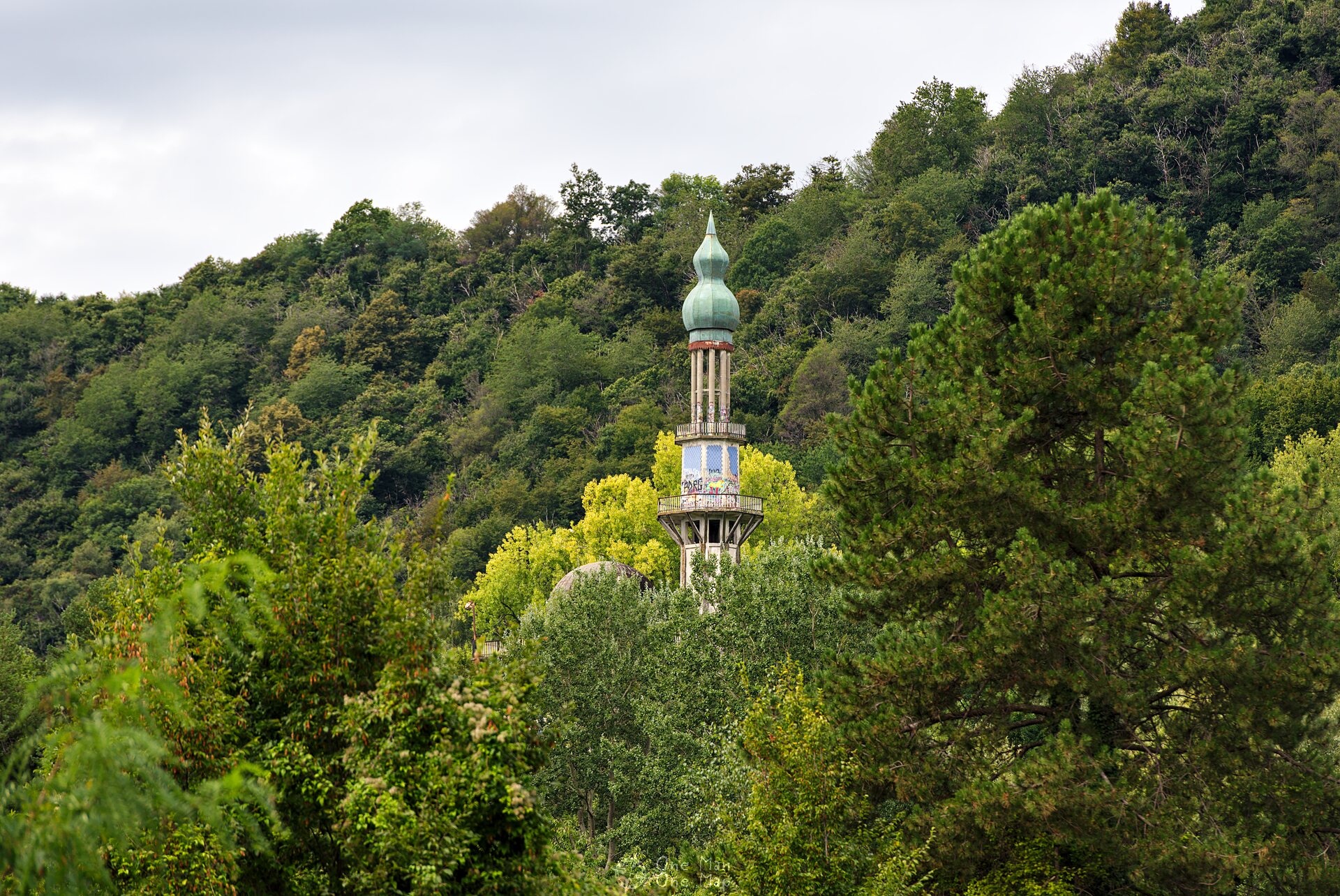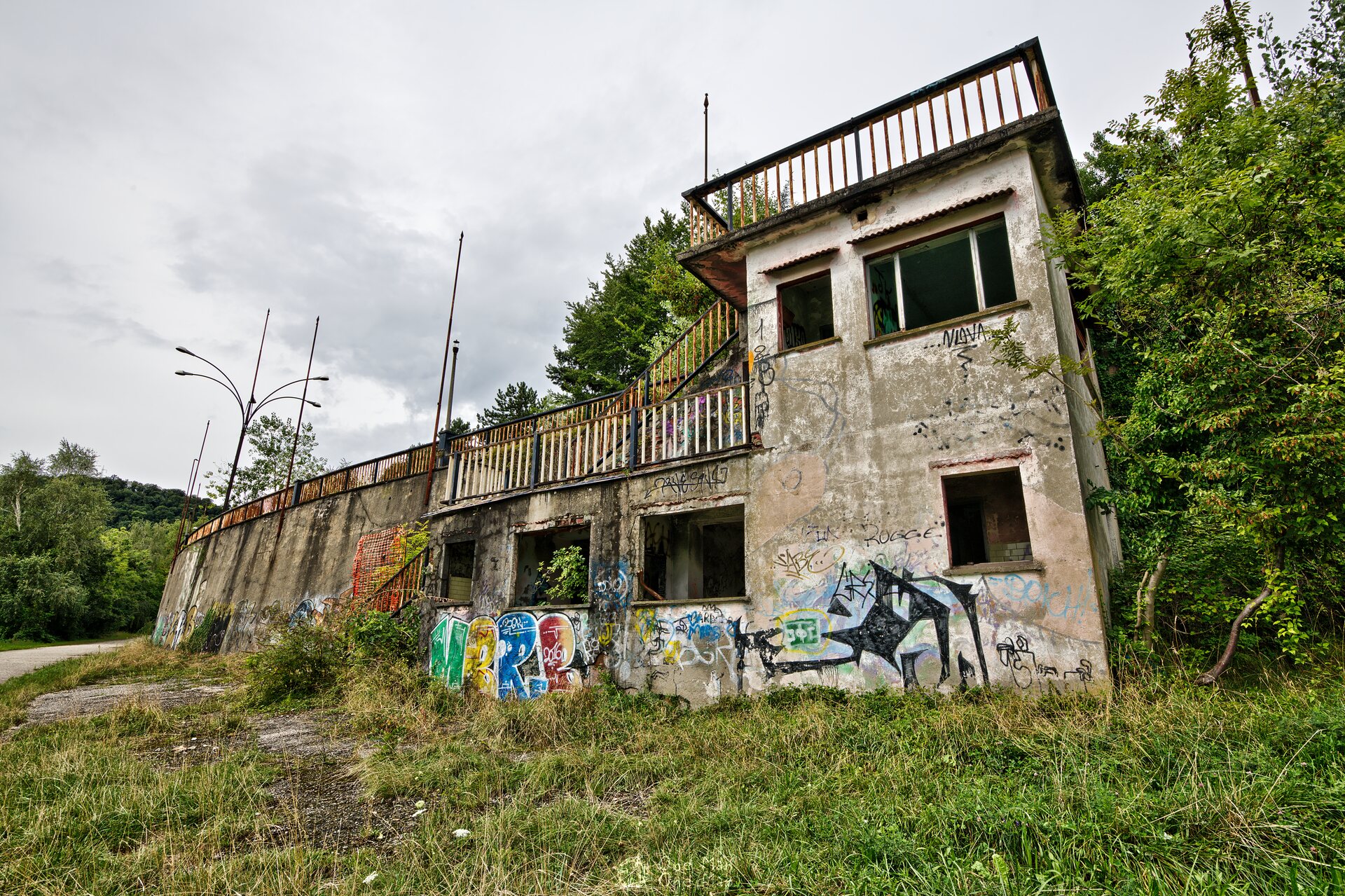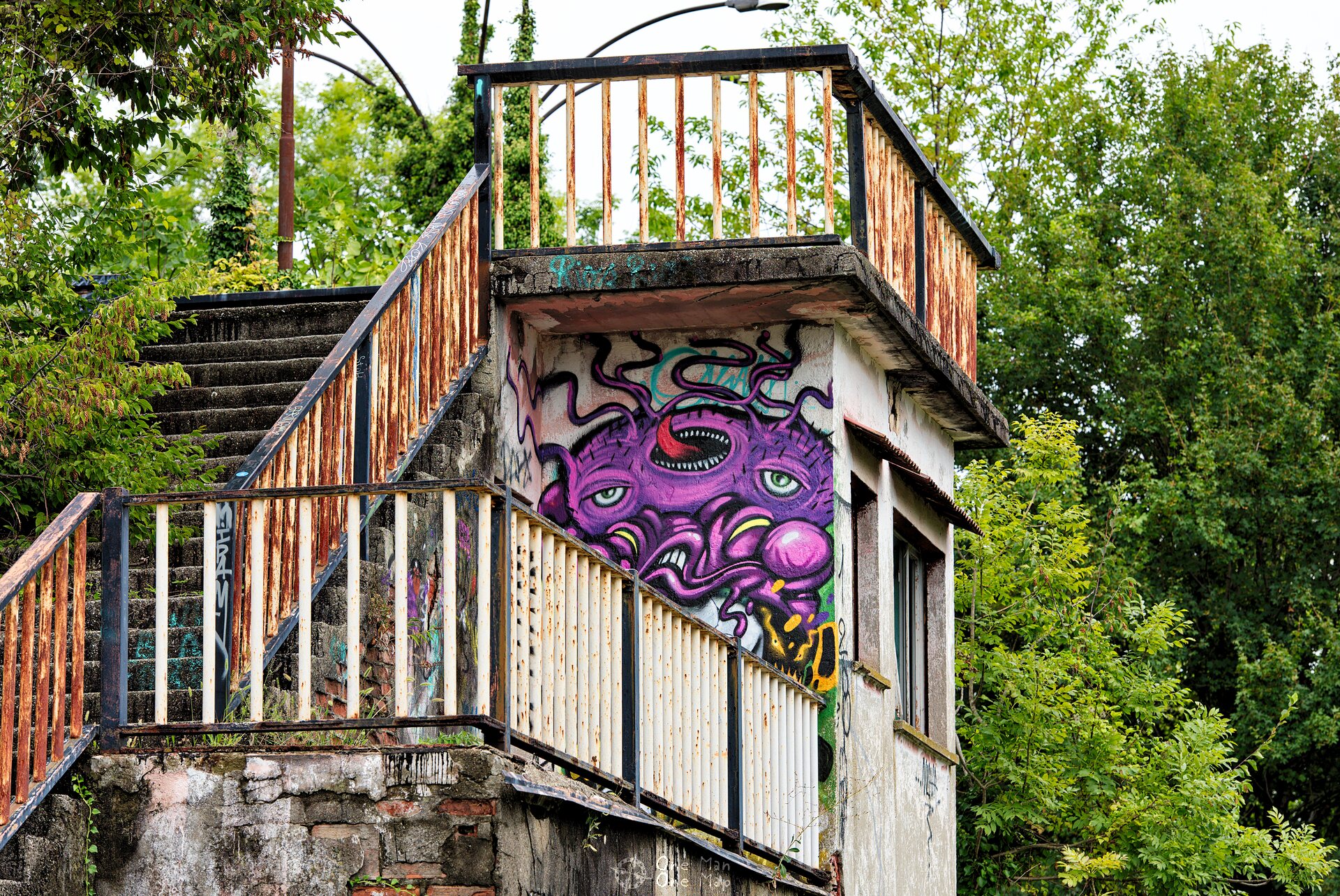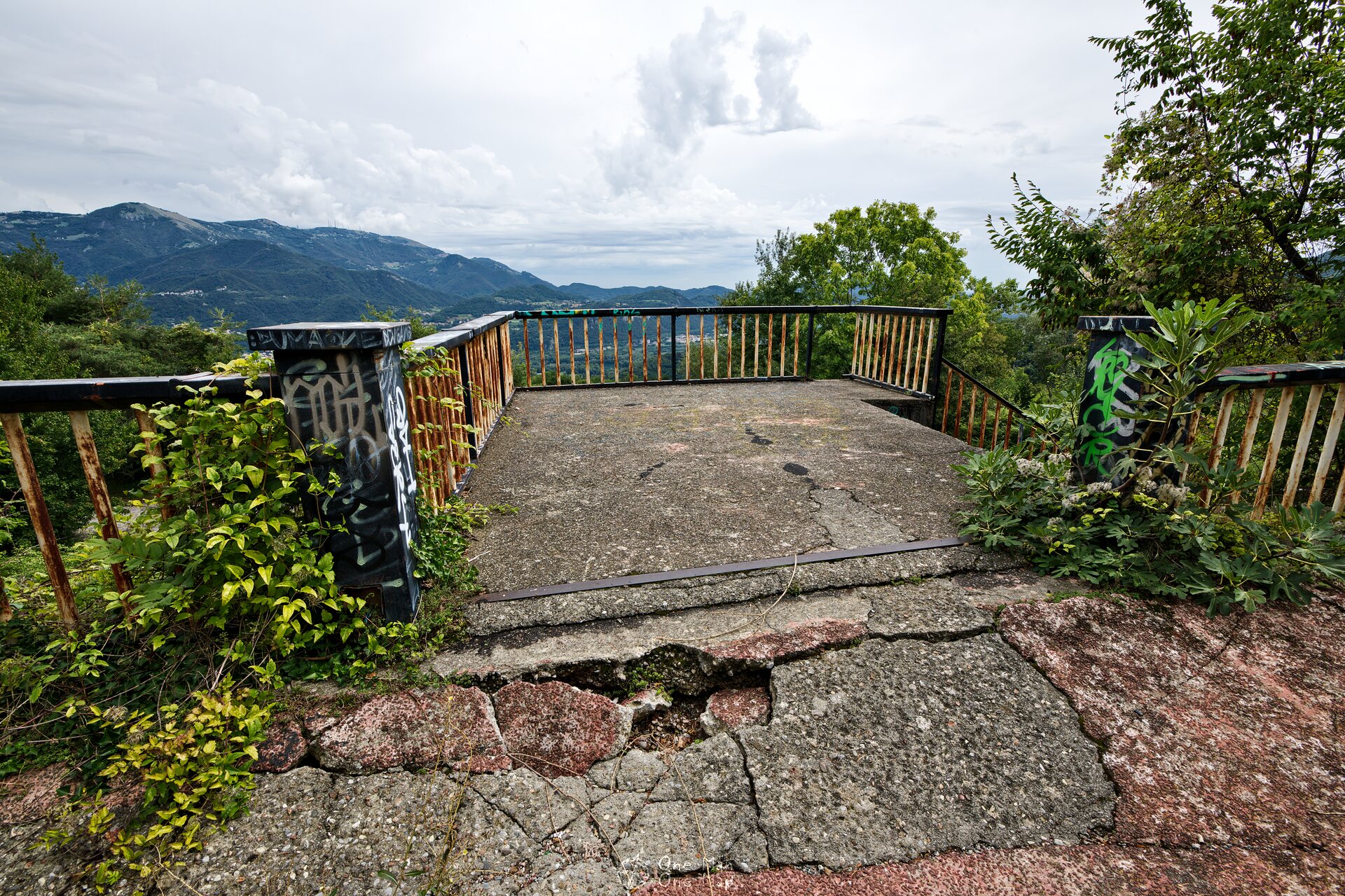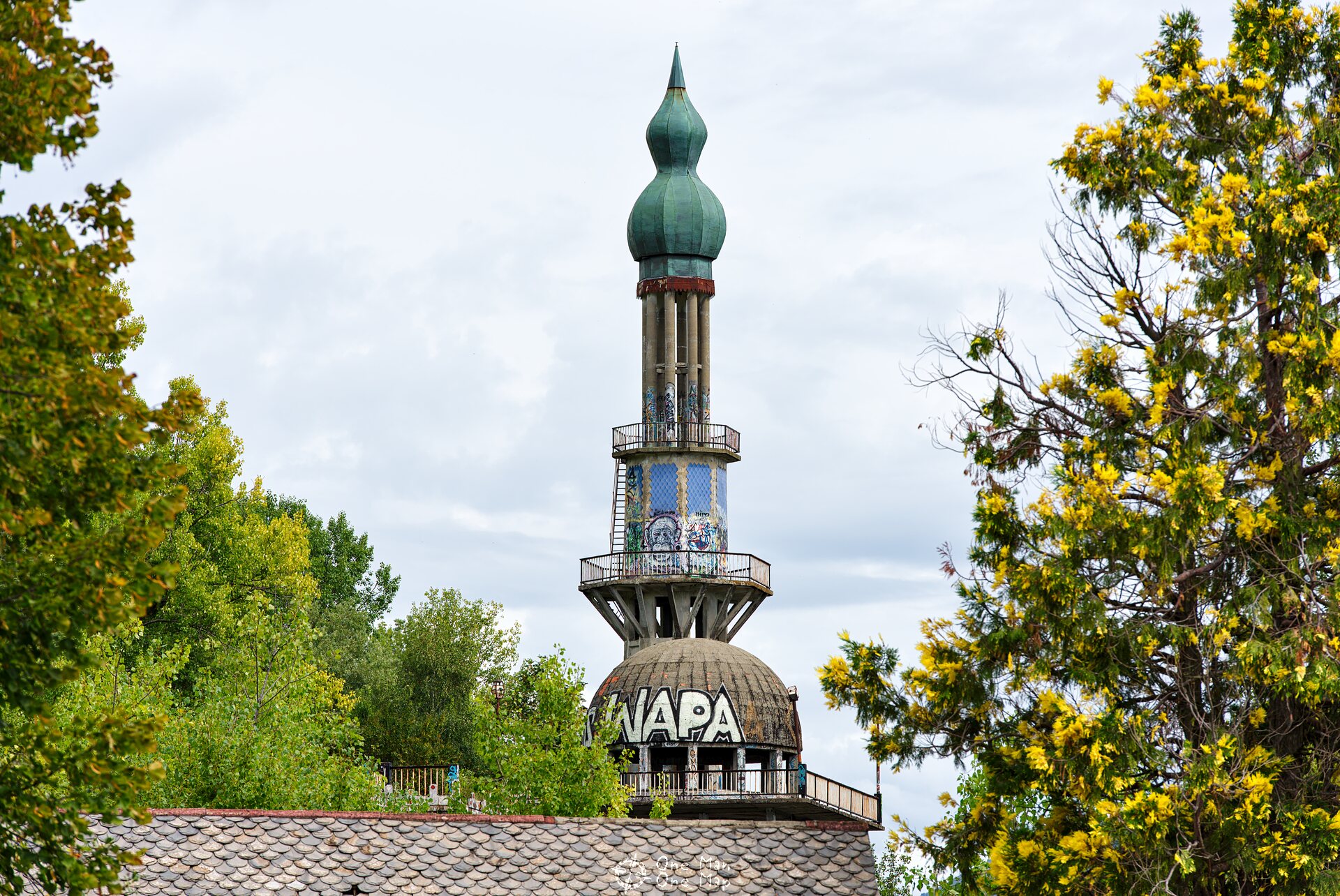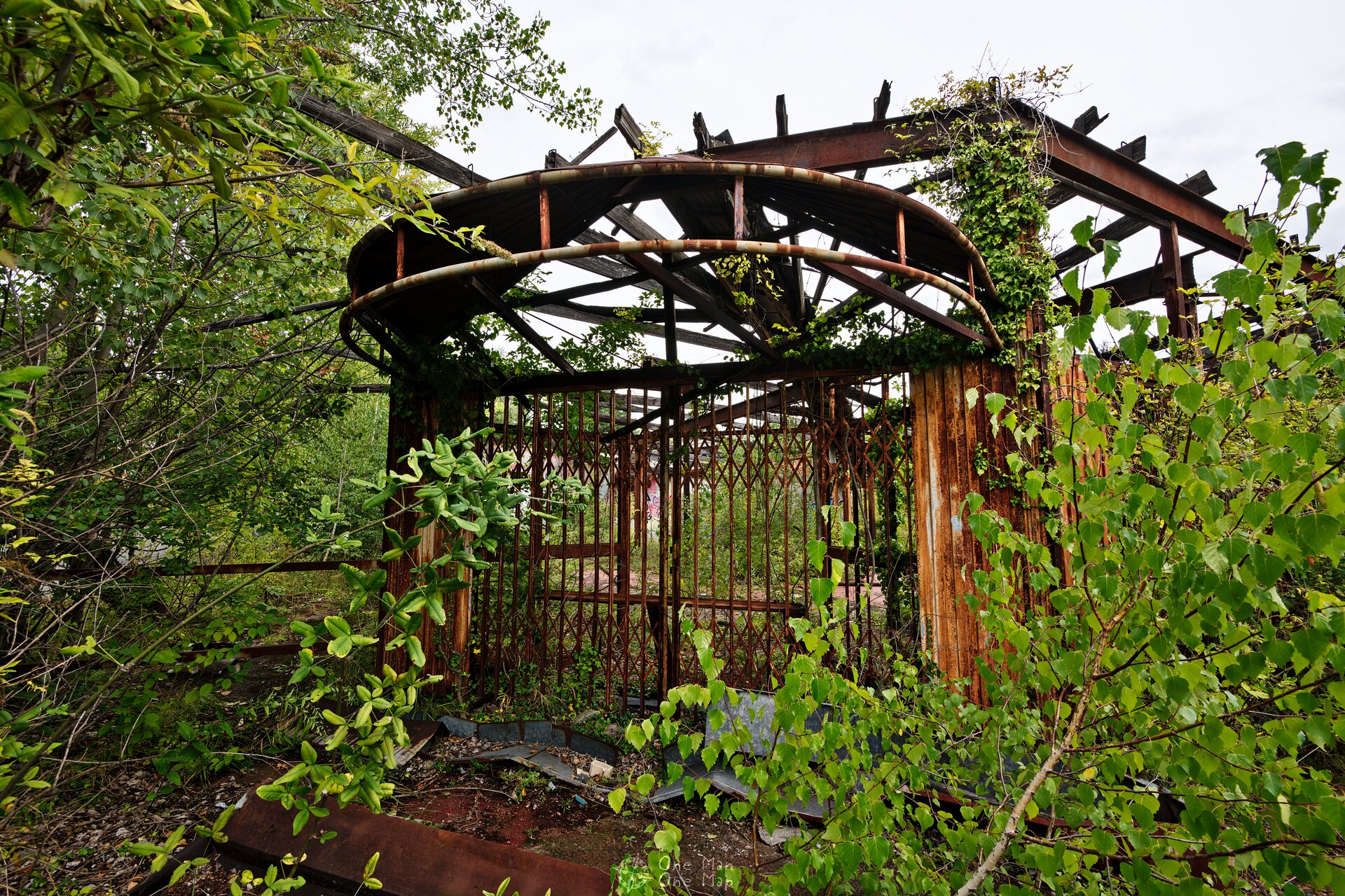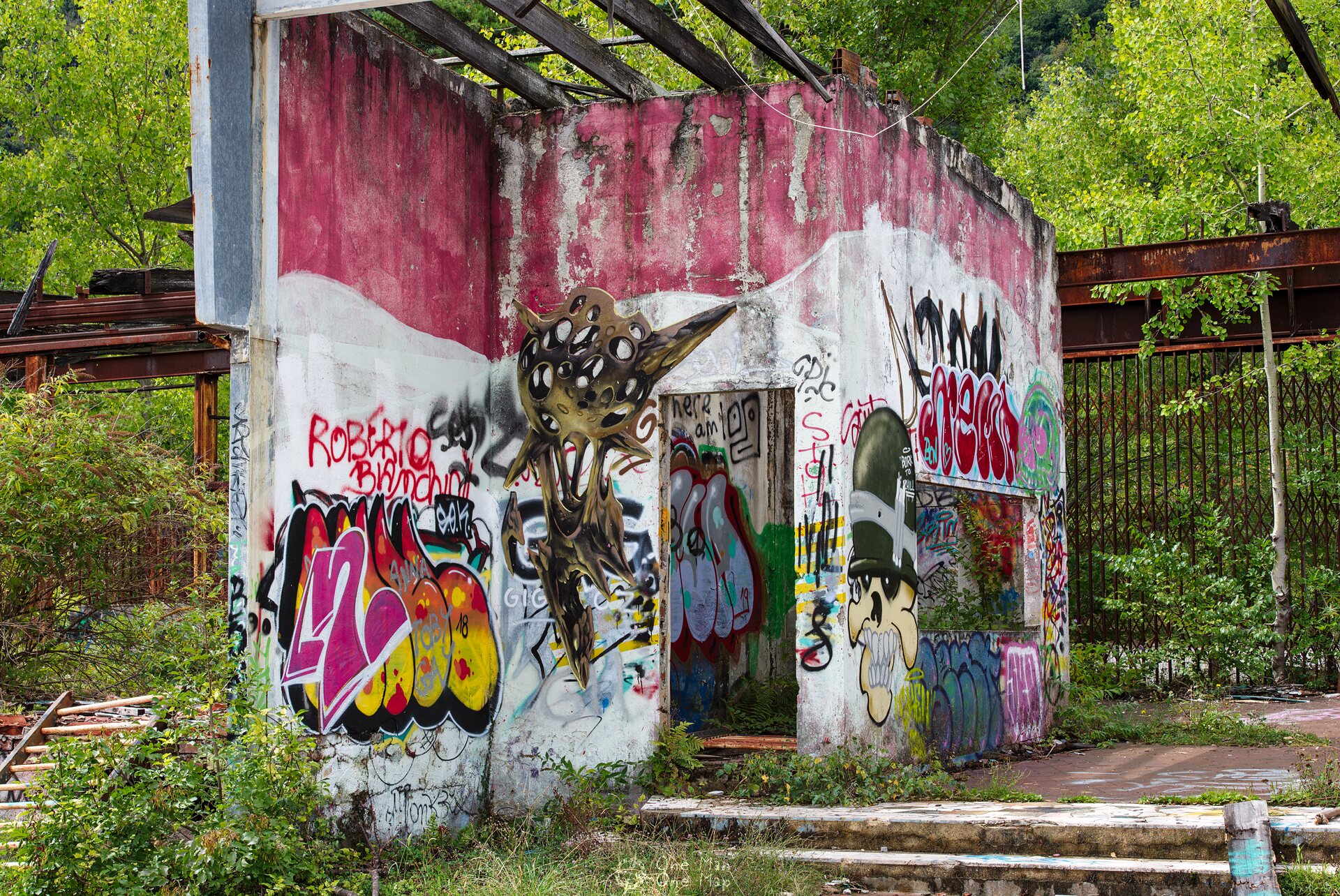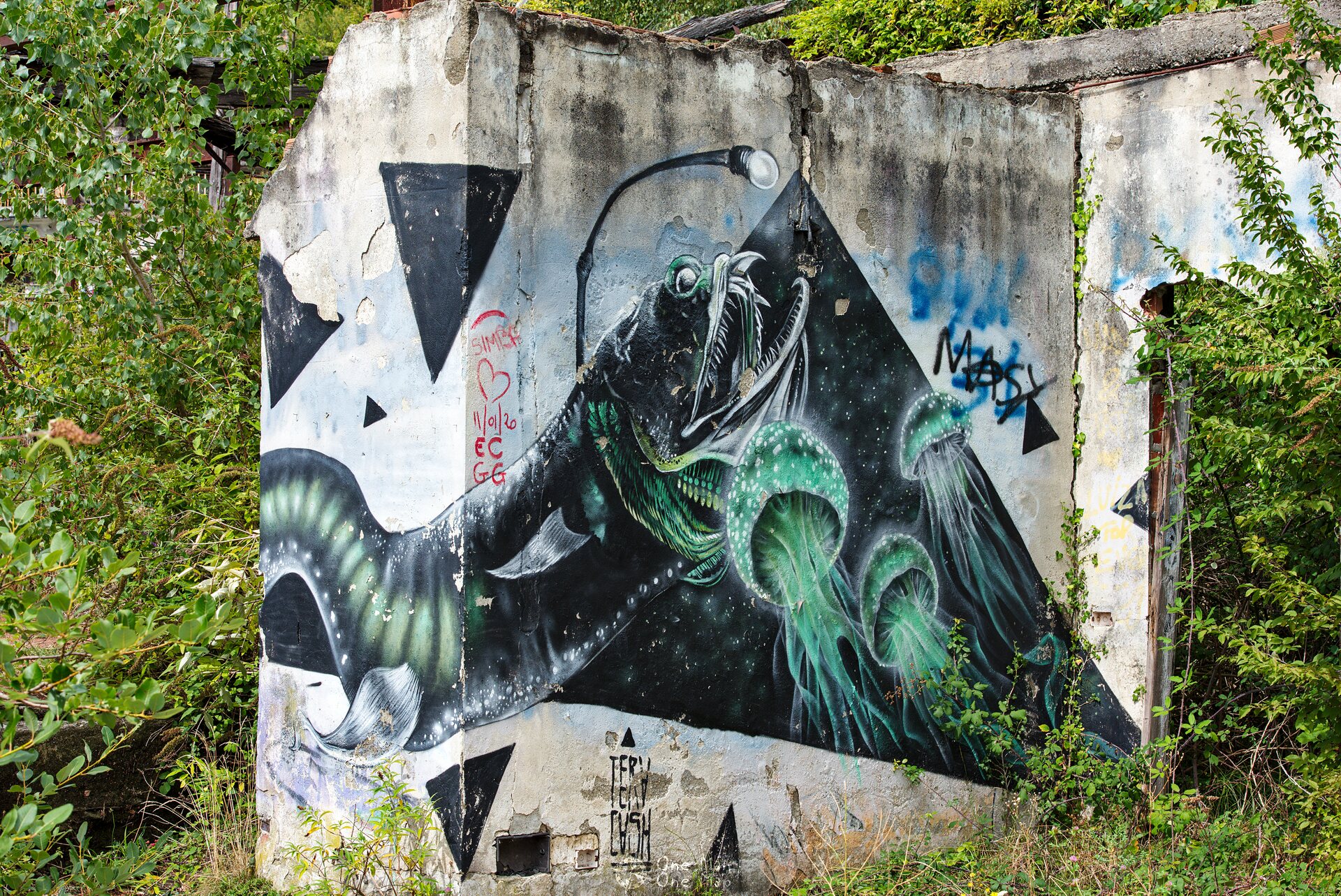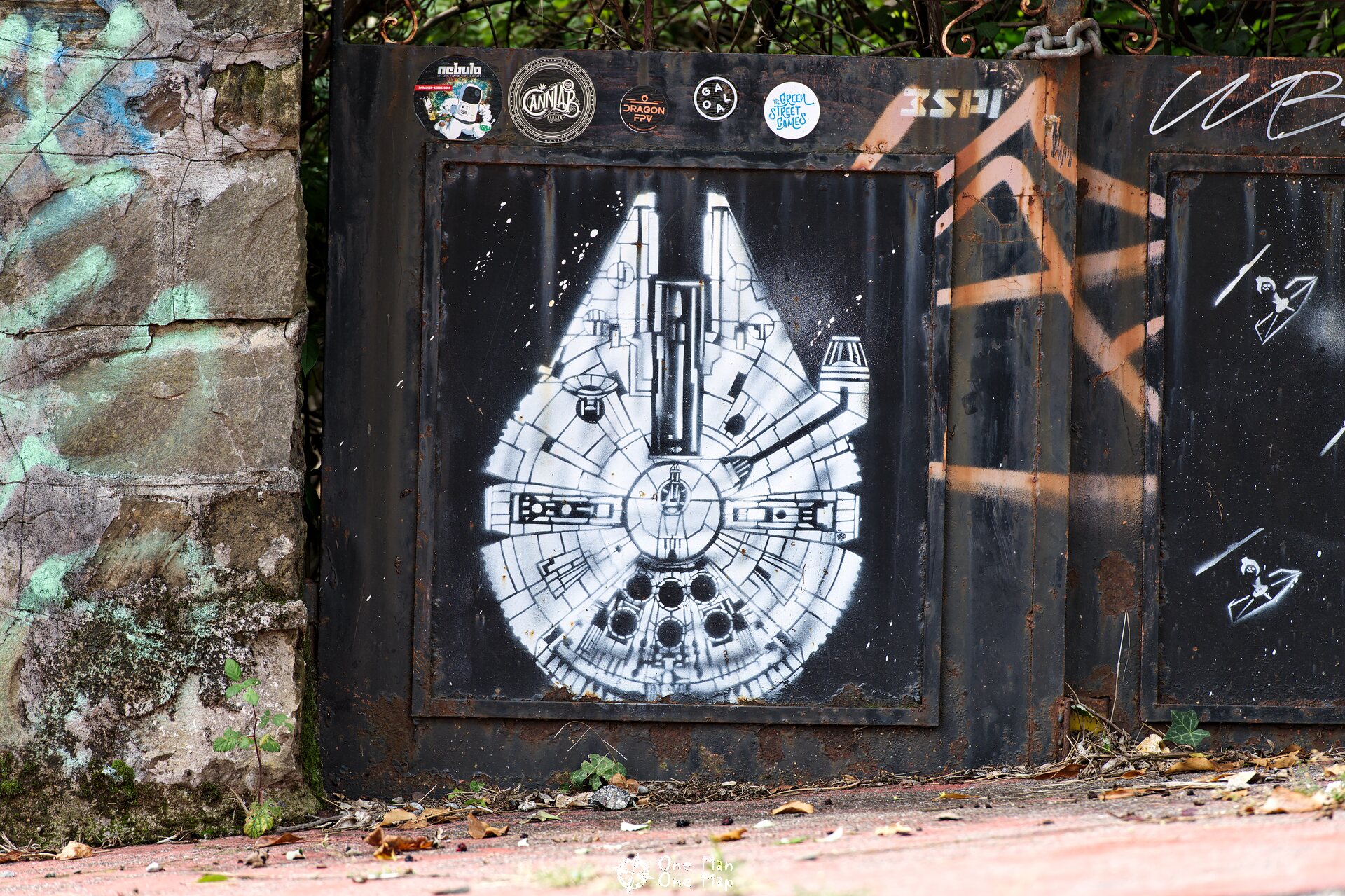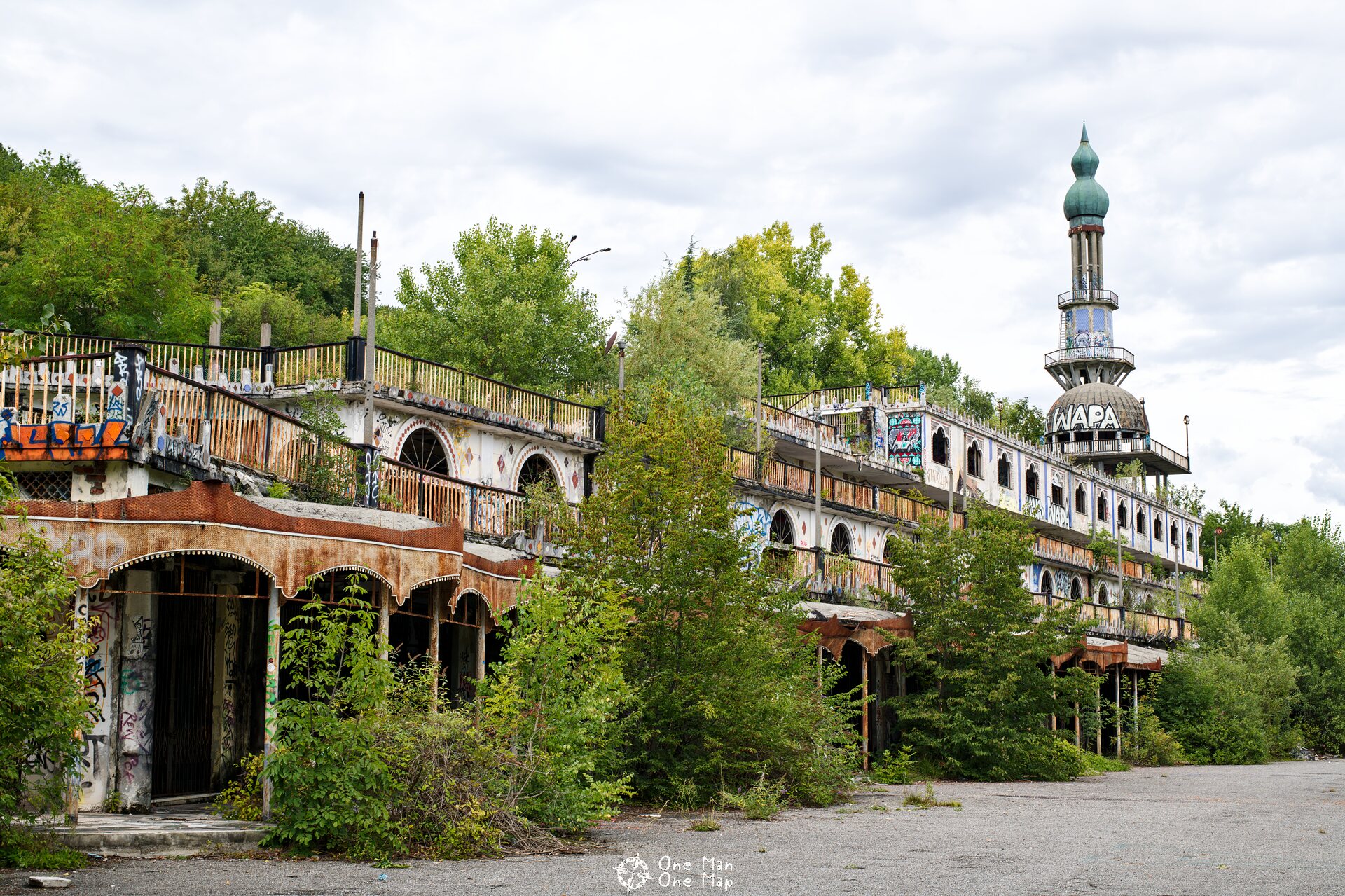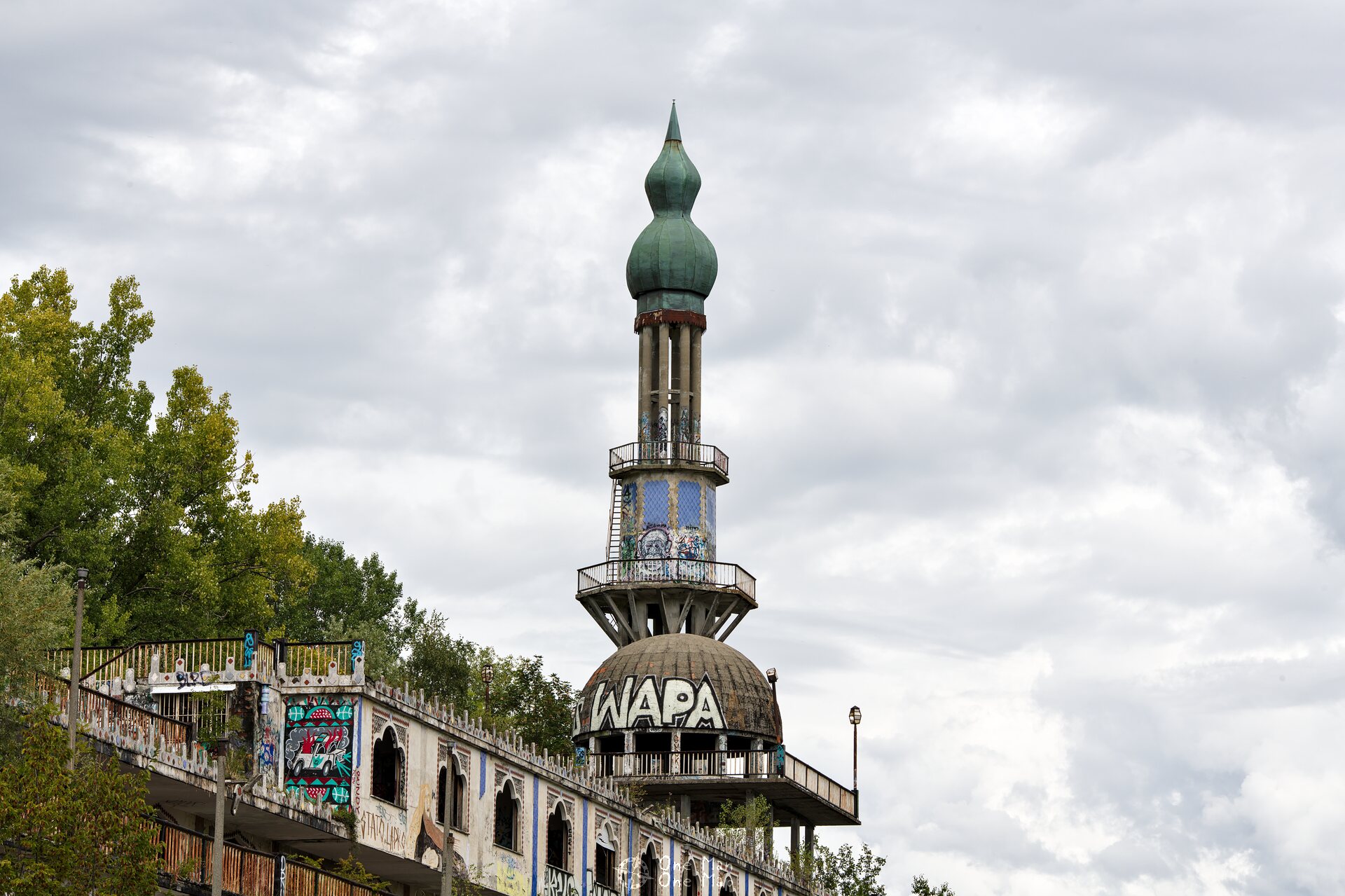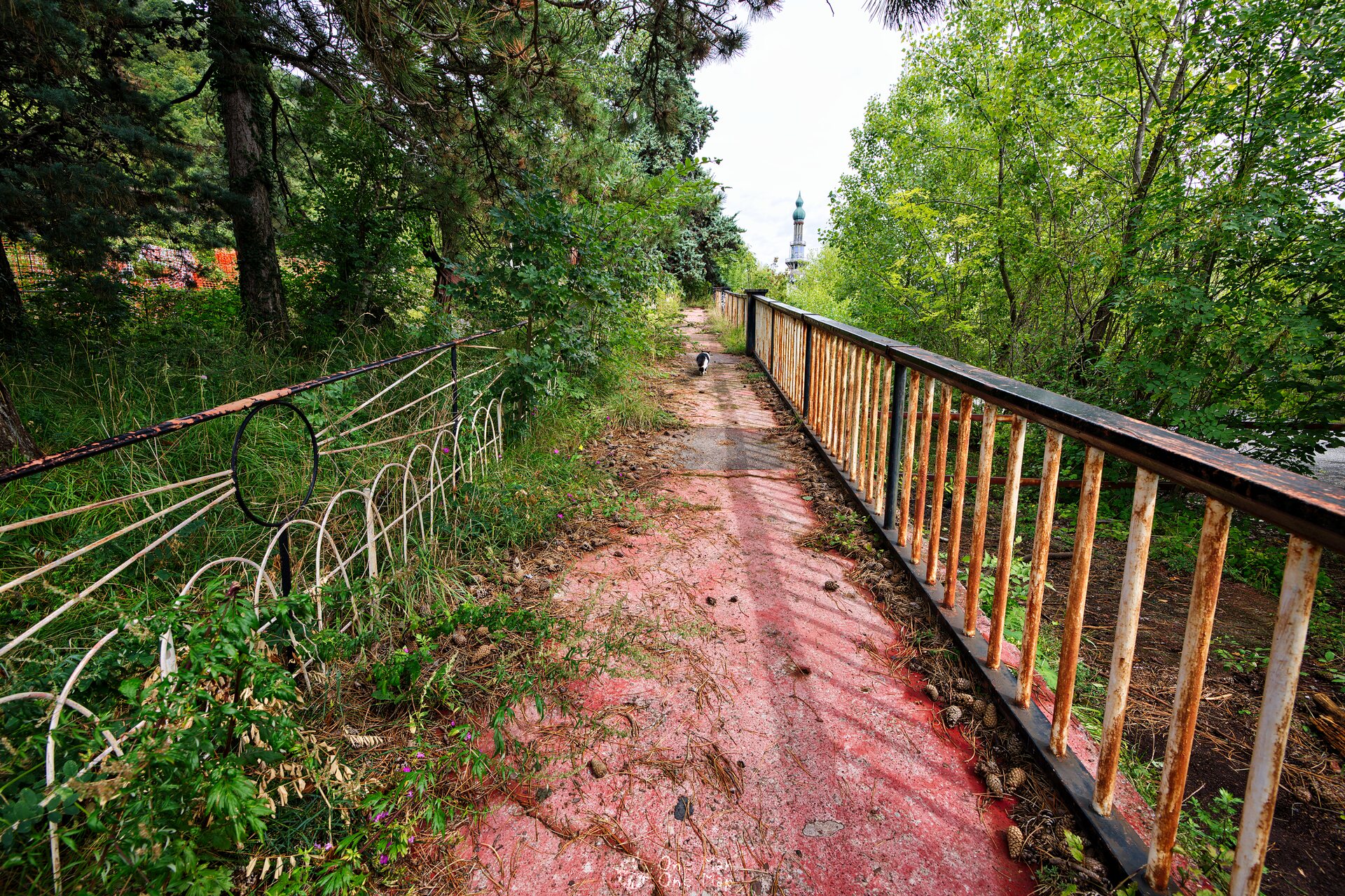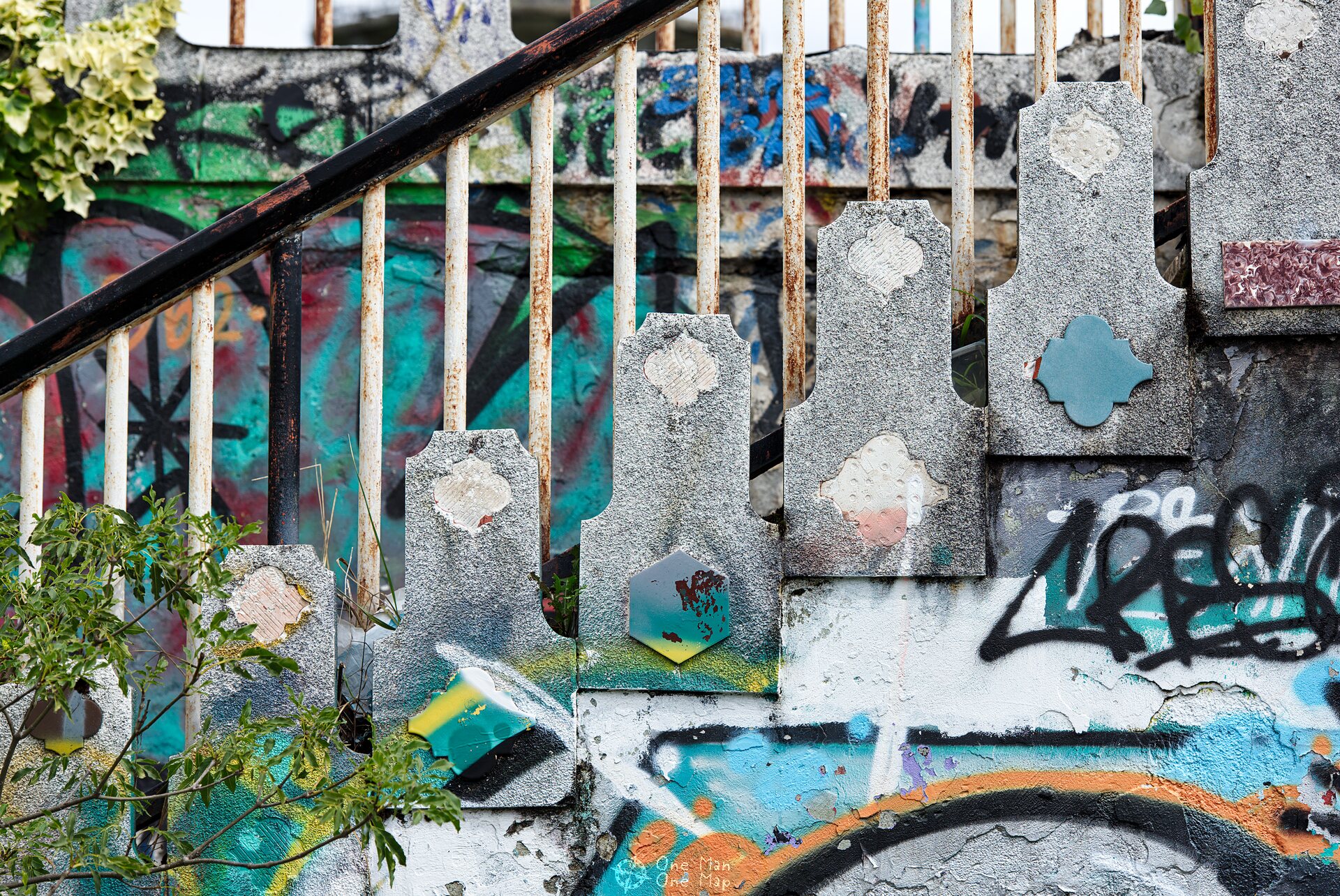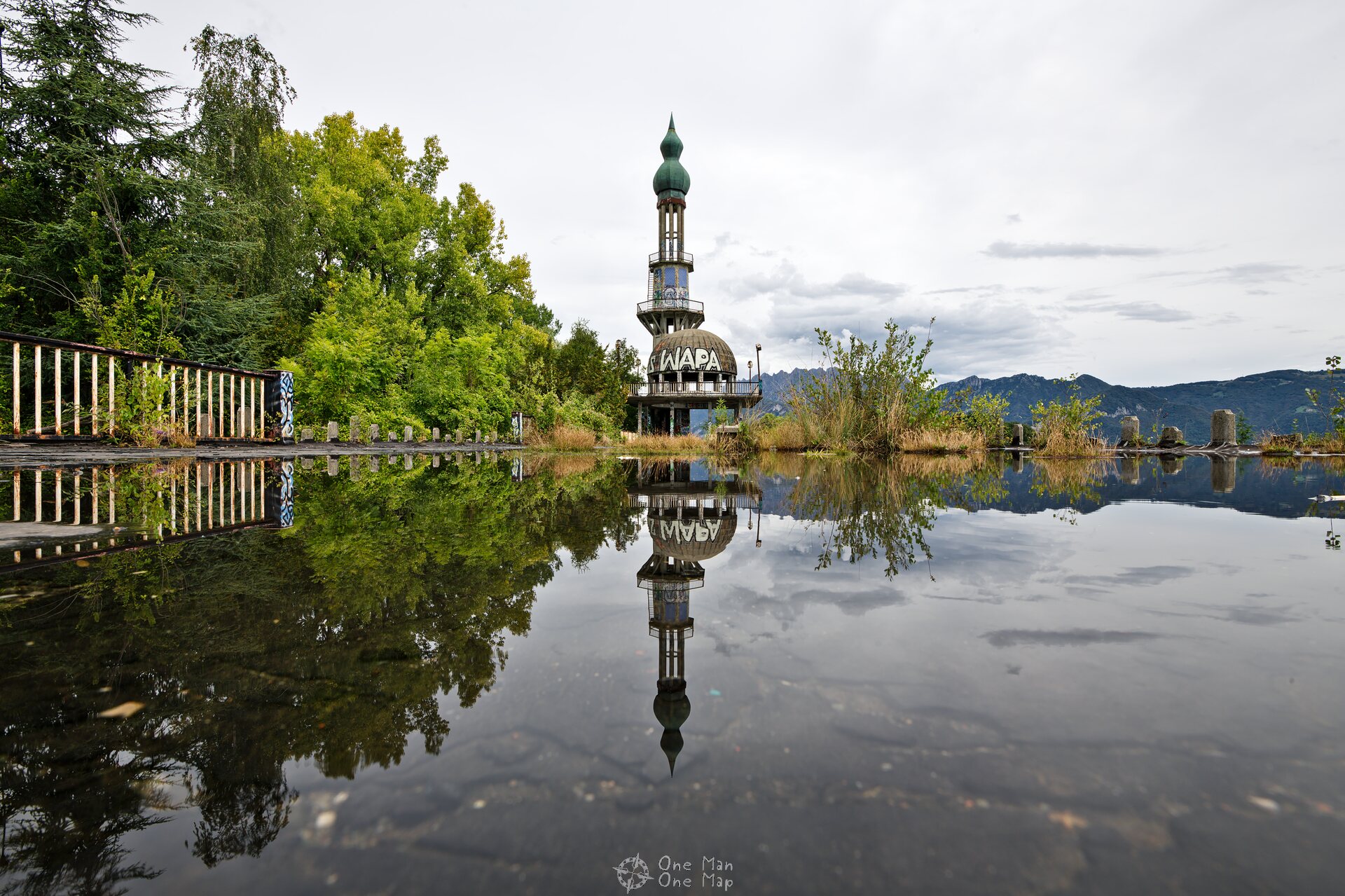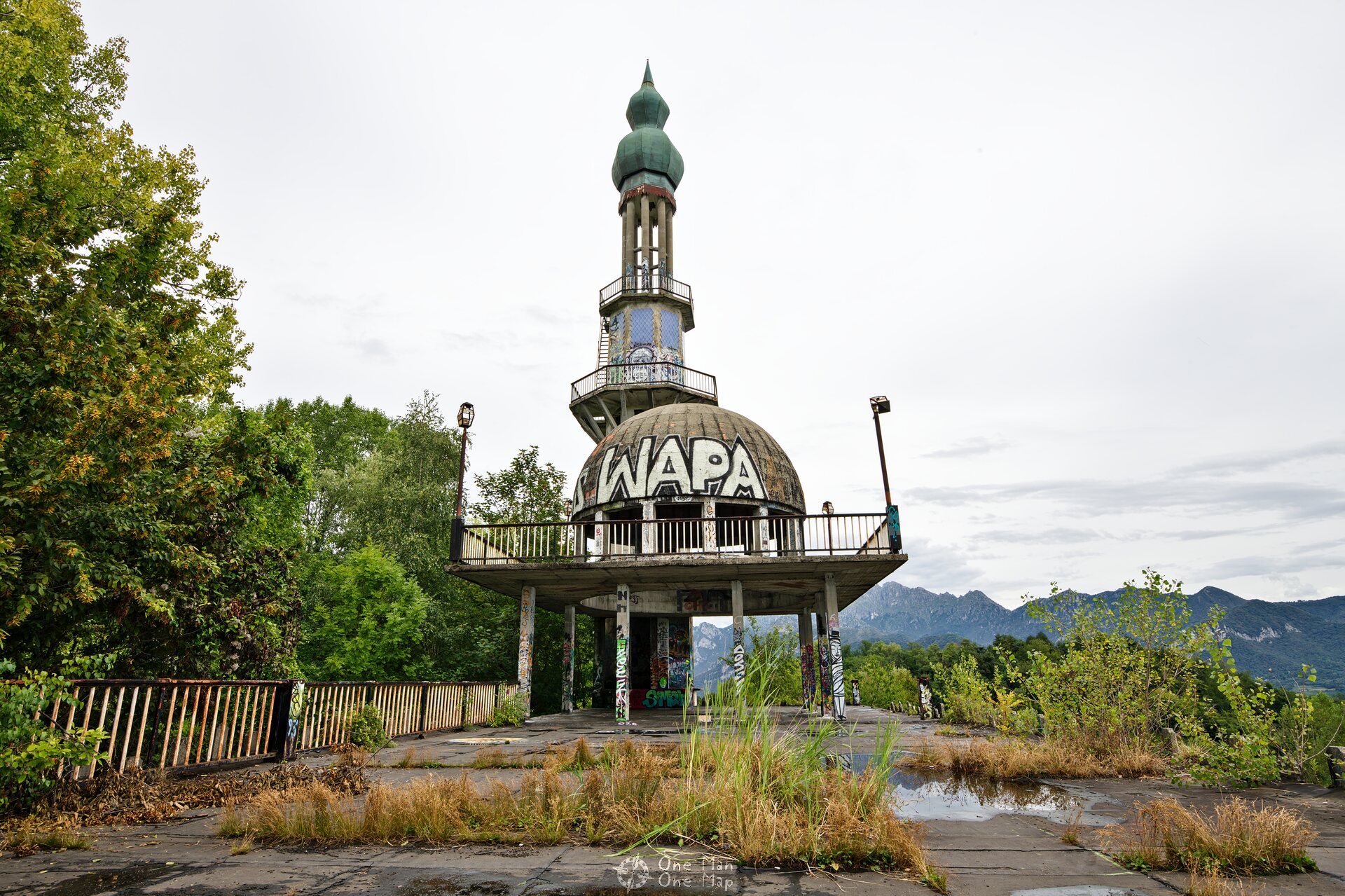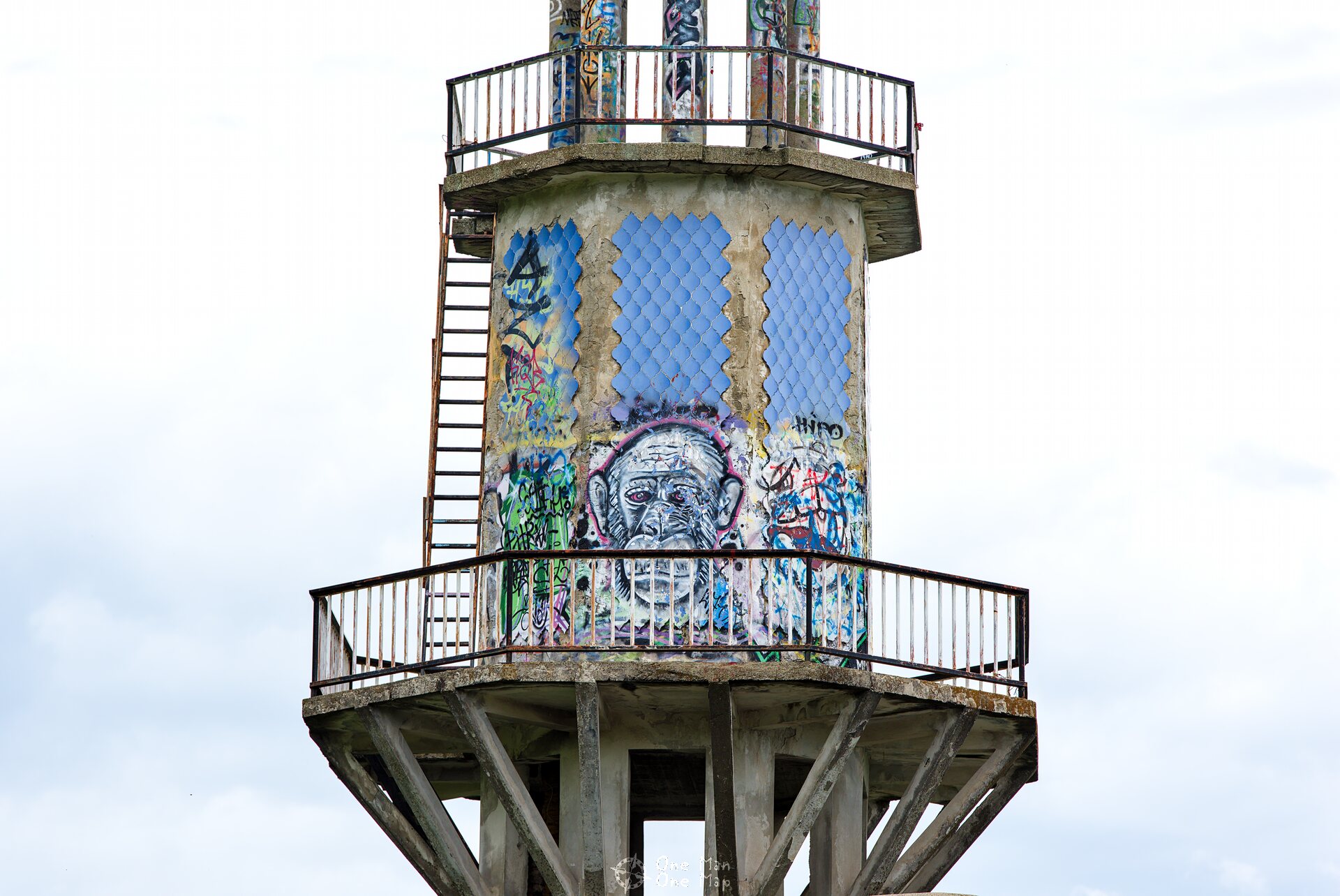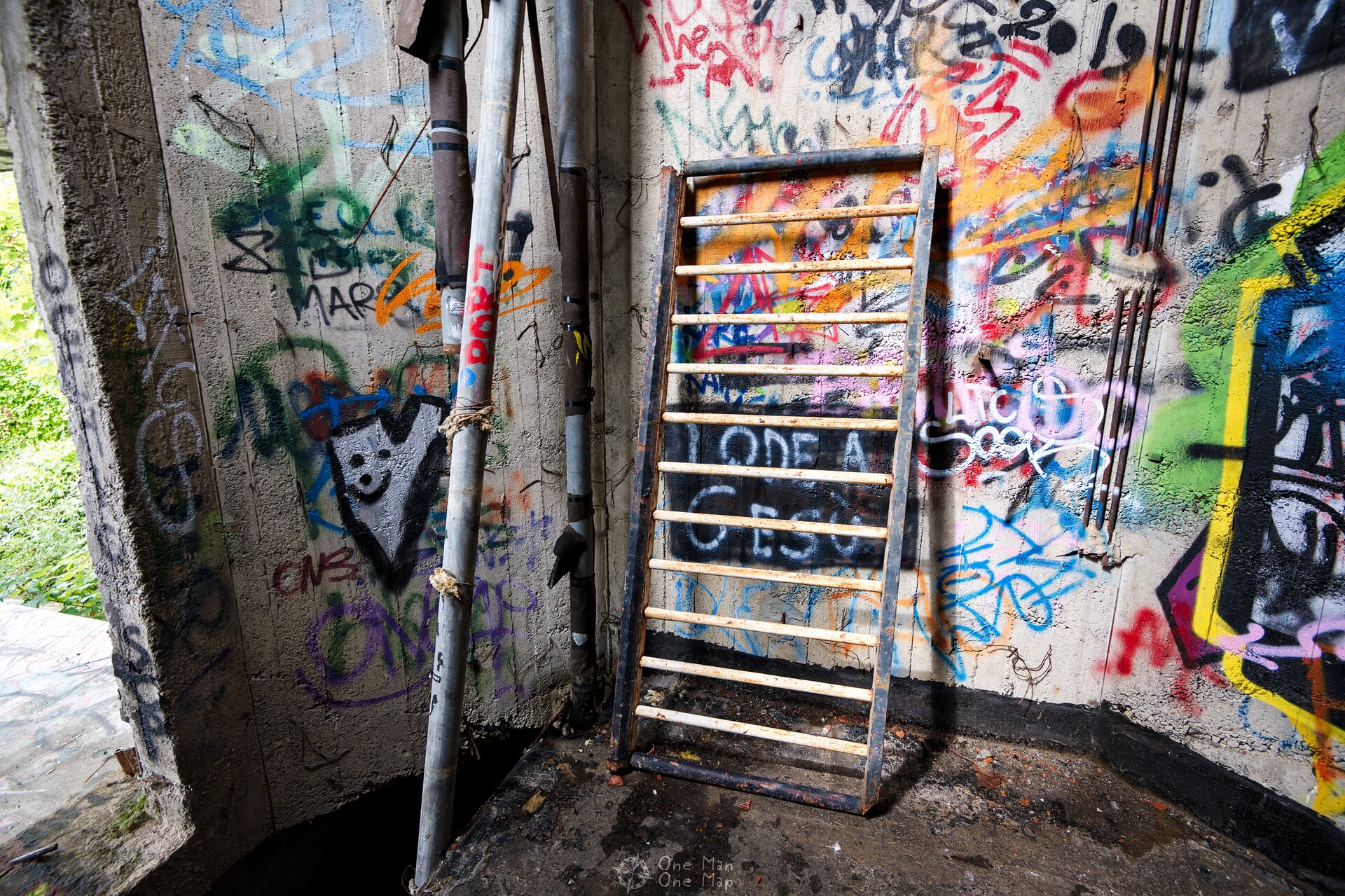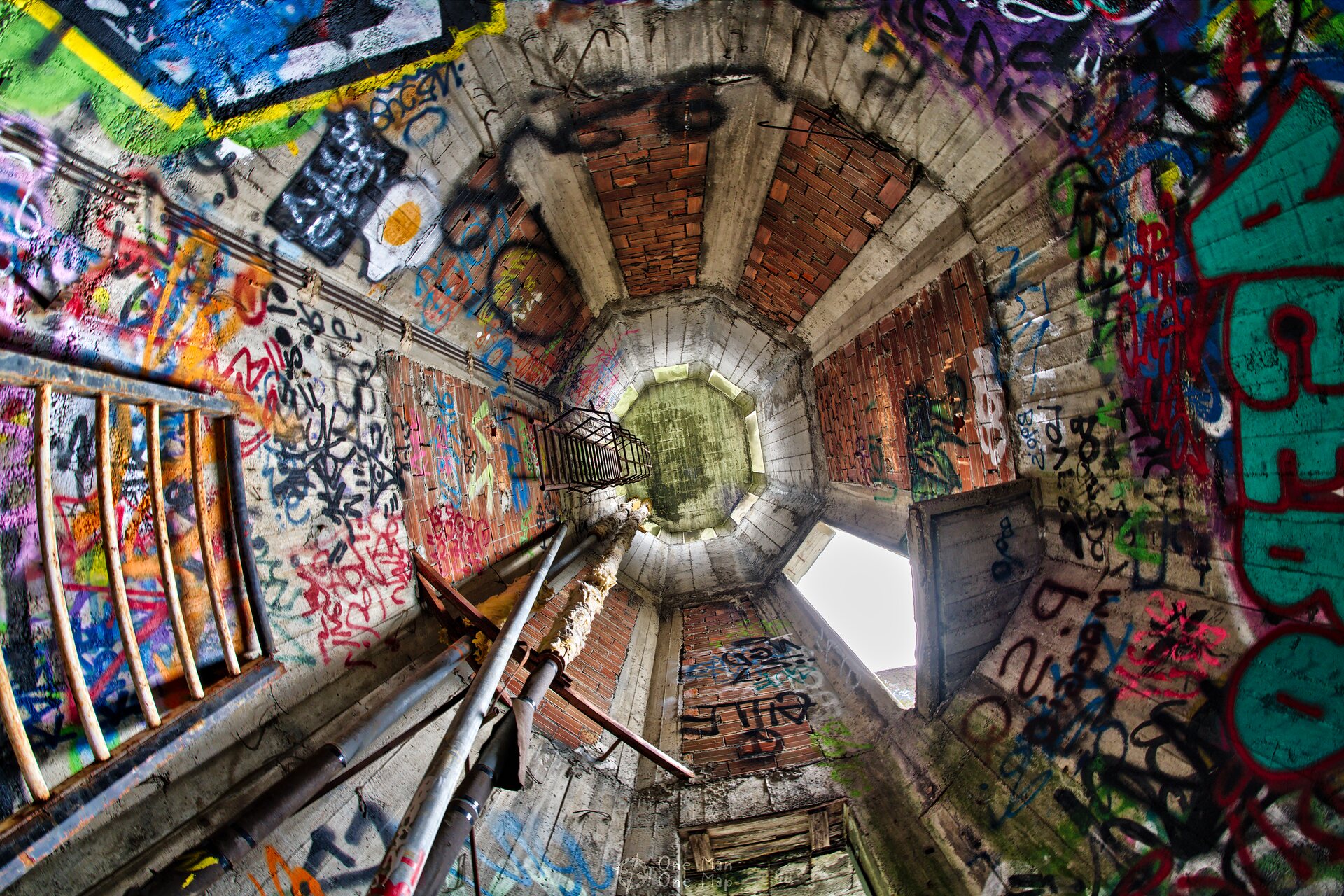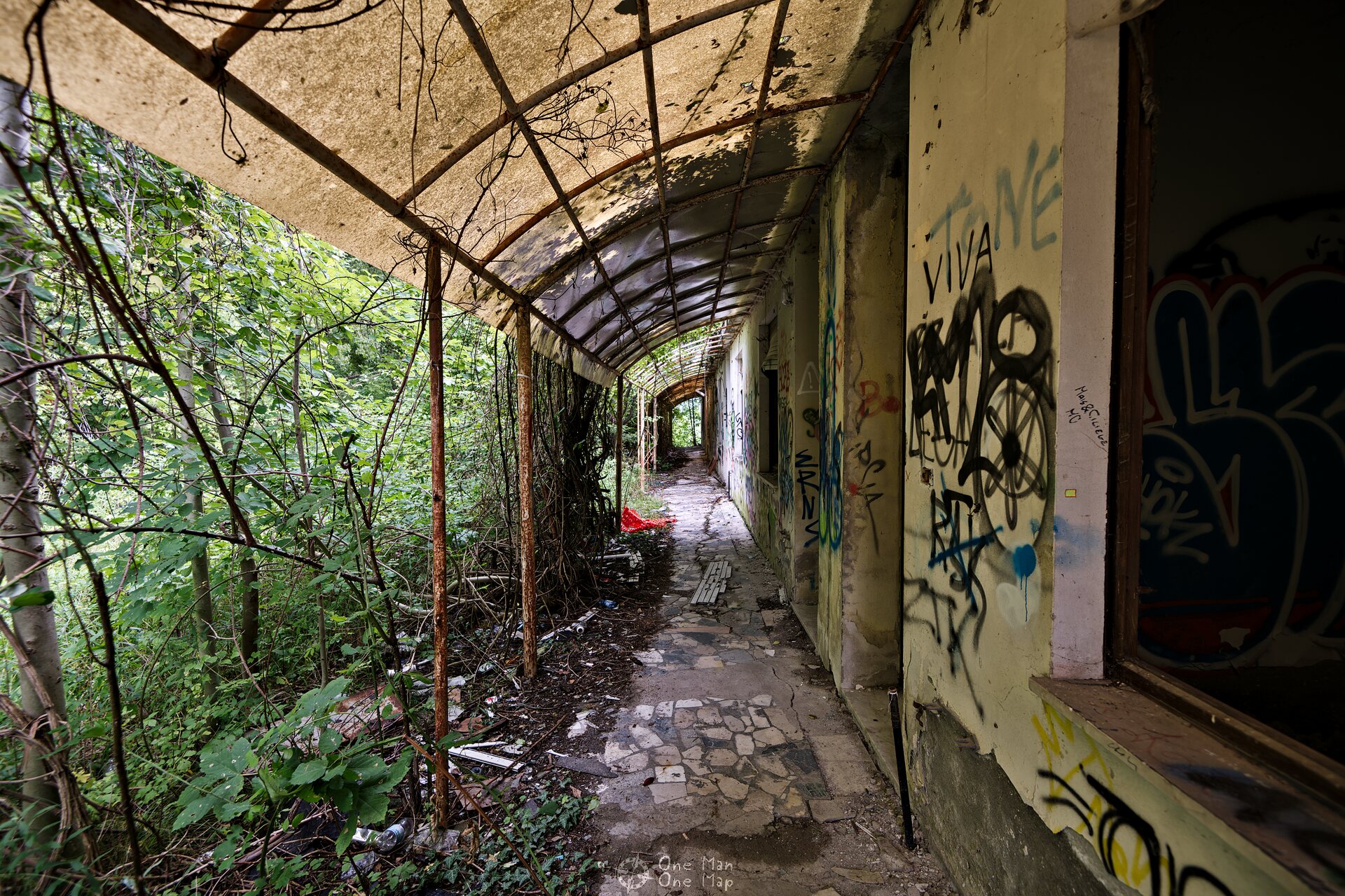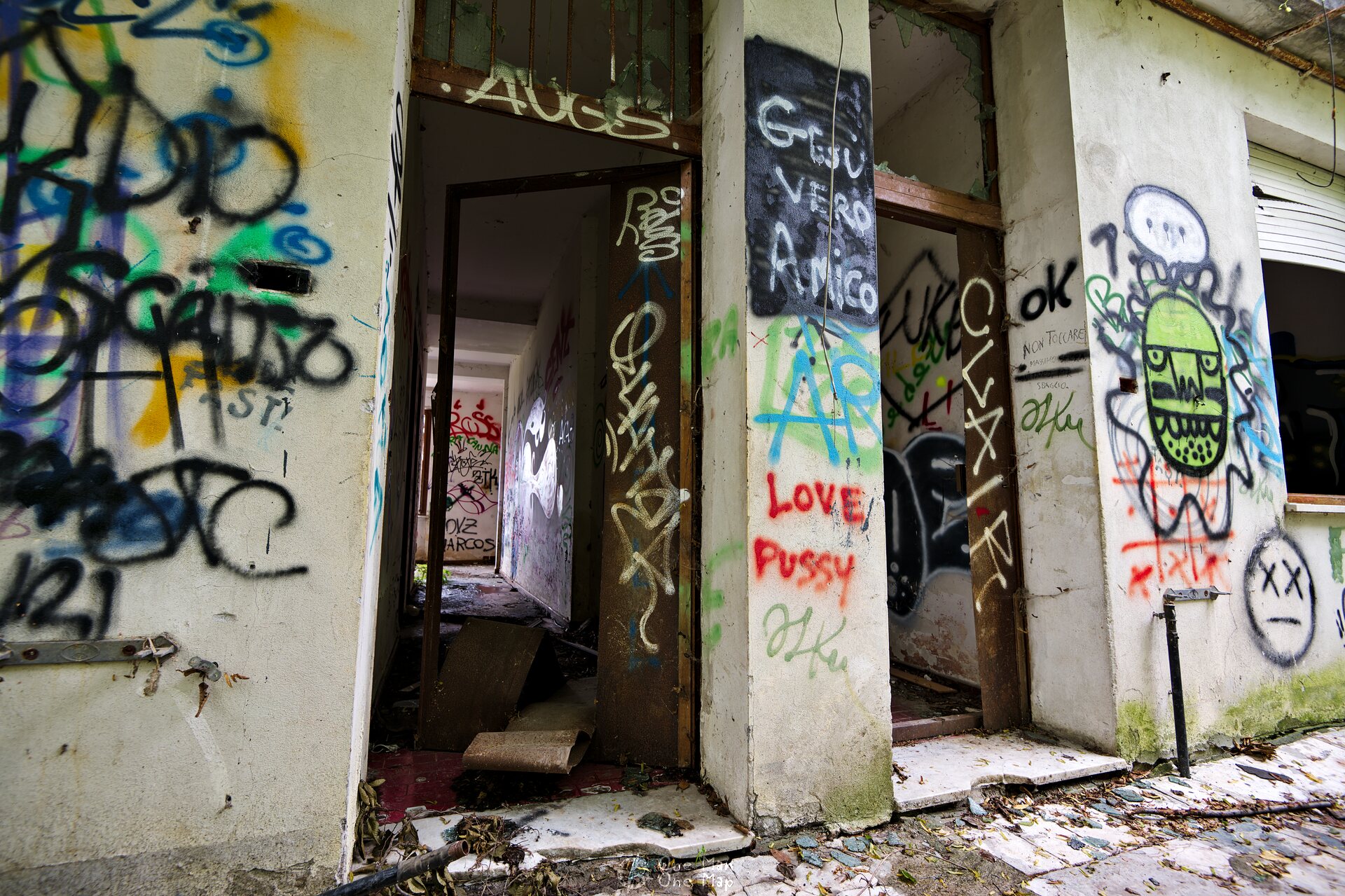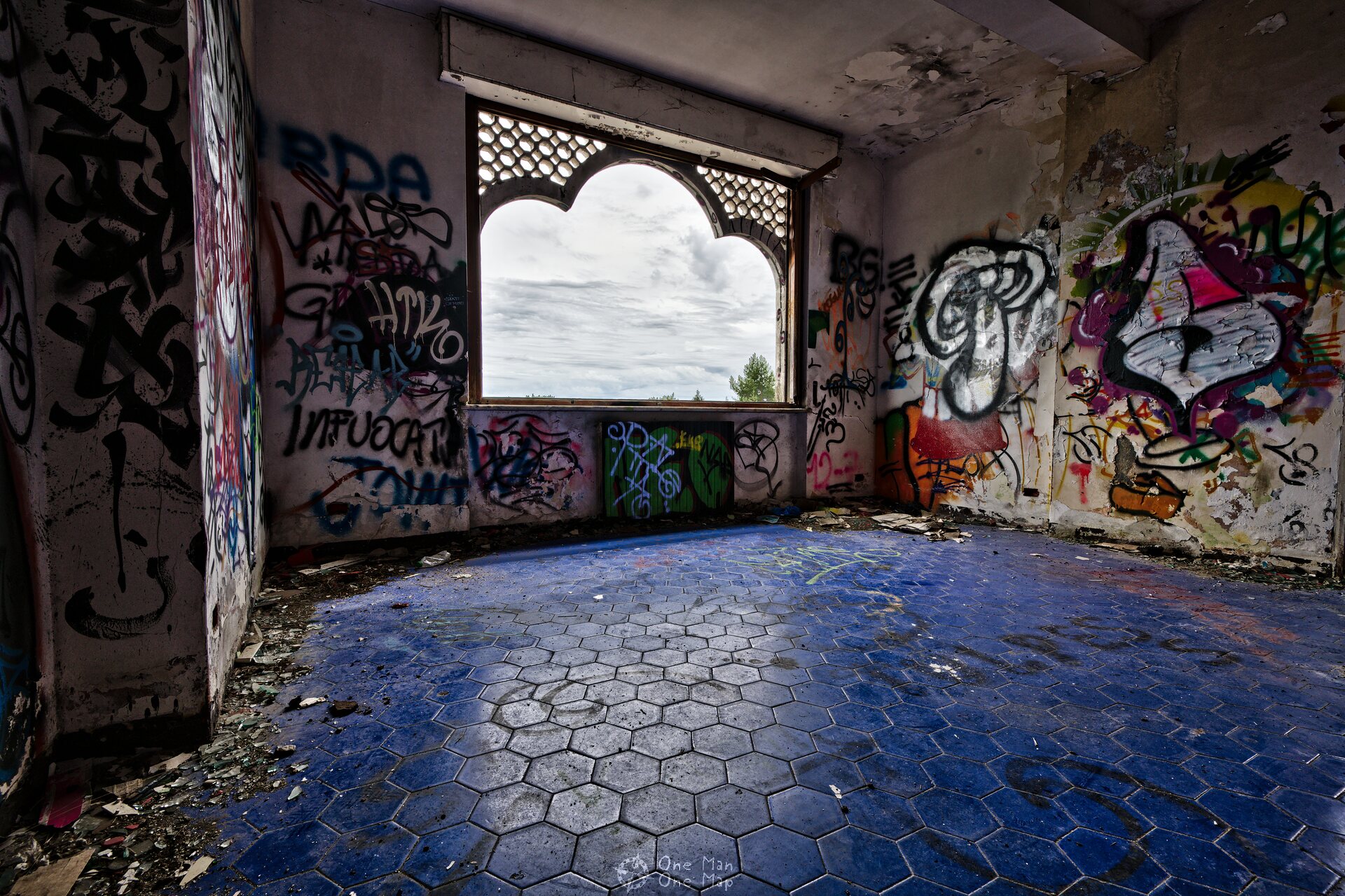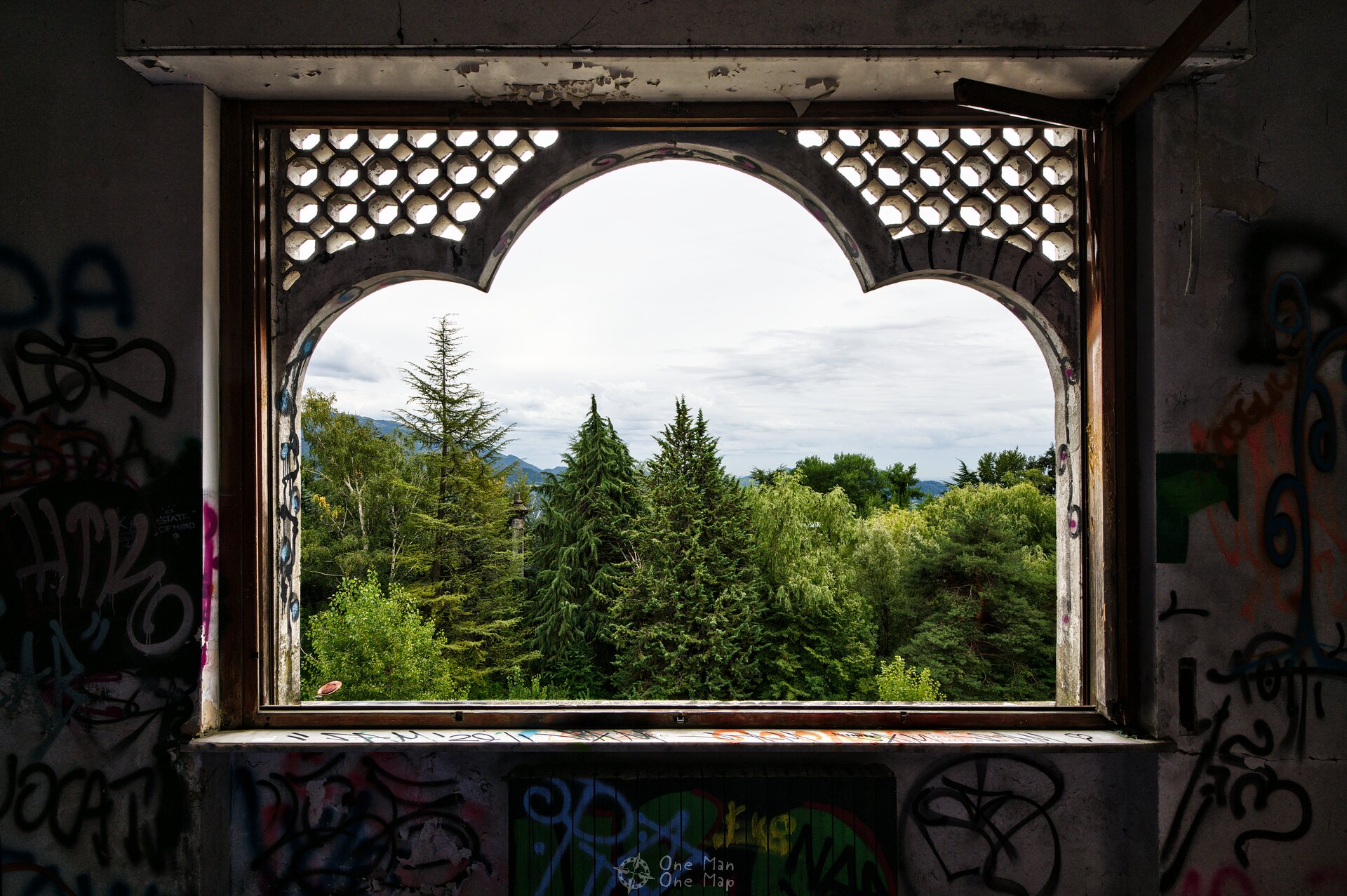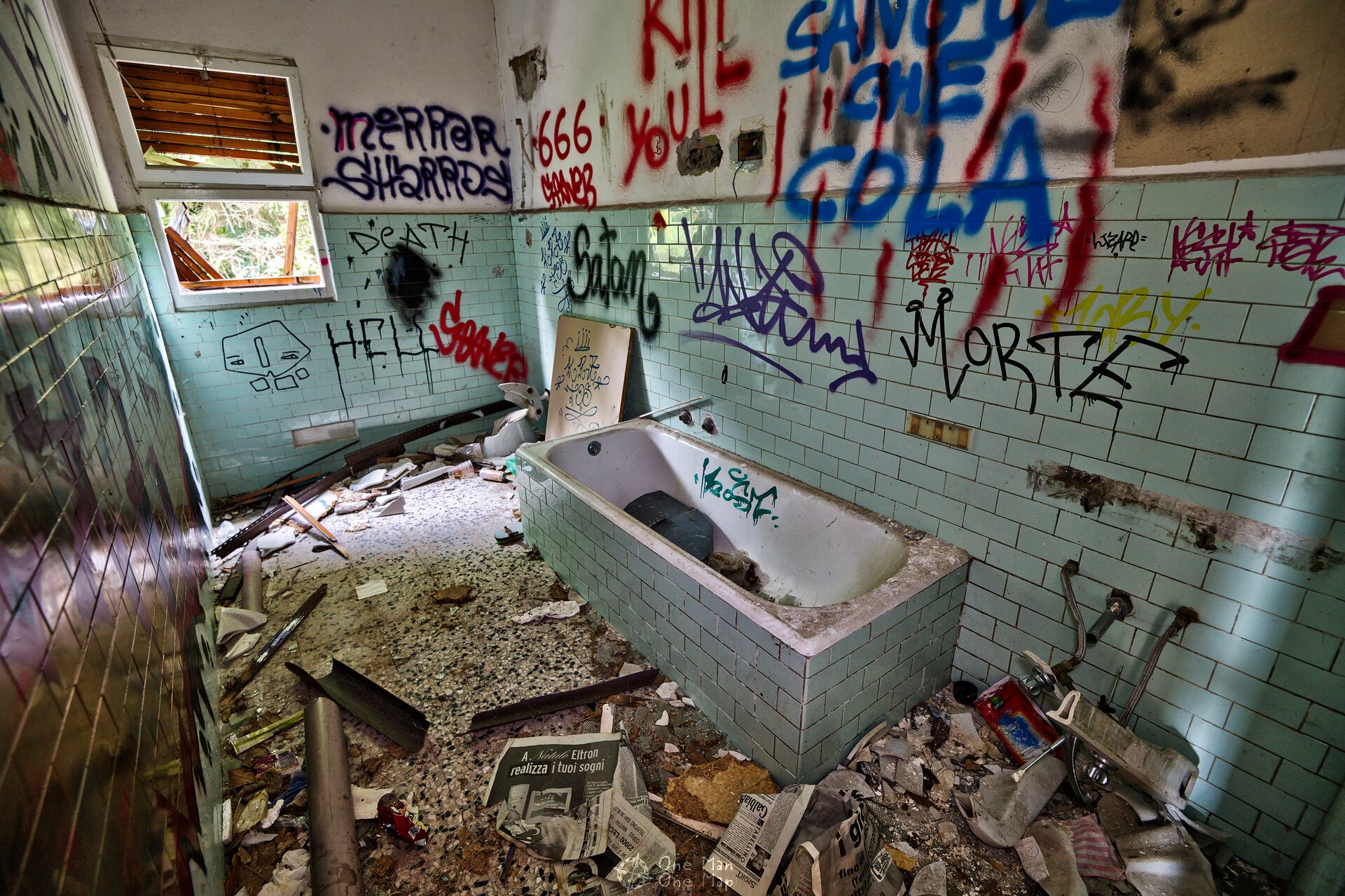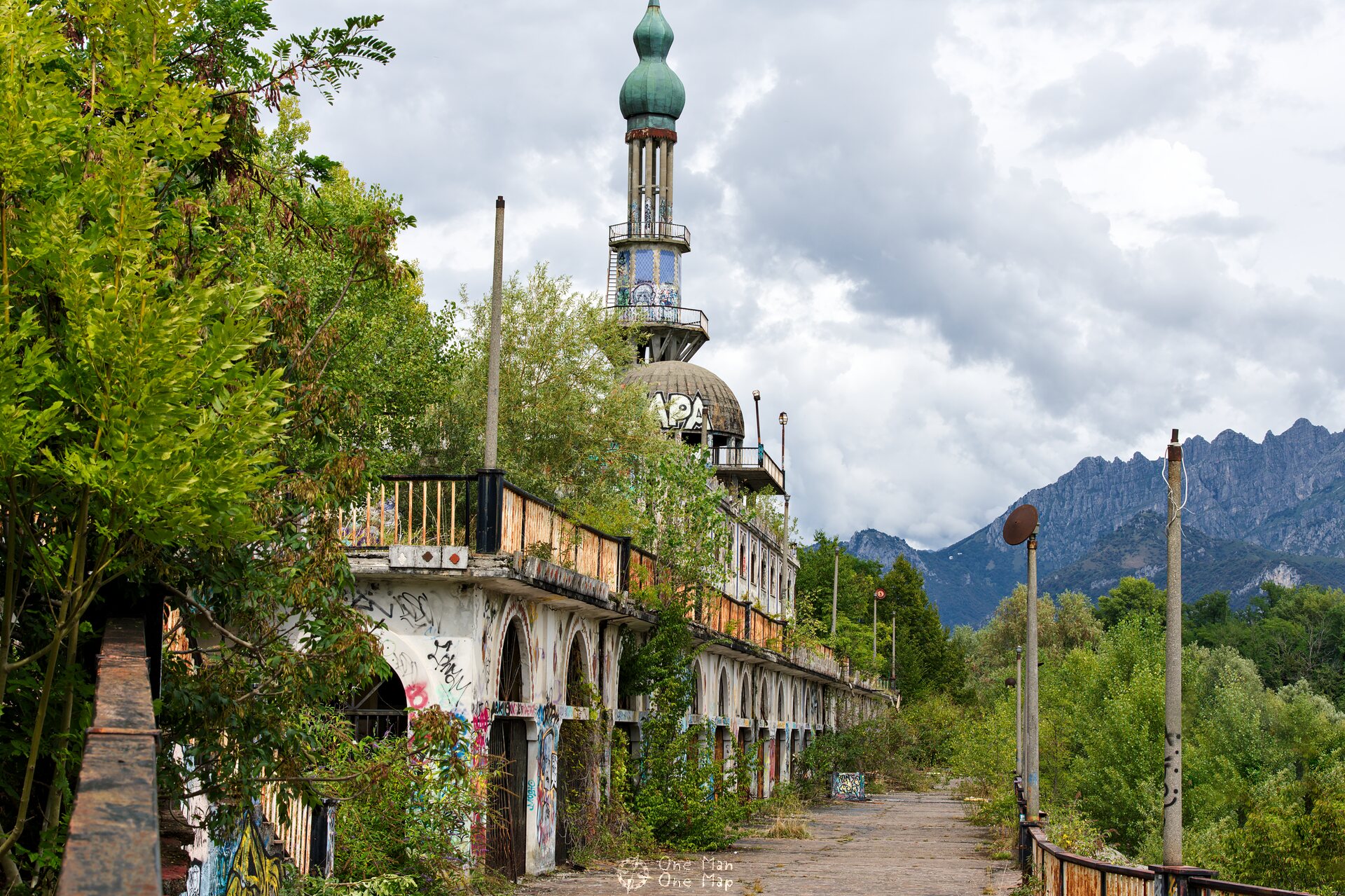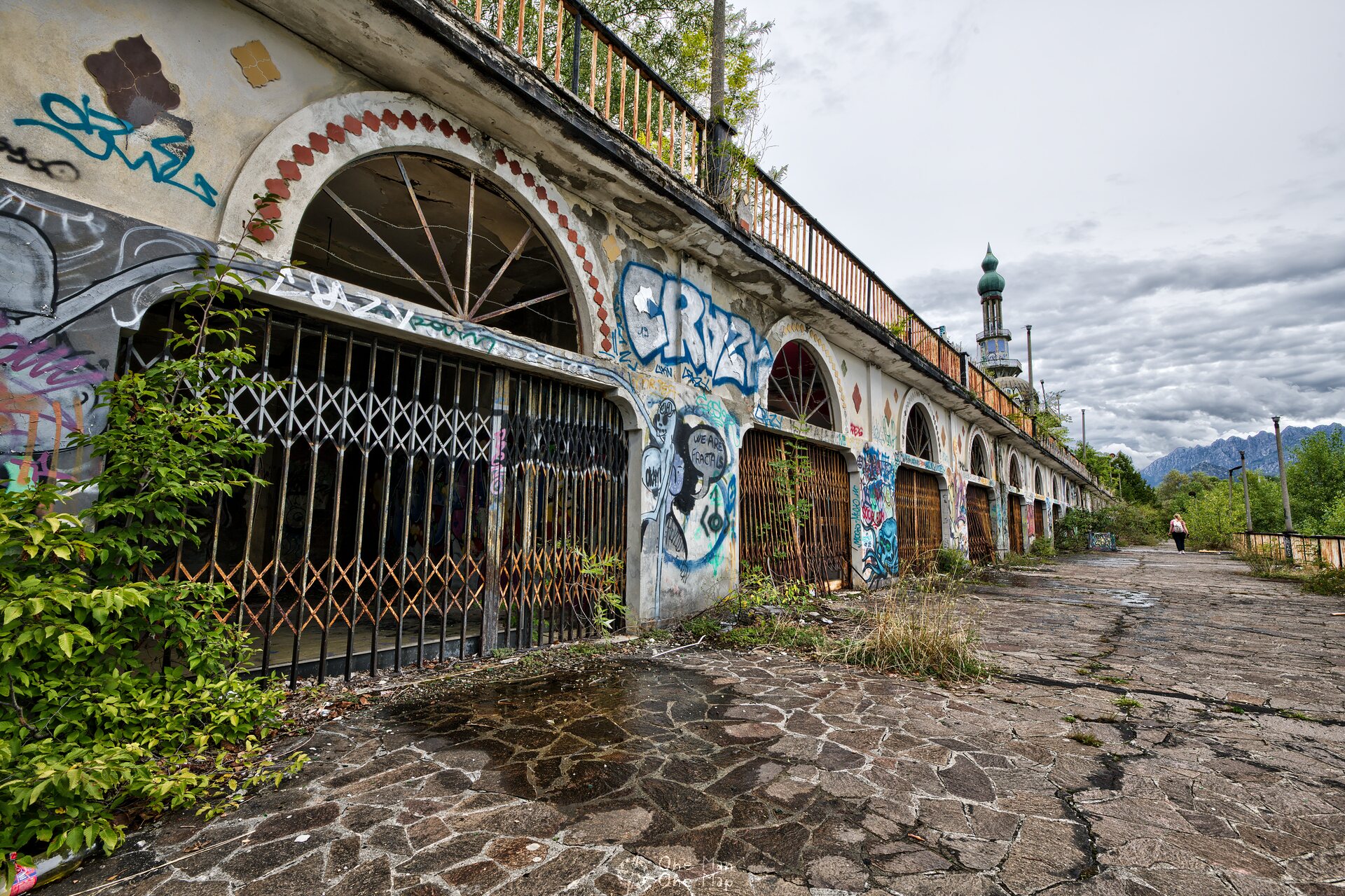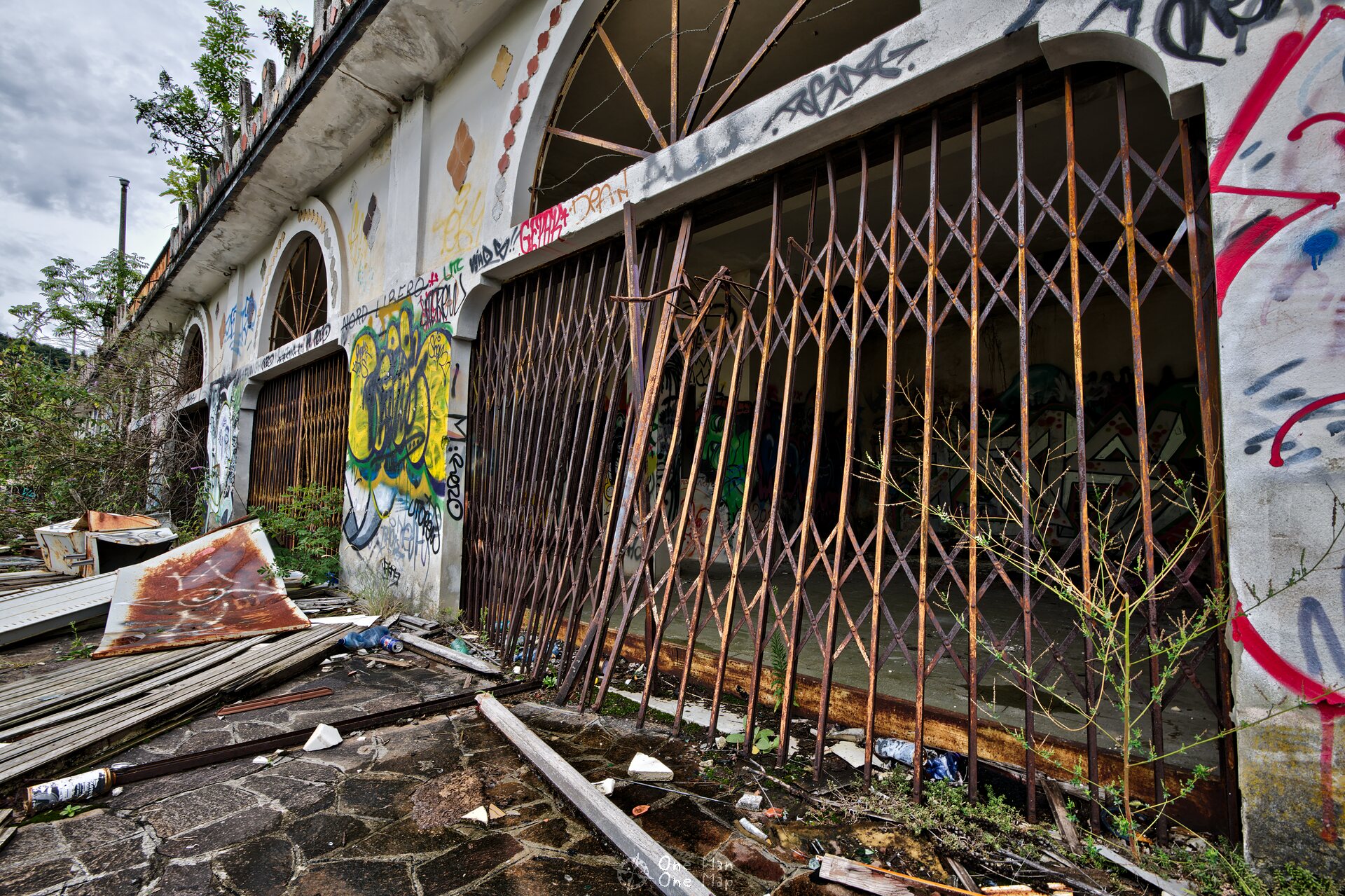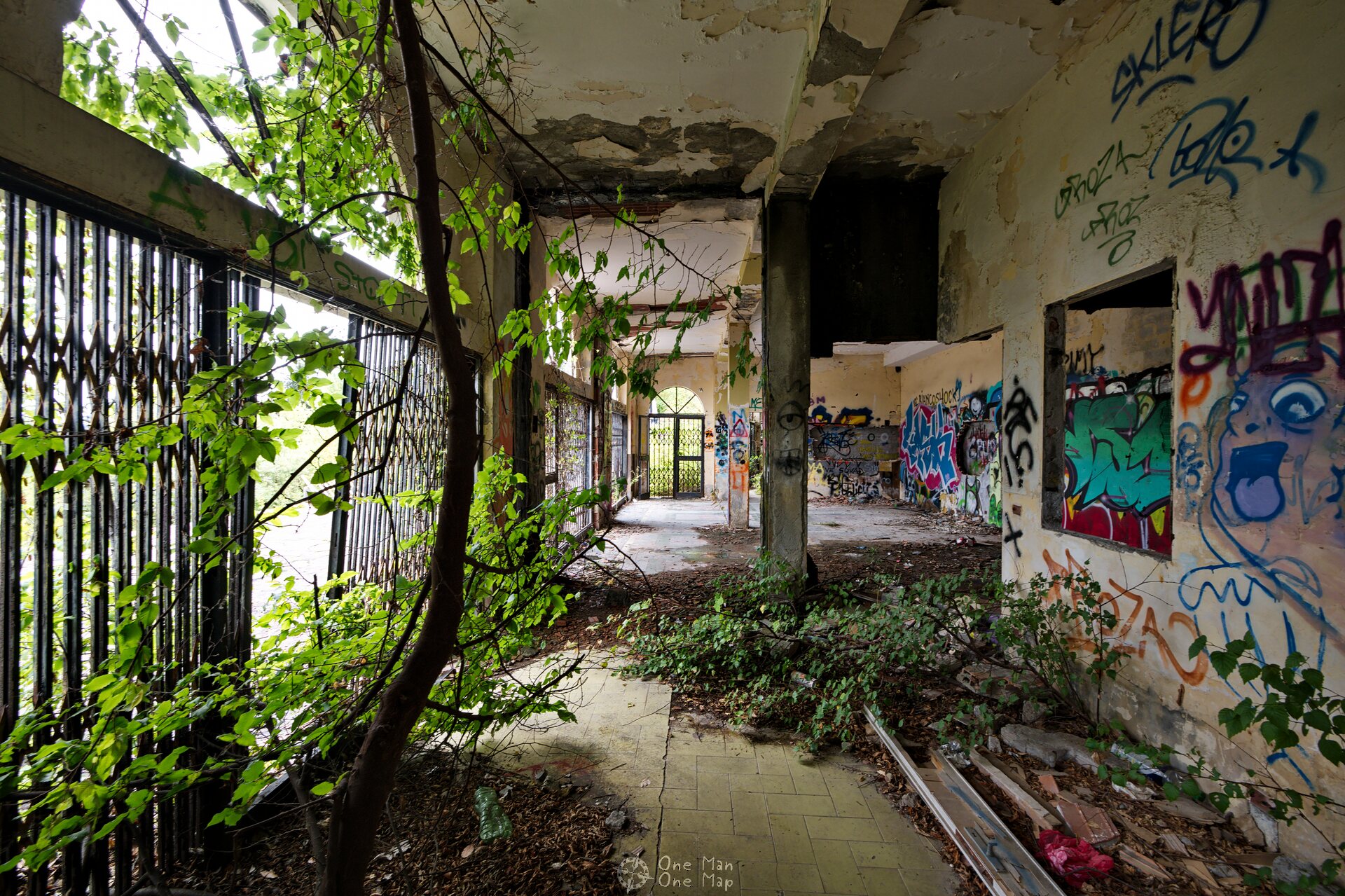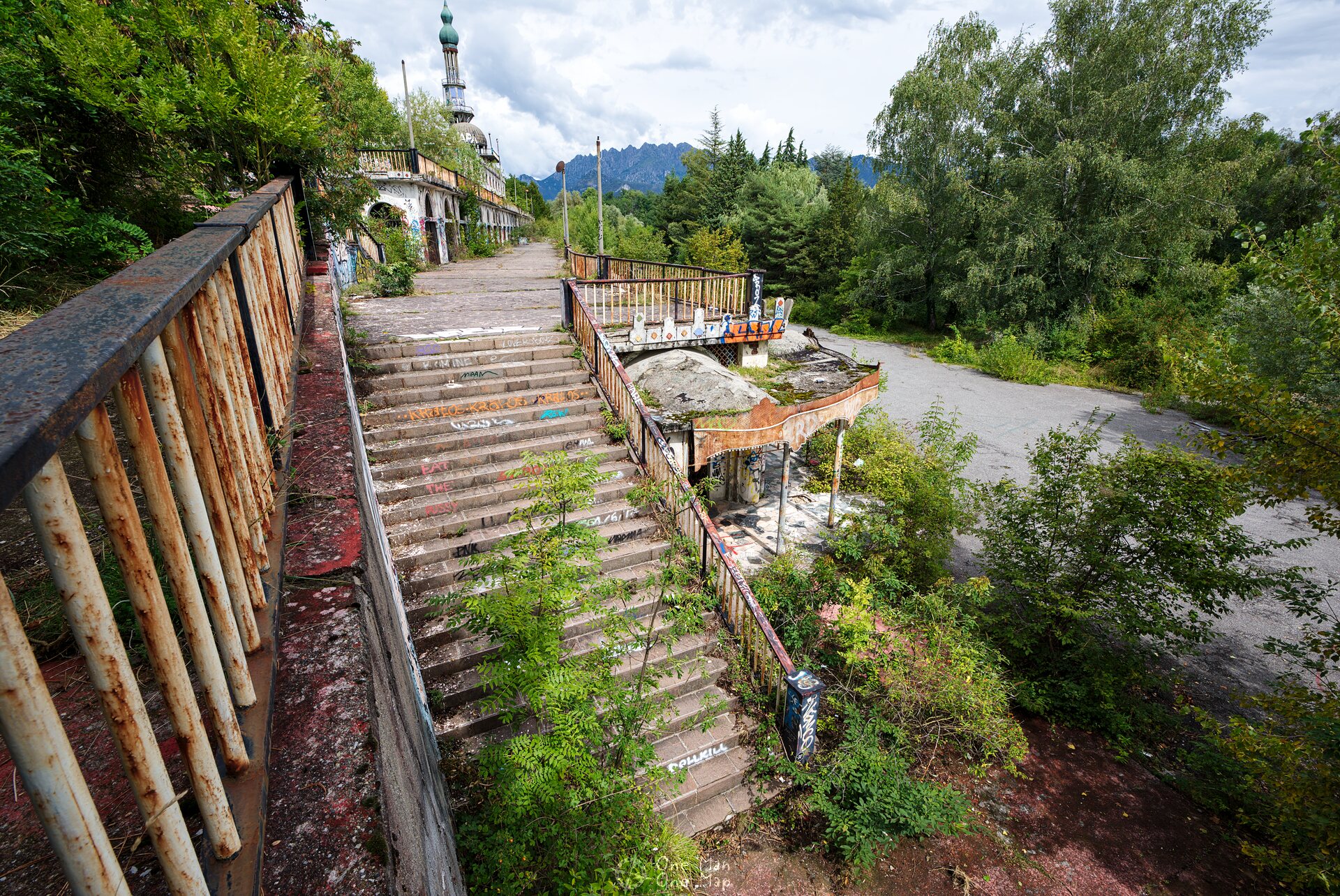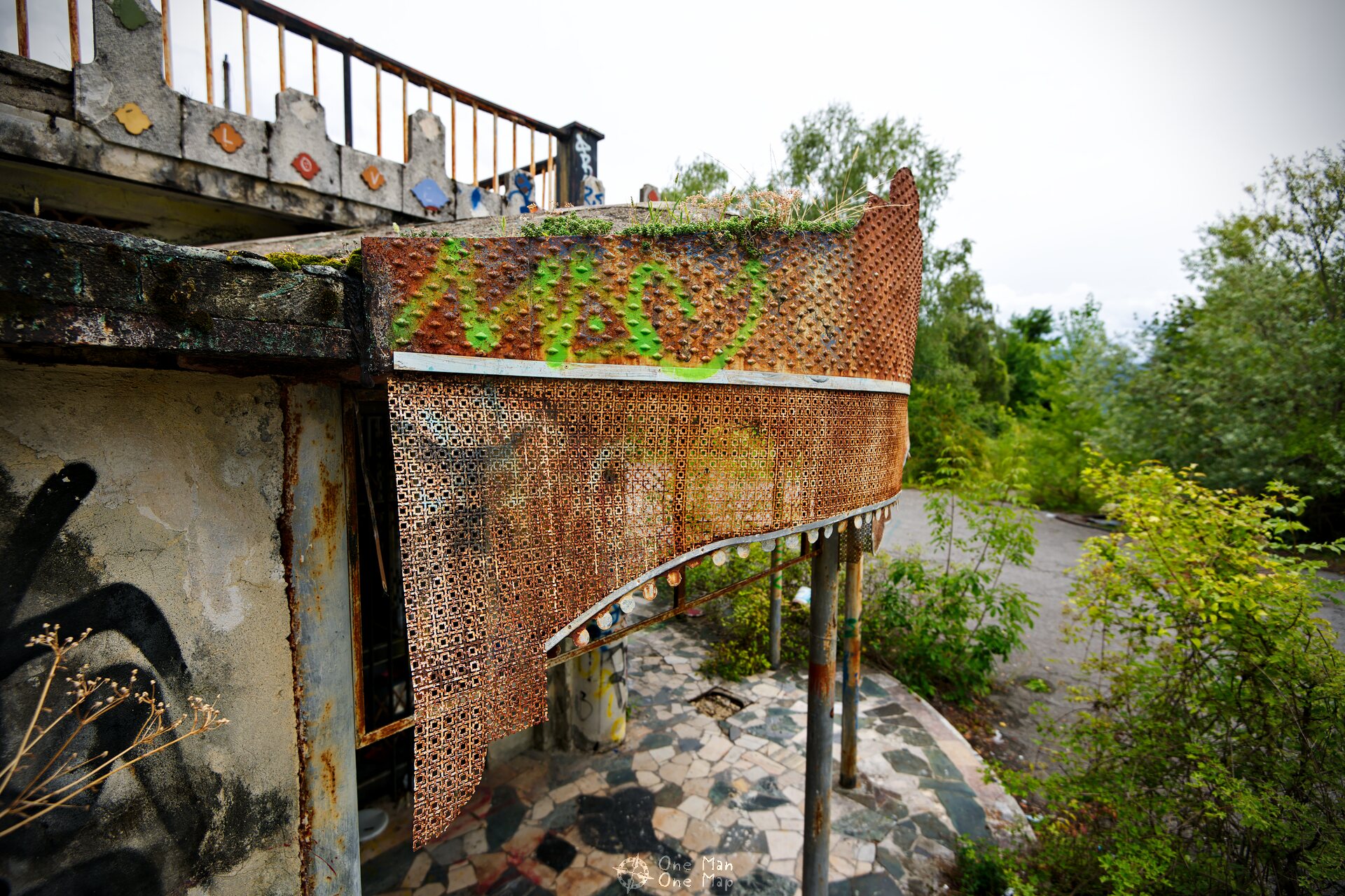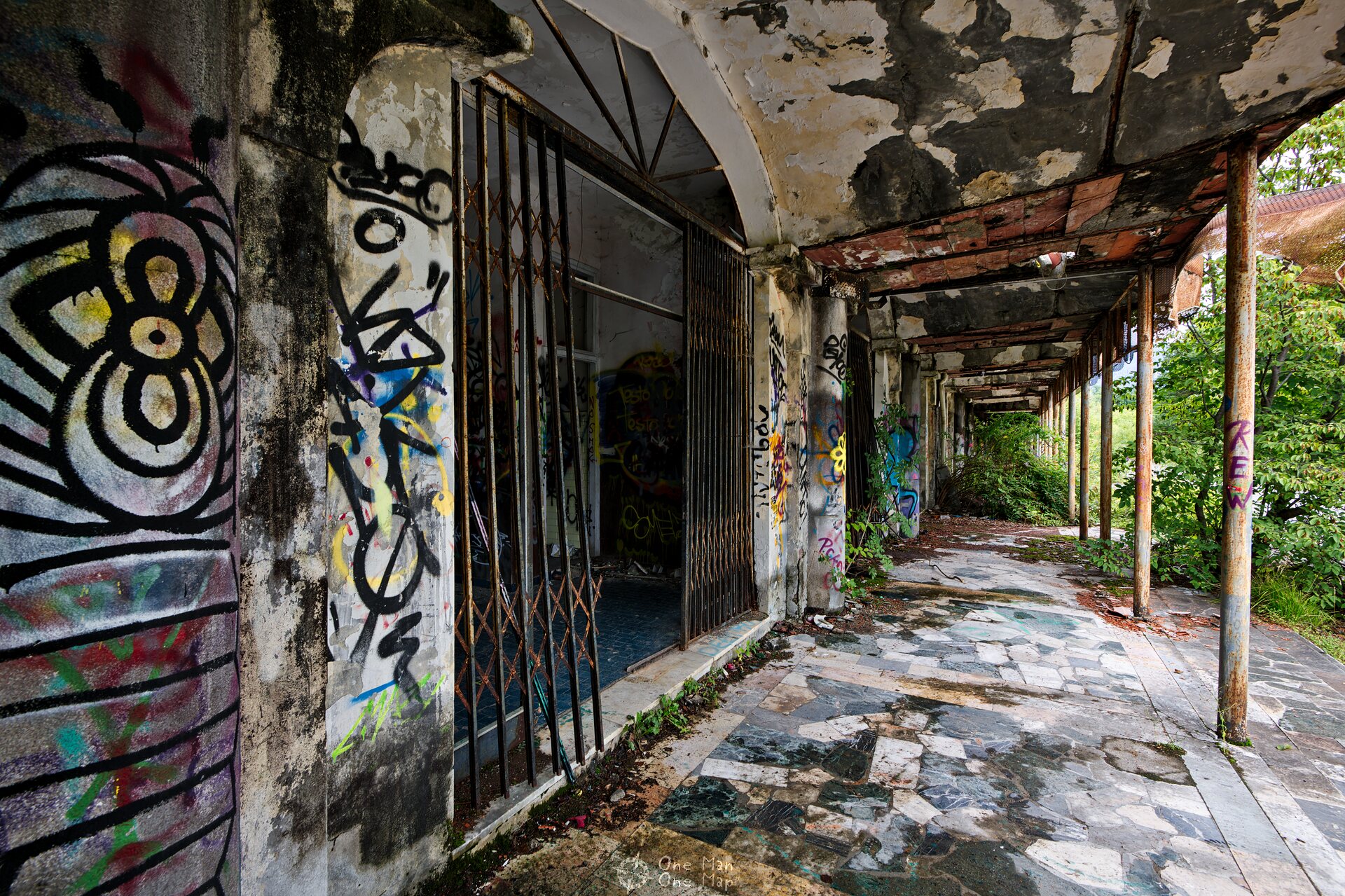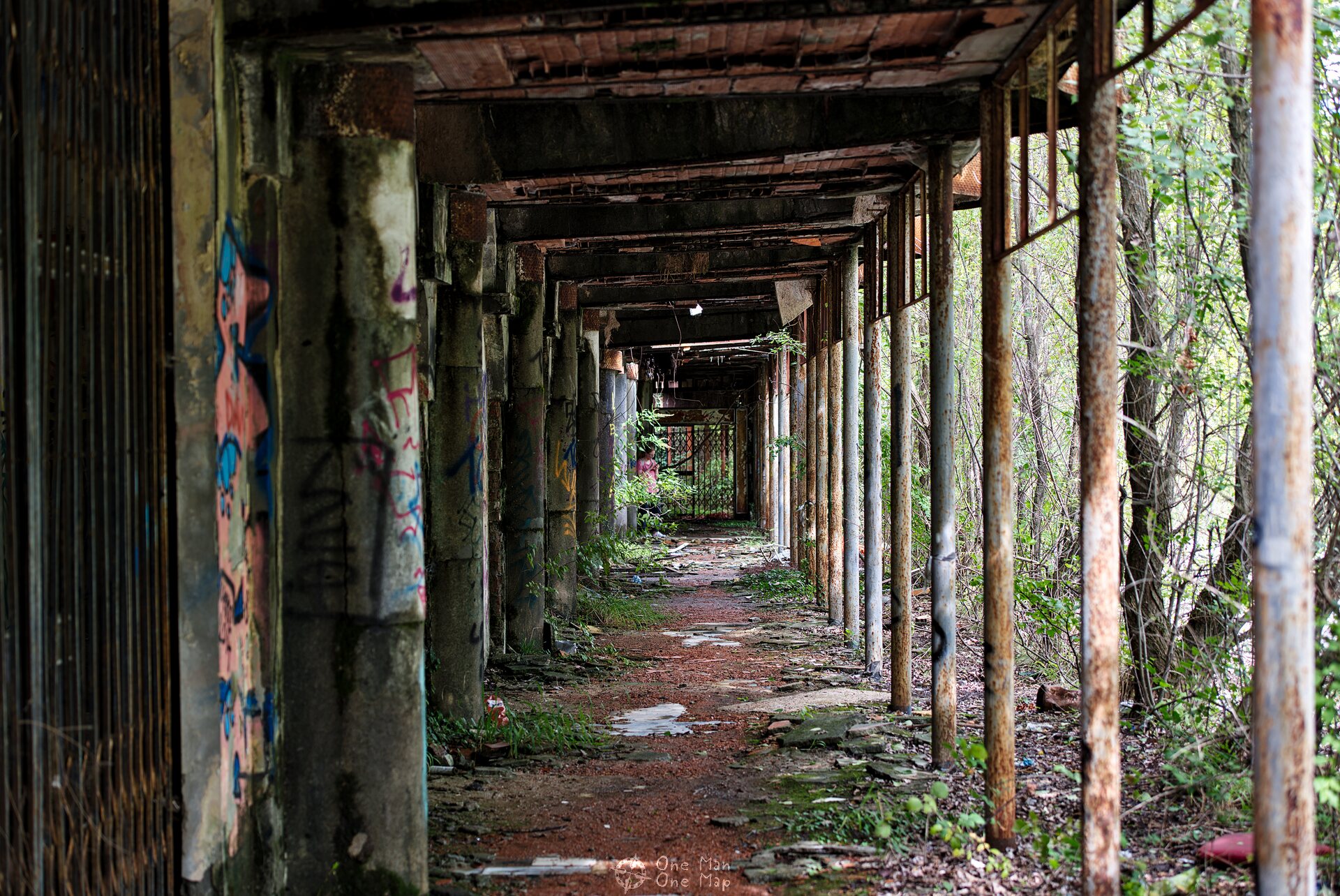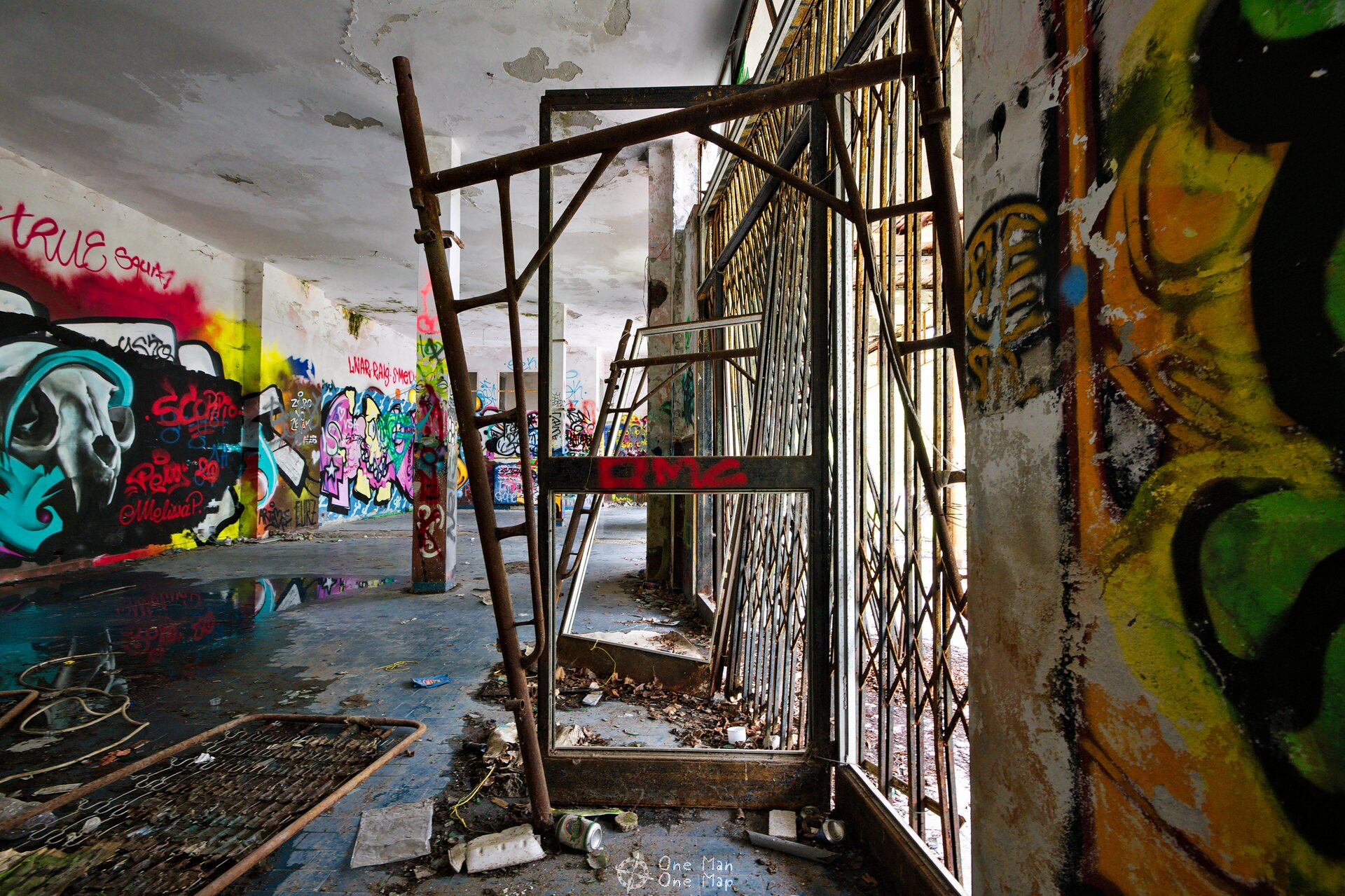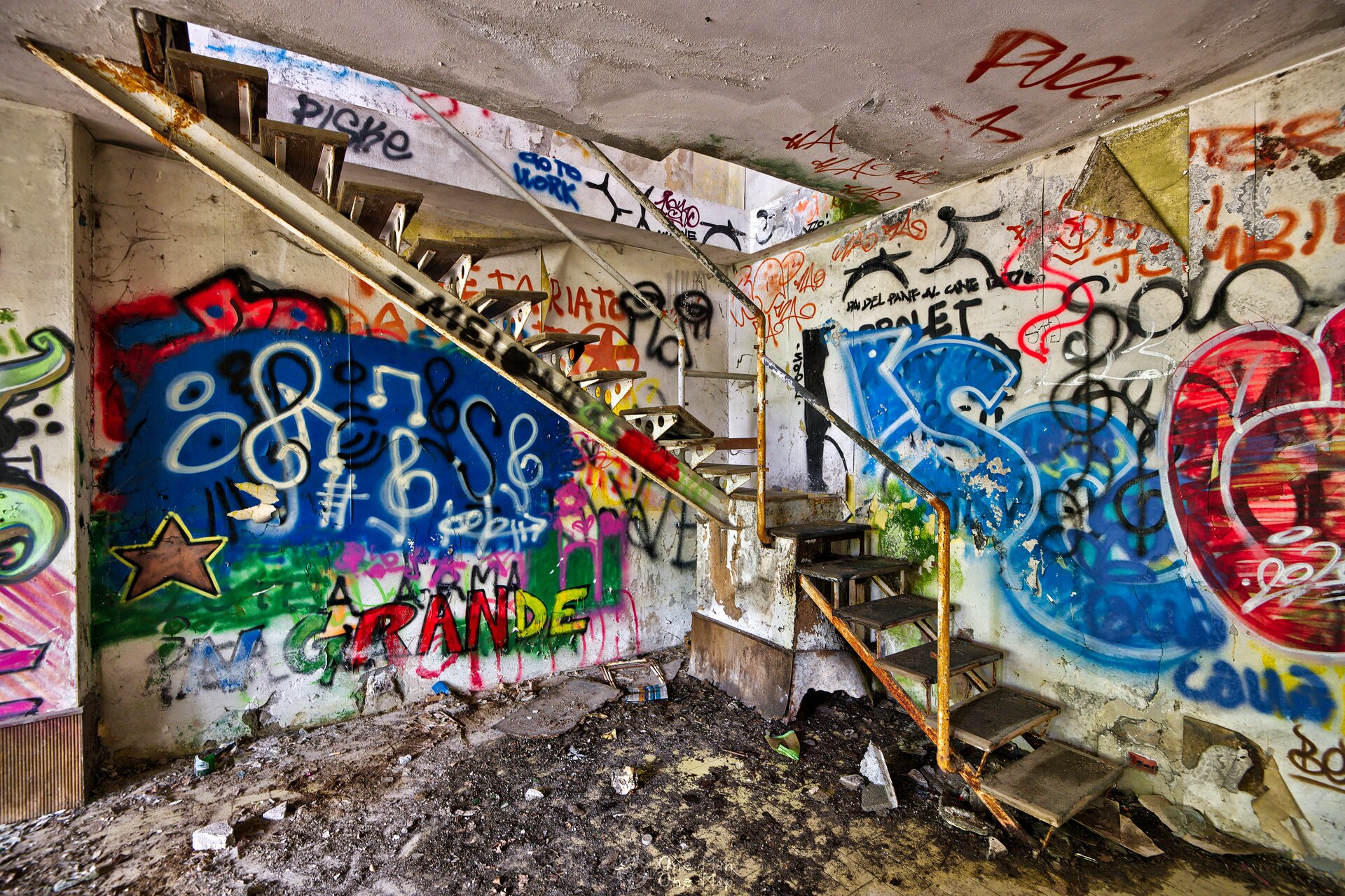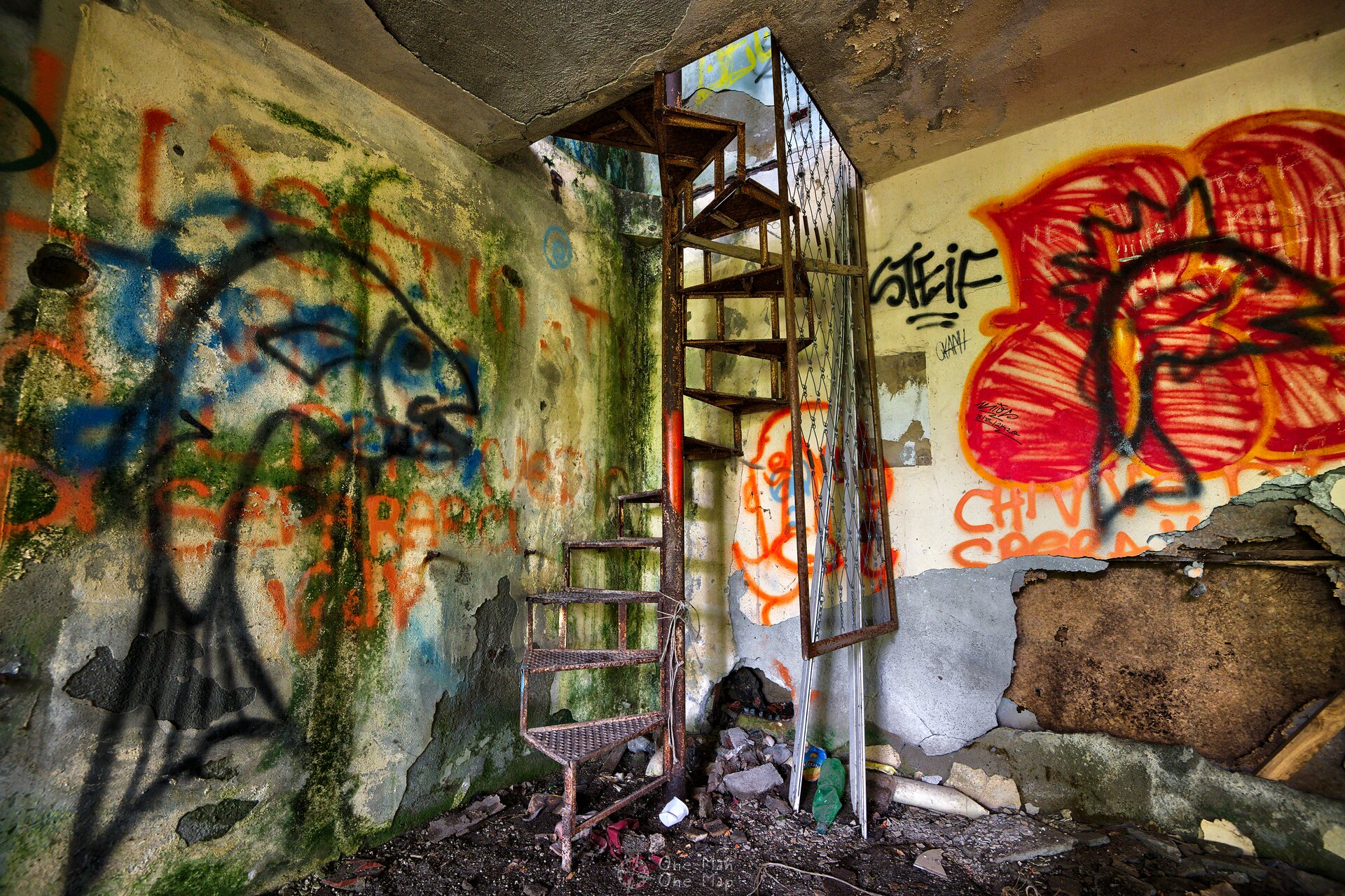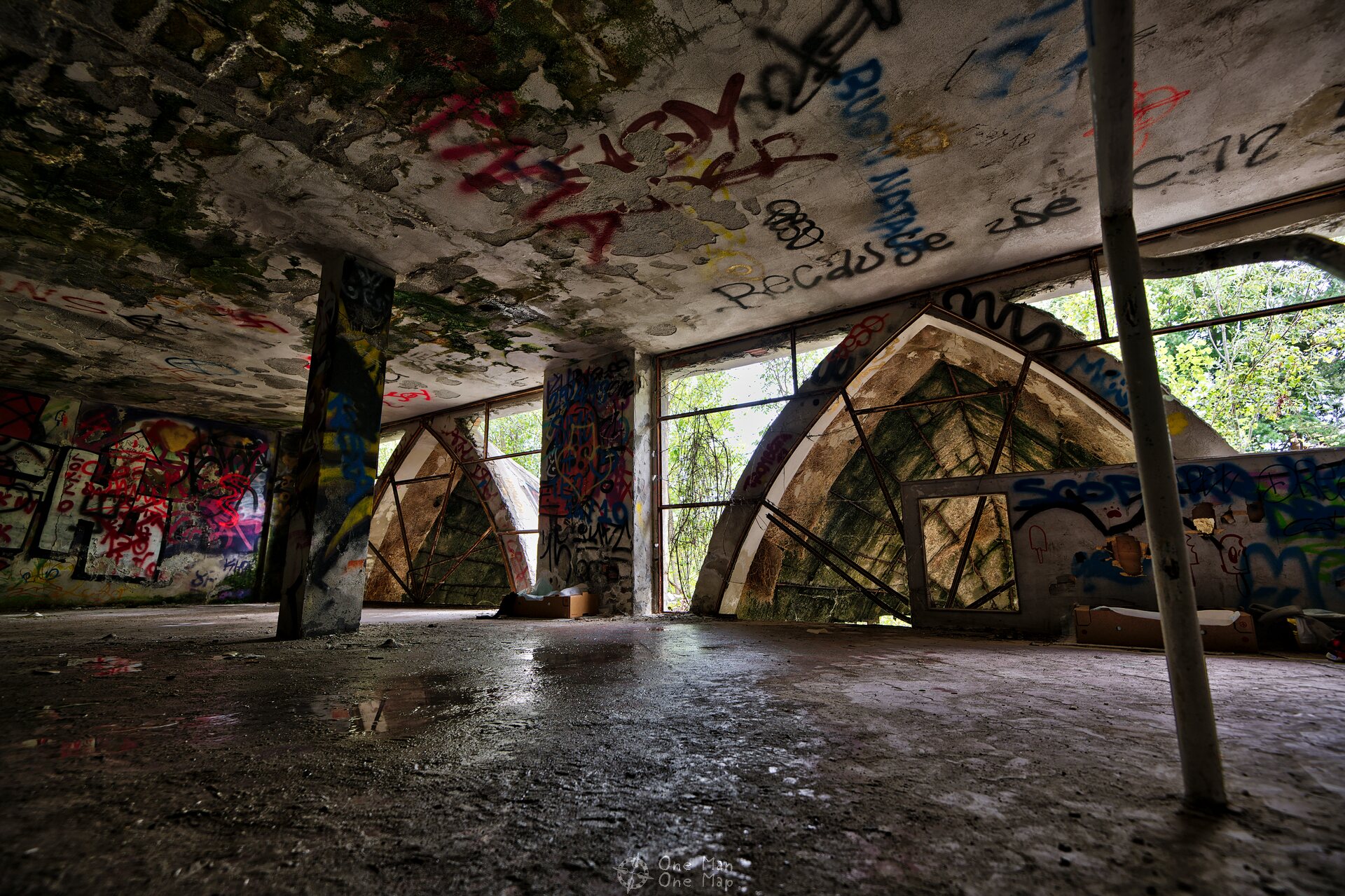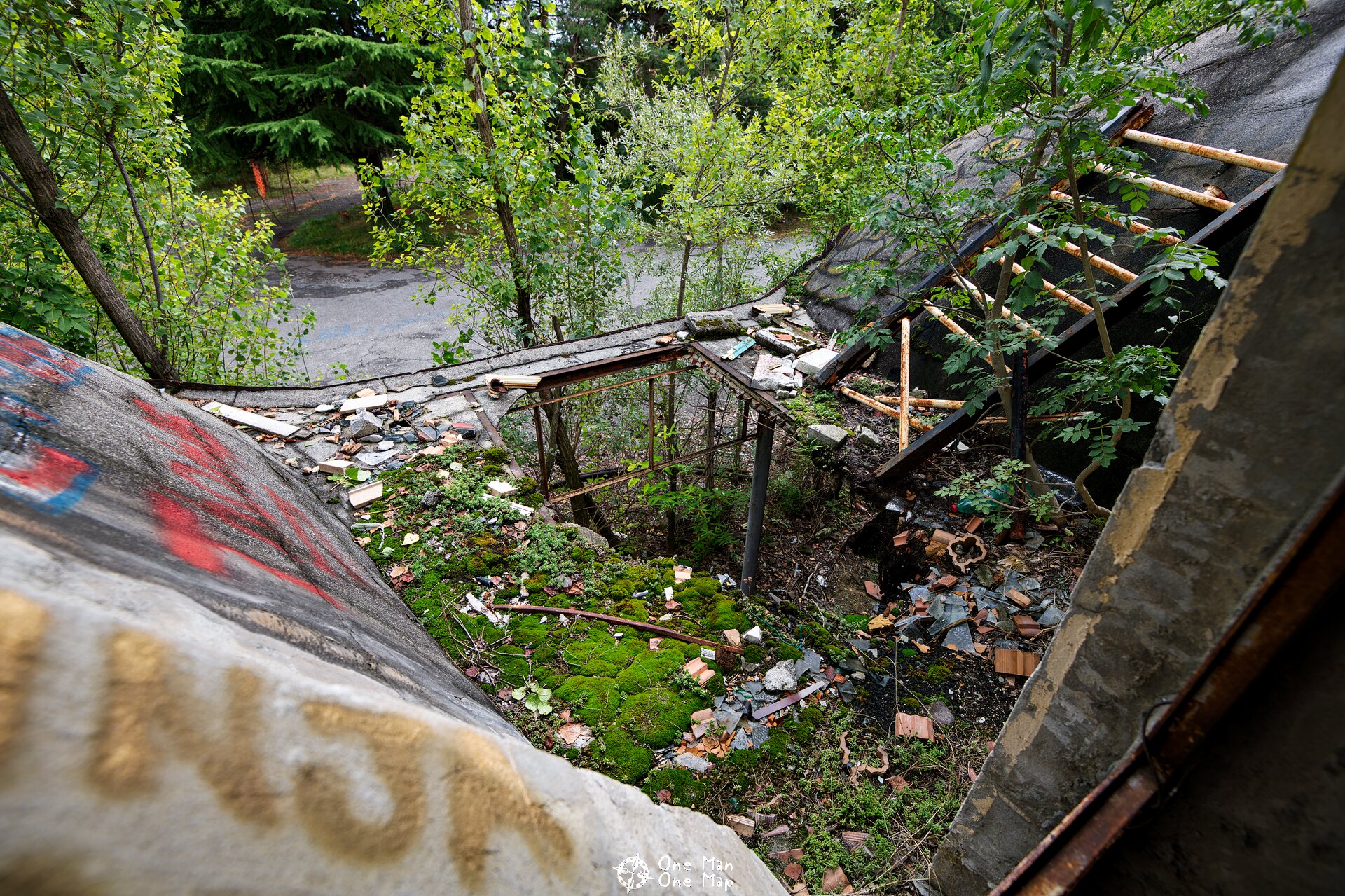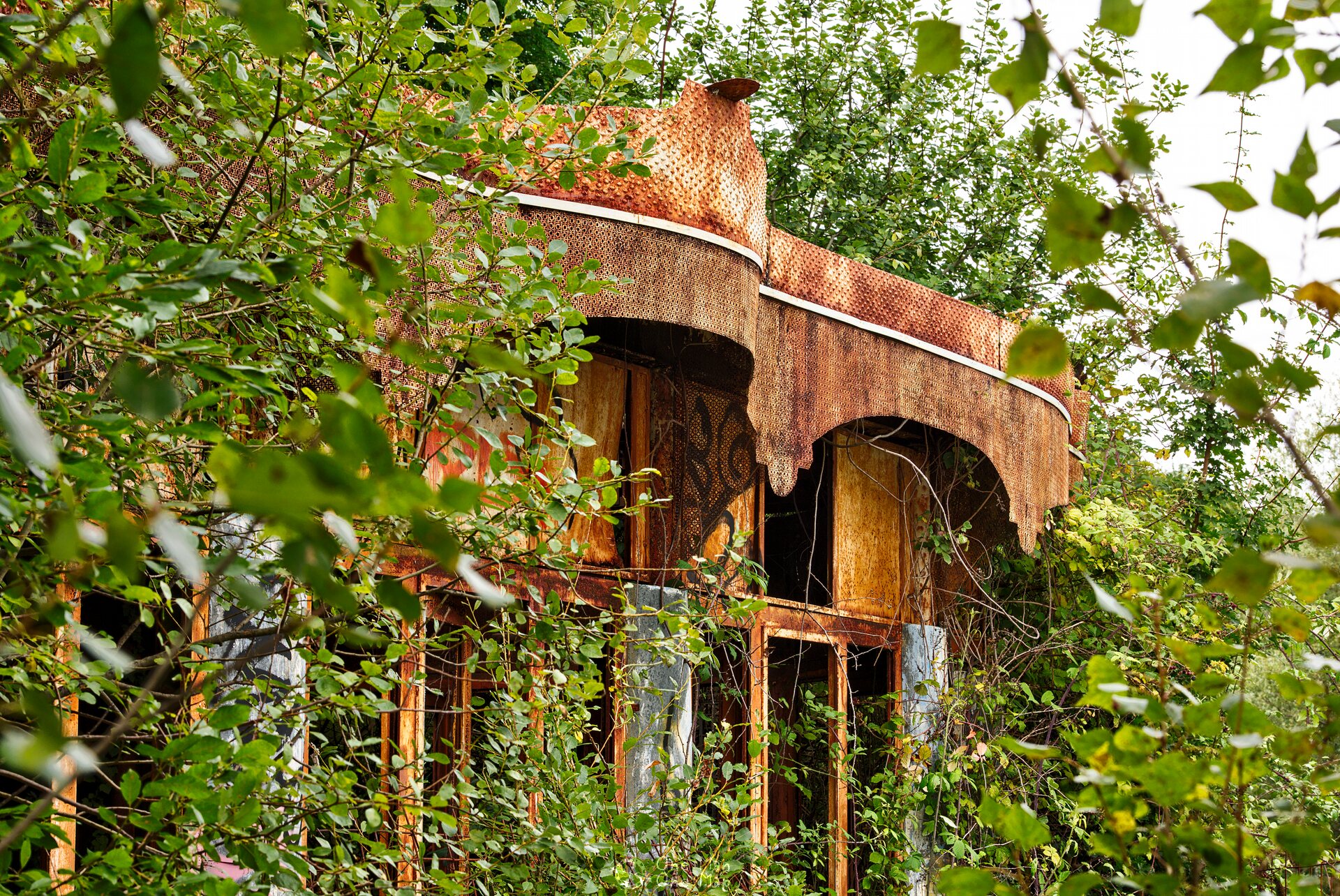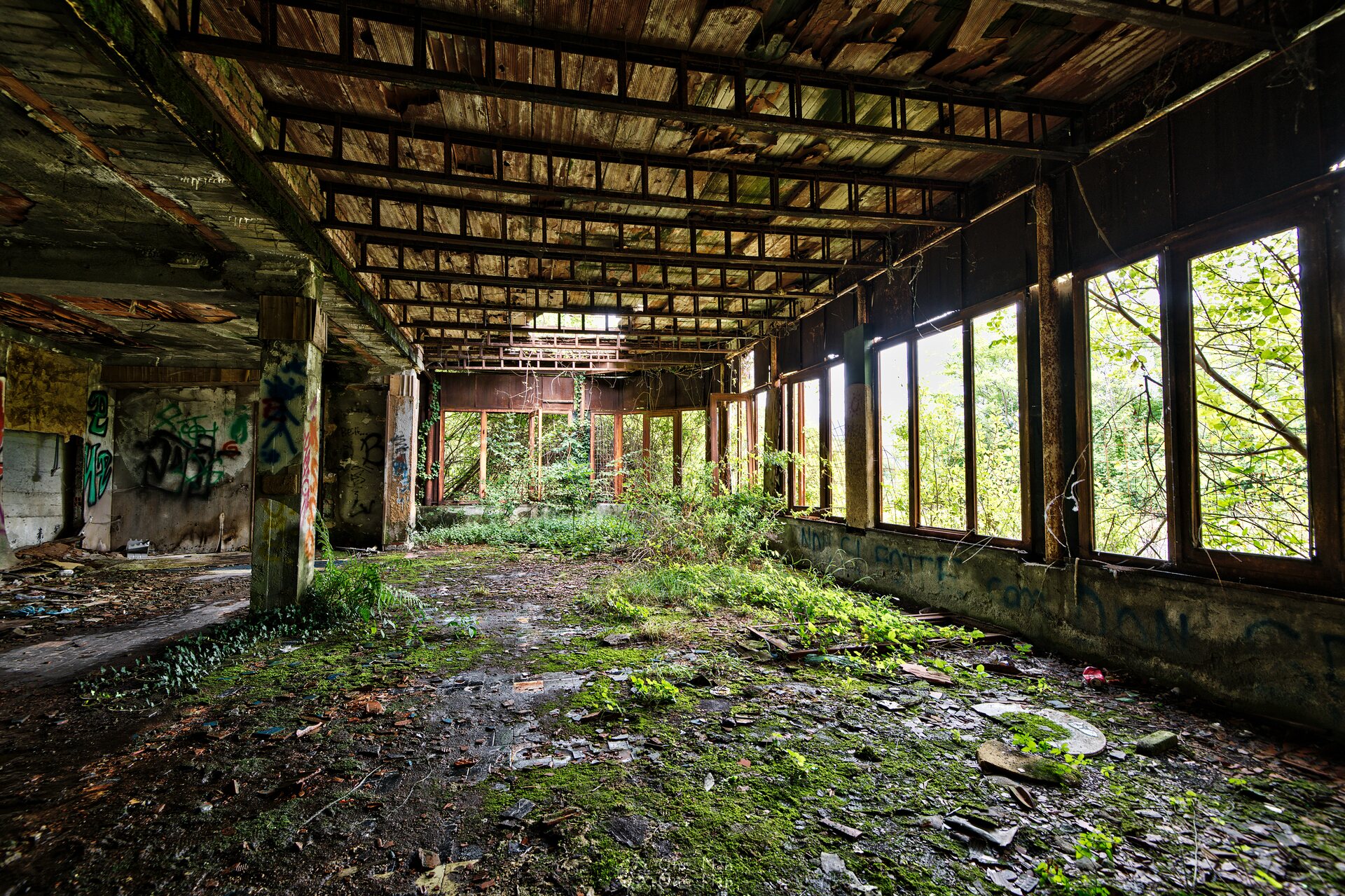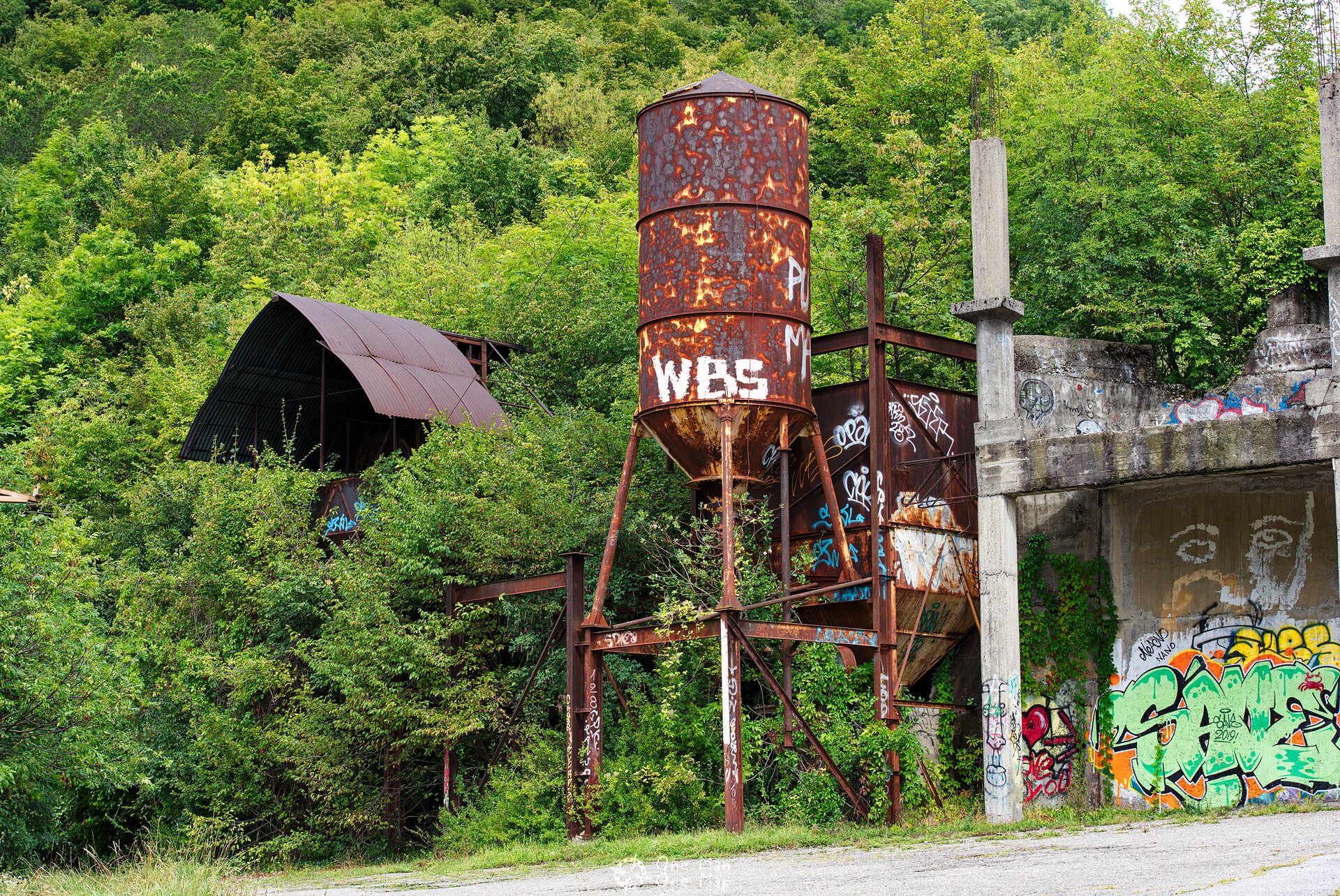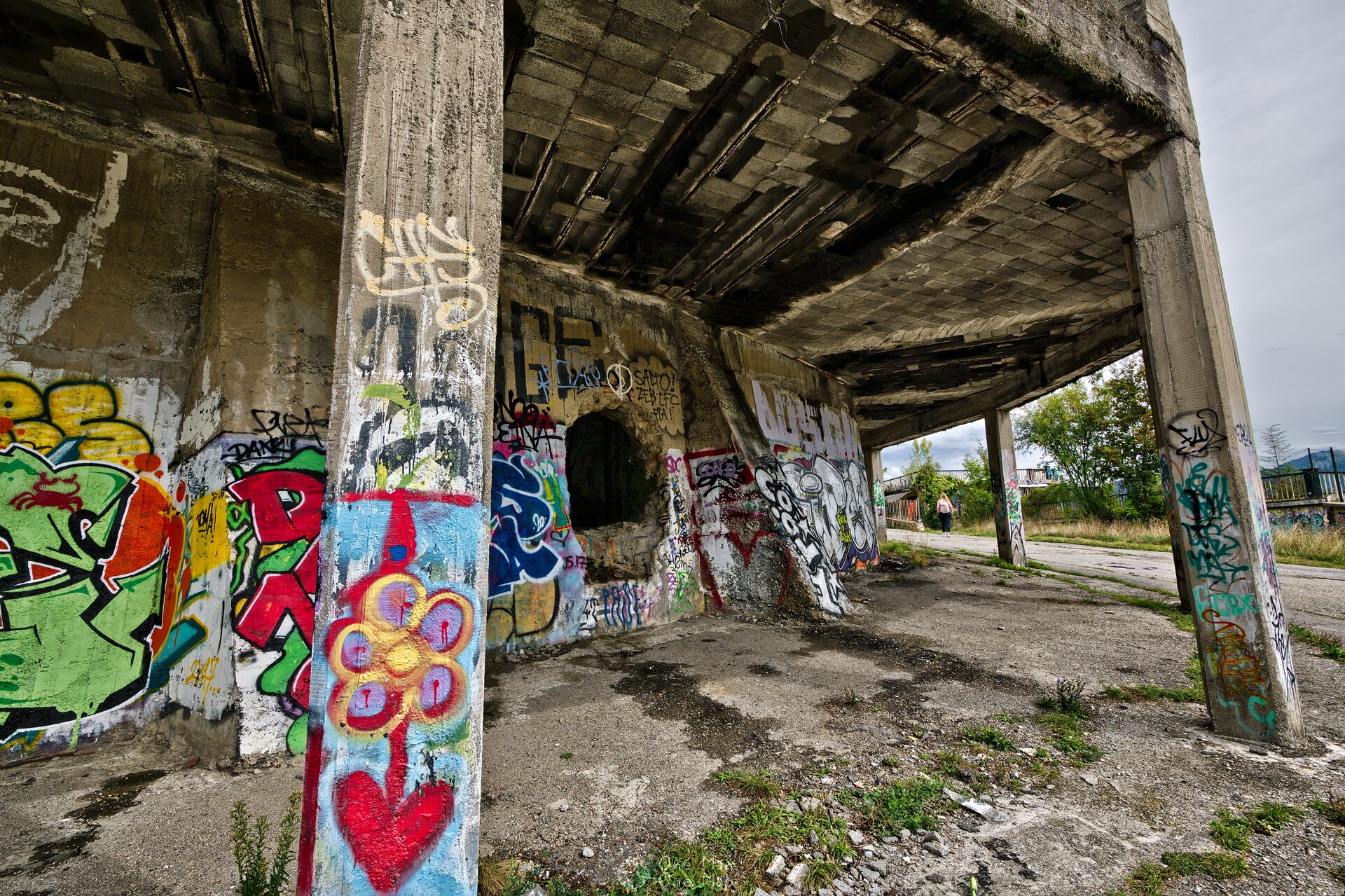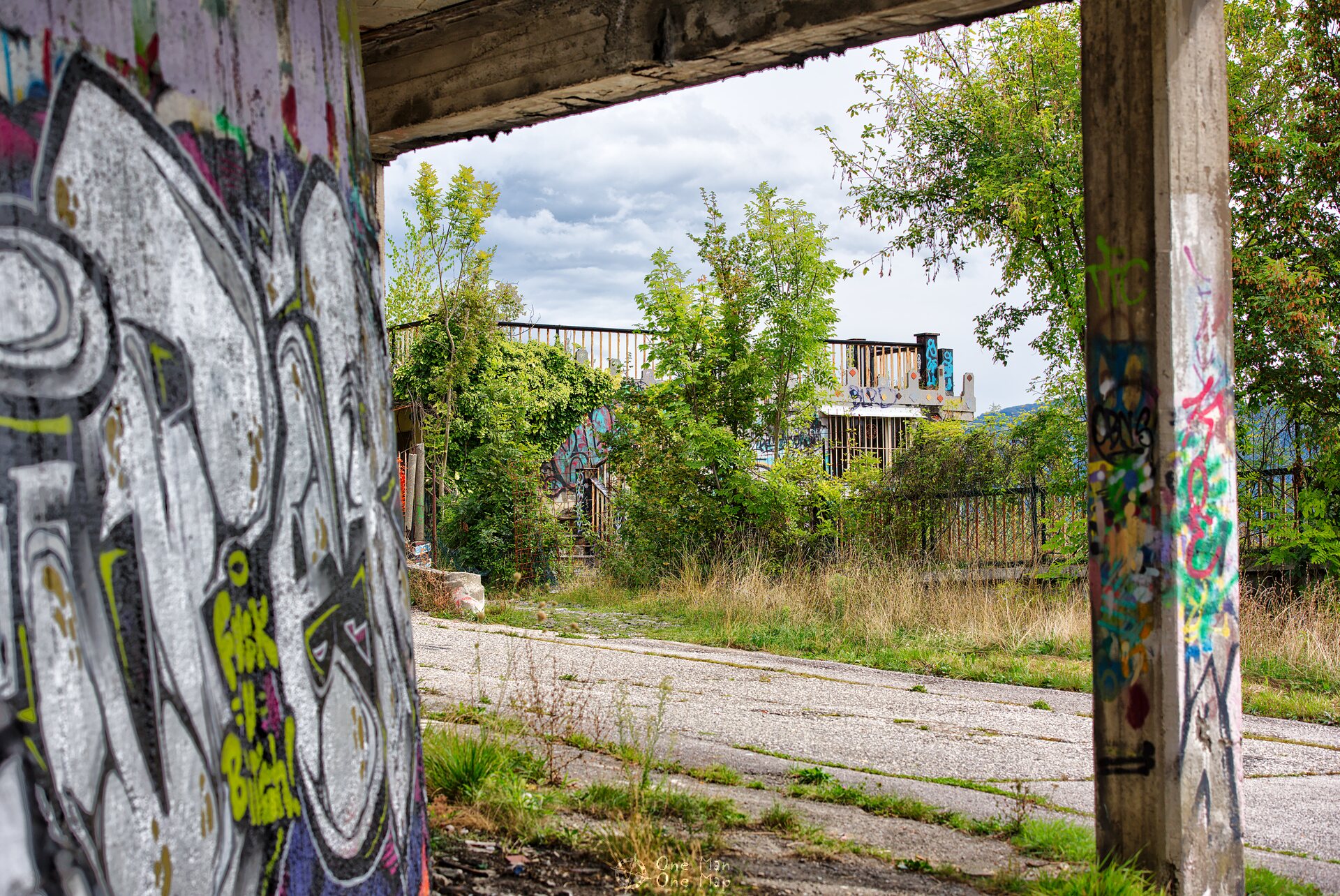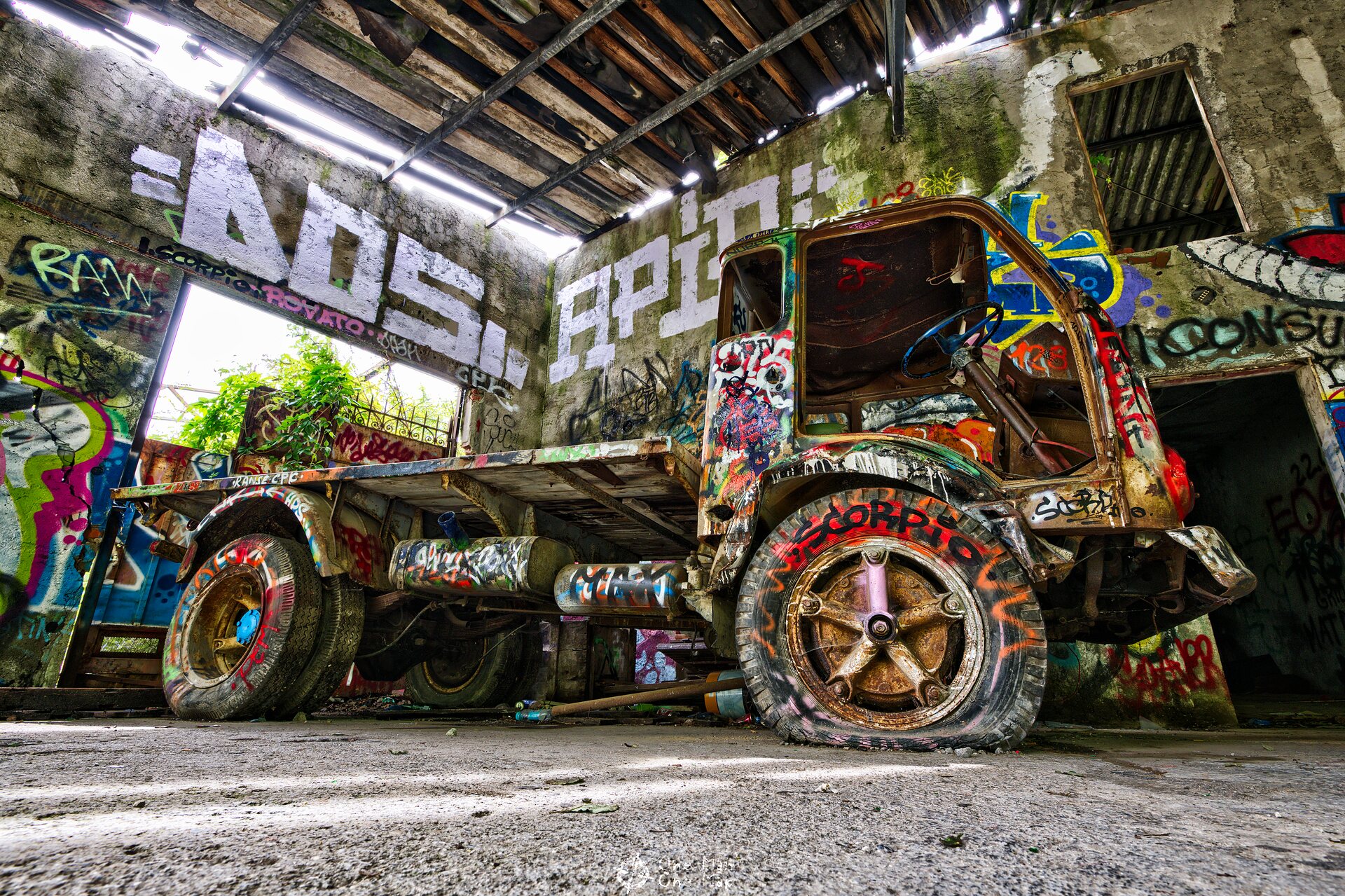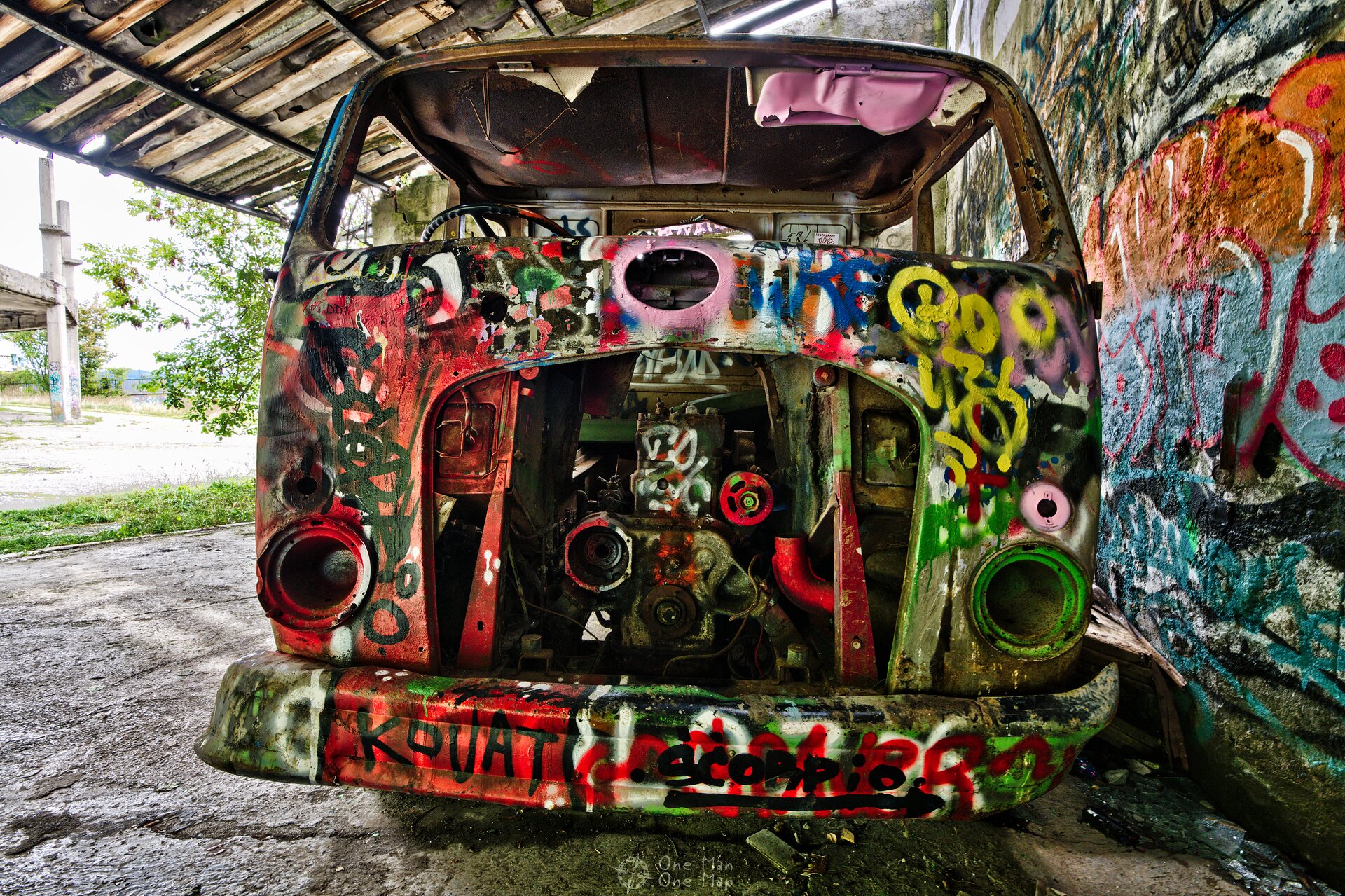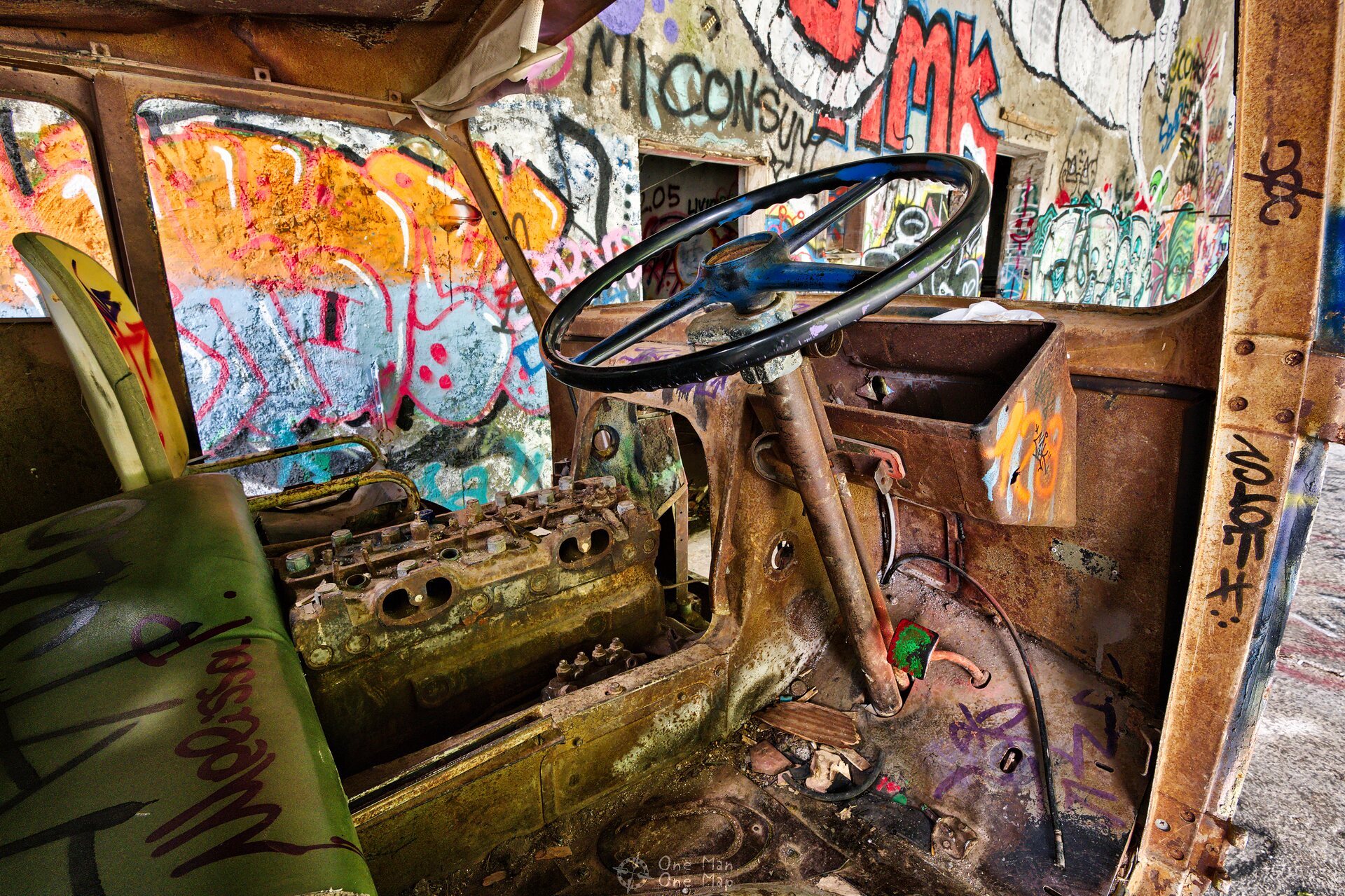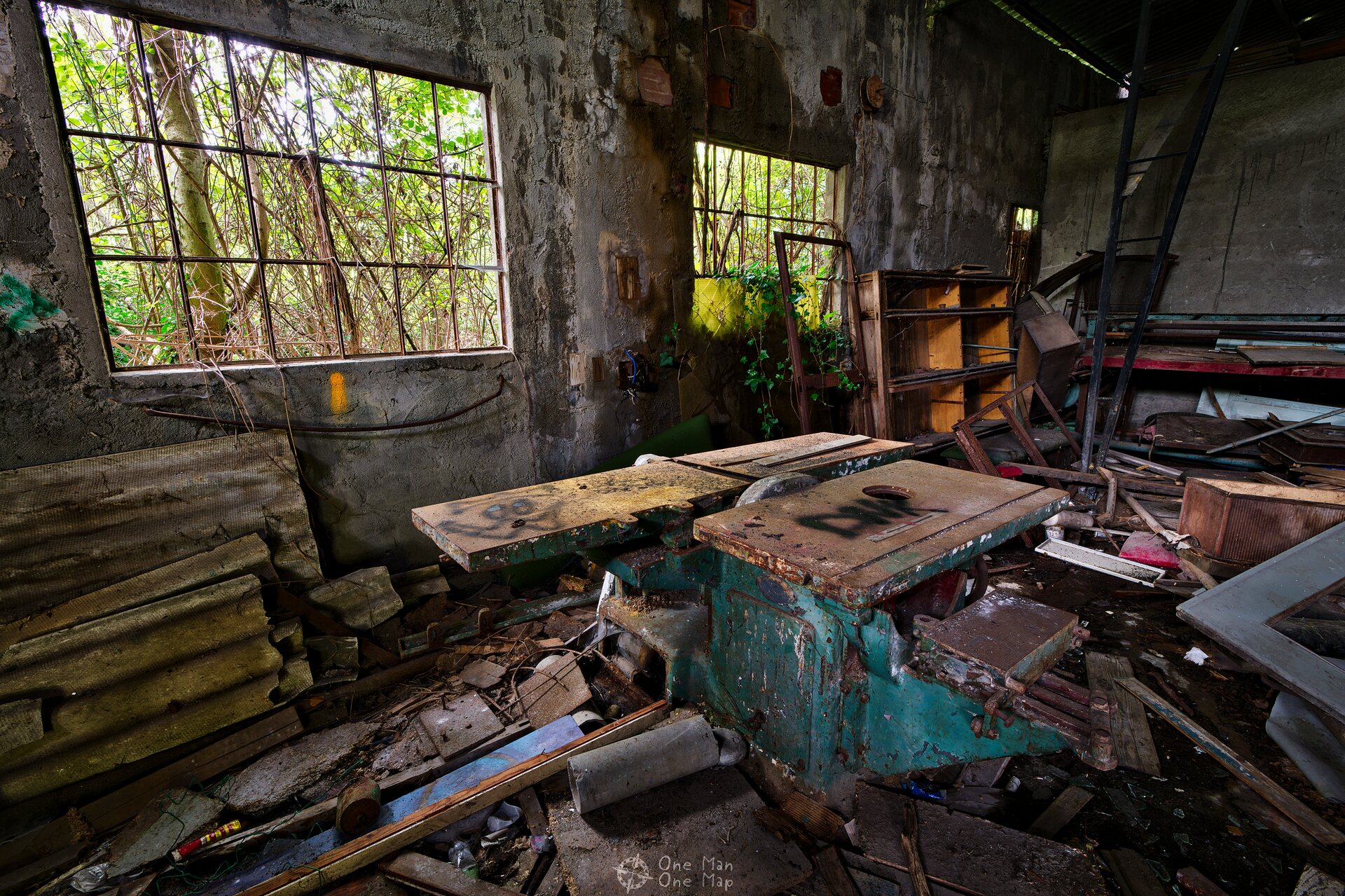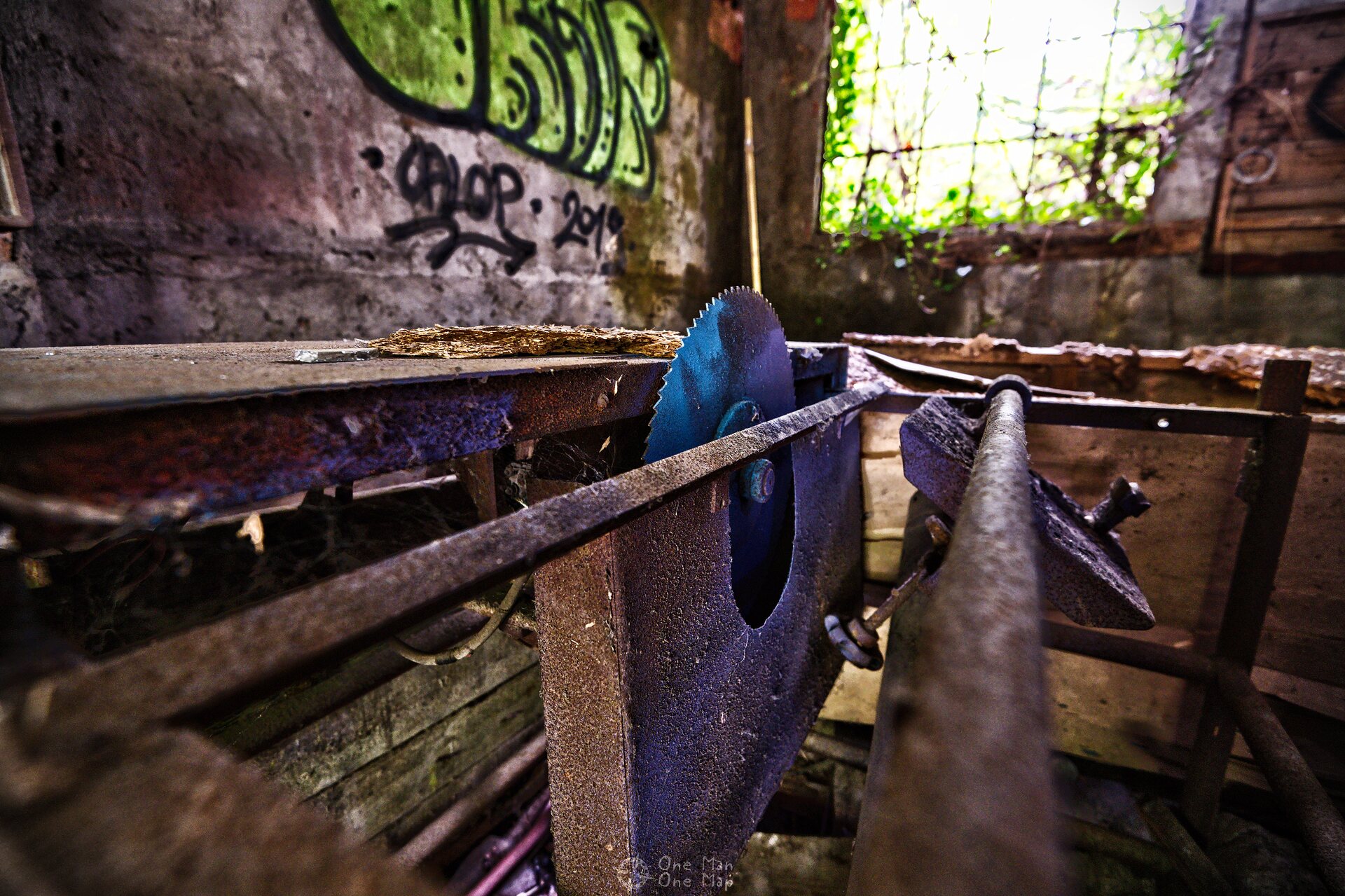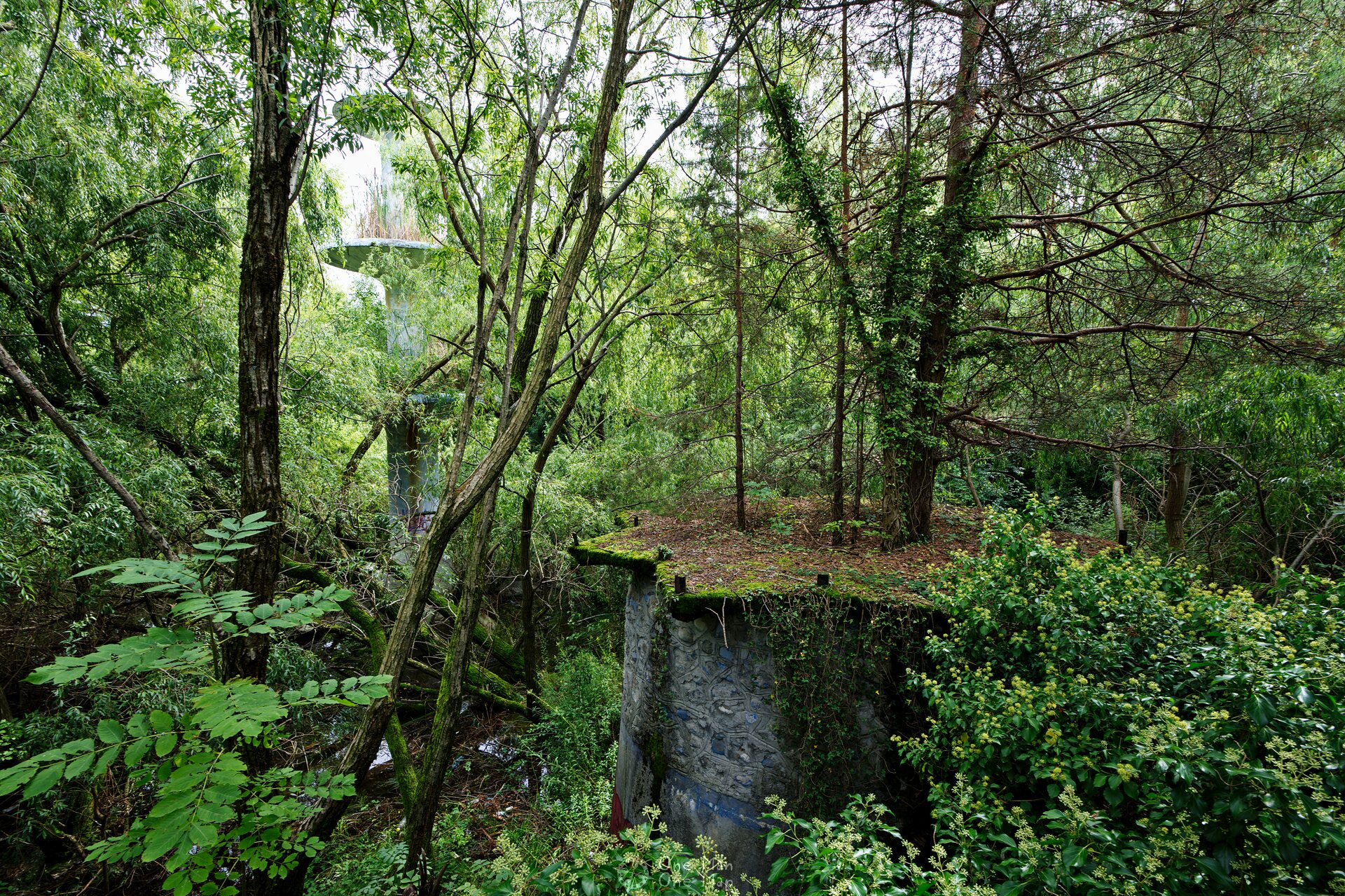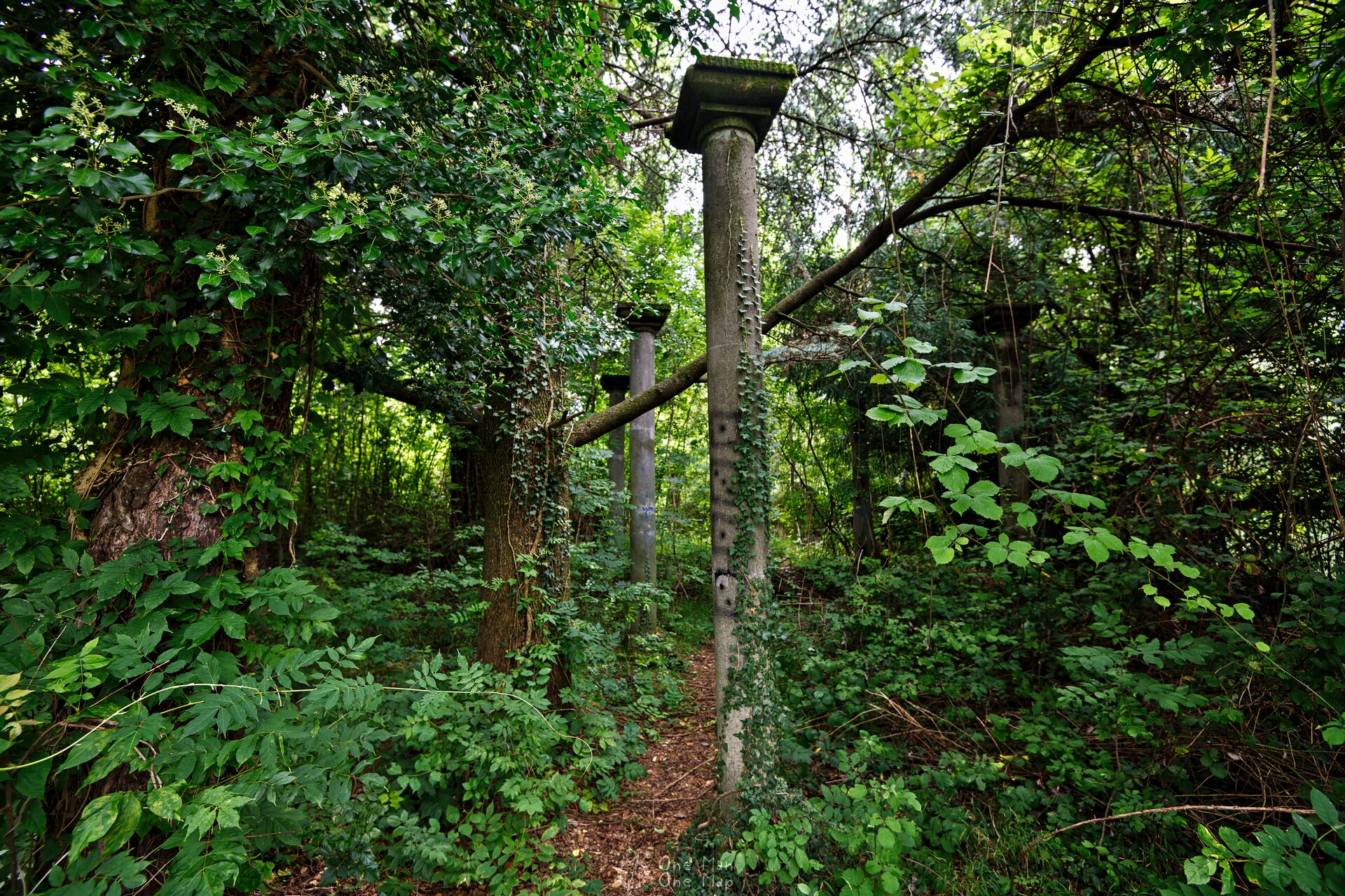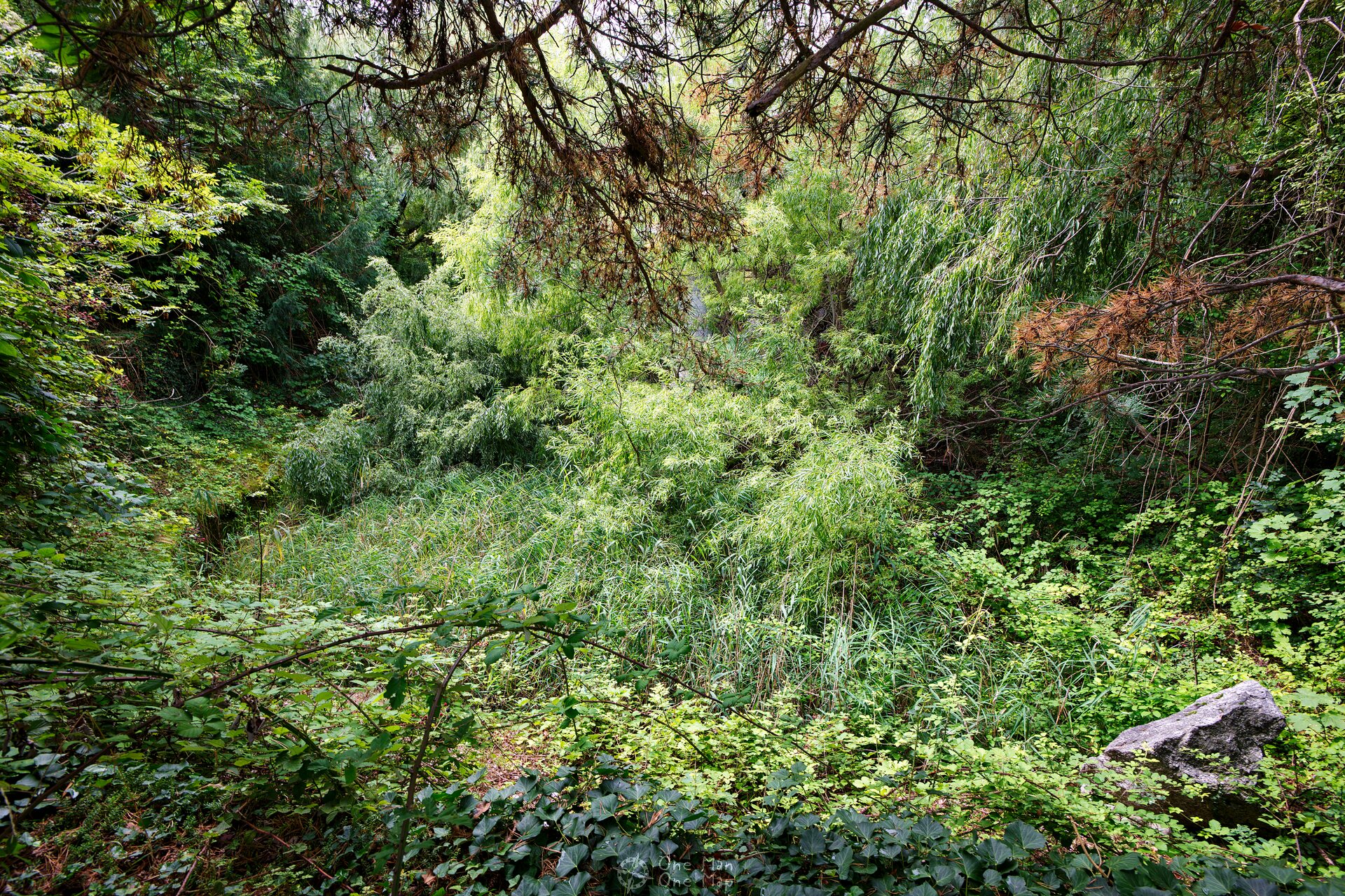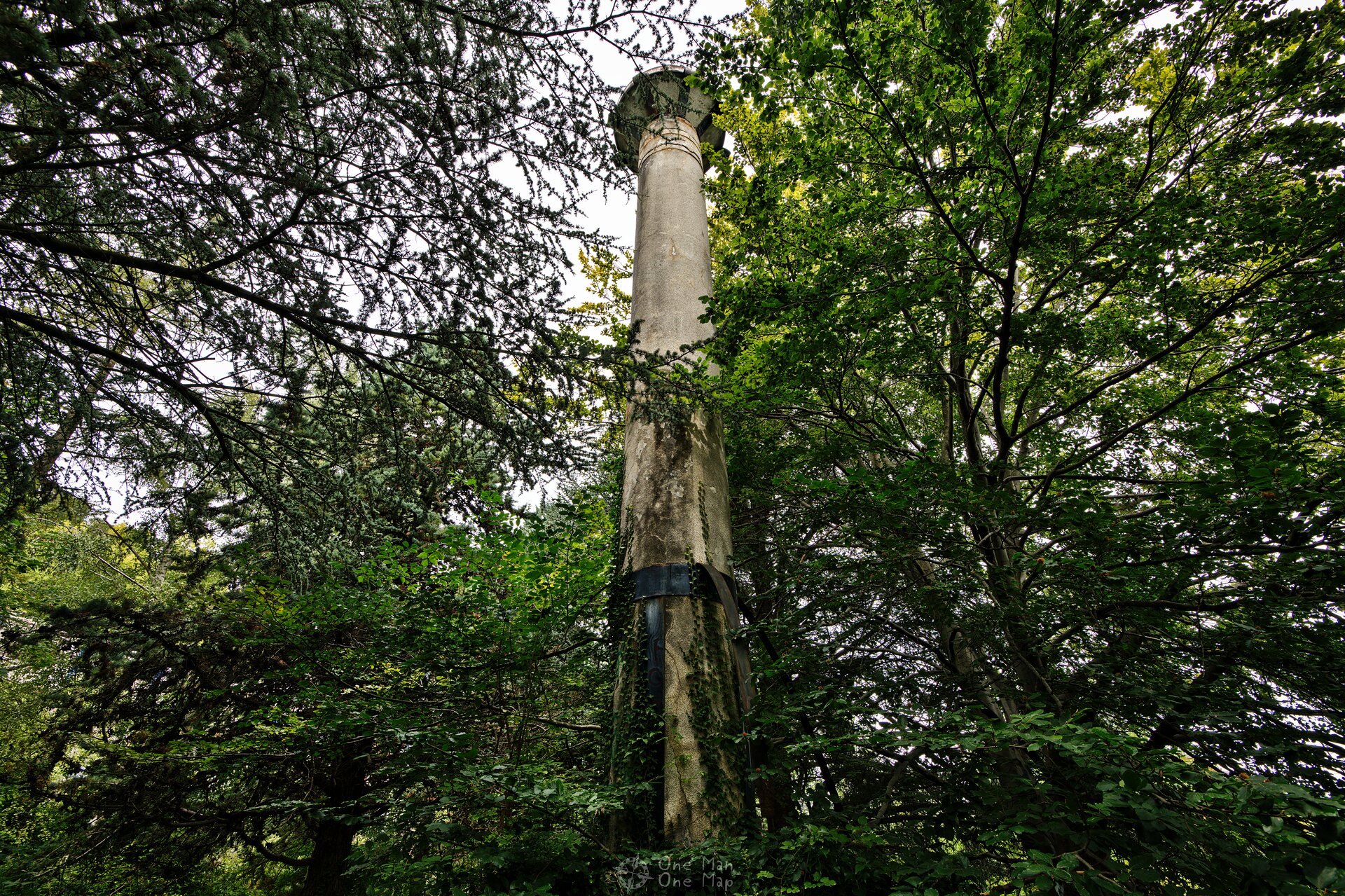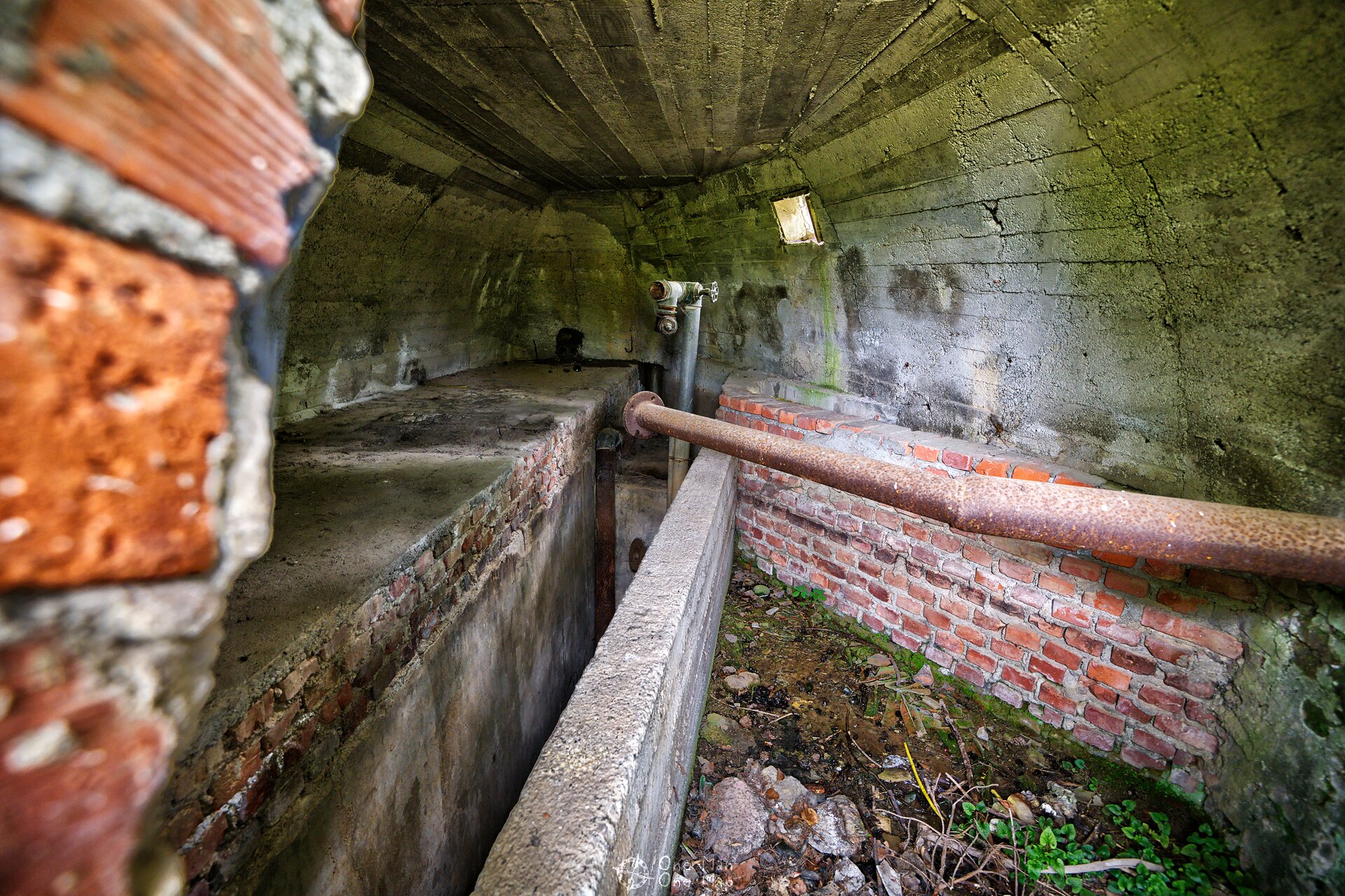It’s a story like out of a fairy tale book: an Italian count buys the small village of Consonno on a hill in Lombardy and transforms it into an amusement city with restaurants, shopping mall, a medieval castle gate and an oriental-style minaret. However, unlike in fairy tales, not everything goes smoothly afterwards. After just a few years the stream of visitors dwindles, and a natural catastrophe seals the fate of the “European Las Vegas”. Consonno decays and becomes a well known ghost town.
Dieser Artikel ist auch auf Deutsch verfügbar. Click here to find out more about Italy!
Until the first half of the 20th century Consonno was just a tiny village on a hill about 15 kilometers from Lecco on Lake Como. Before the Second World War there were still 240 inhabitants, but after the war the number dropped to about 50. In the 1950s the local craftsmen and farmers were barely able to keep the village alive.
At the beginning of the 1960s, the eccentric Grande Ufficiale Conte di Villa dell’ Olmo Mario Bagno – or short Count Mario Bagno – appeared on the scene. He had come to wealth with his construction company during the Italian “economic miracle” in the 1950s and dreamed of an amusement city near Milan. Consonno was probably interesting for several reasons: the hillside location offered a good panorama of the surrounding mountains, all the plots of land were owned by just two families, and no great resistance was to be expected from the few inhabitants. On January 8, 1962, Bagno signed an agreement with the Anghileri and Verga families to buy all of Consonno for 22.5 million Italian Lire. The average monthly wage of a worker at that time was about 50,000 Lire.
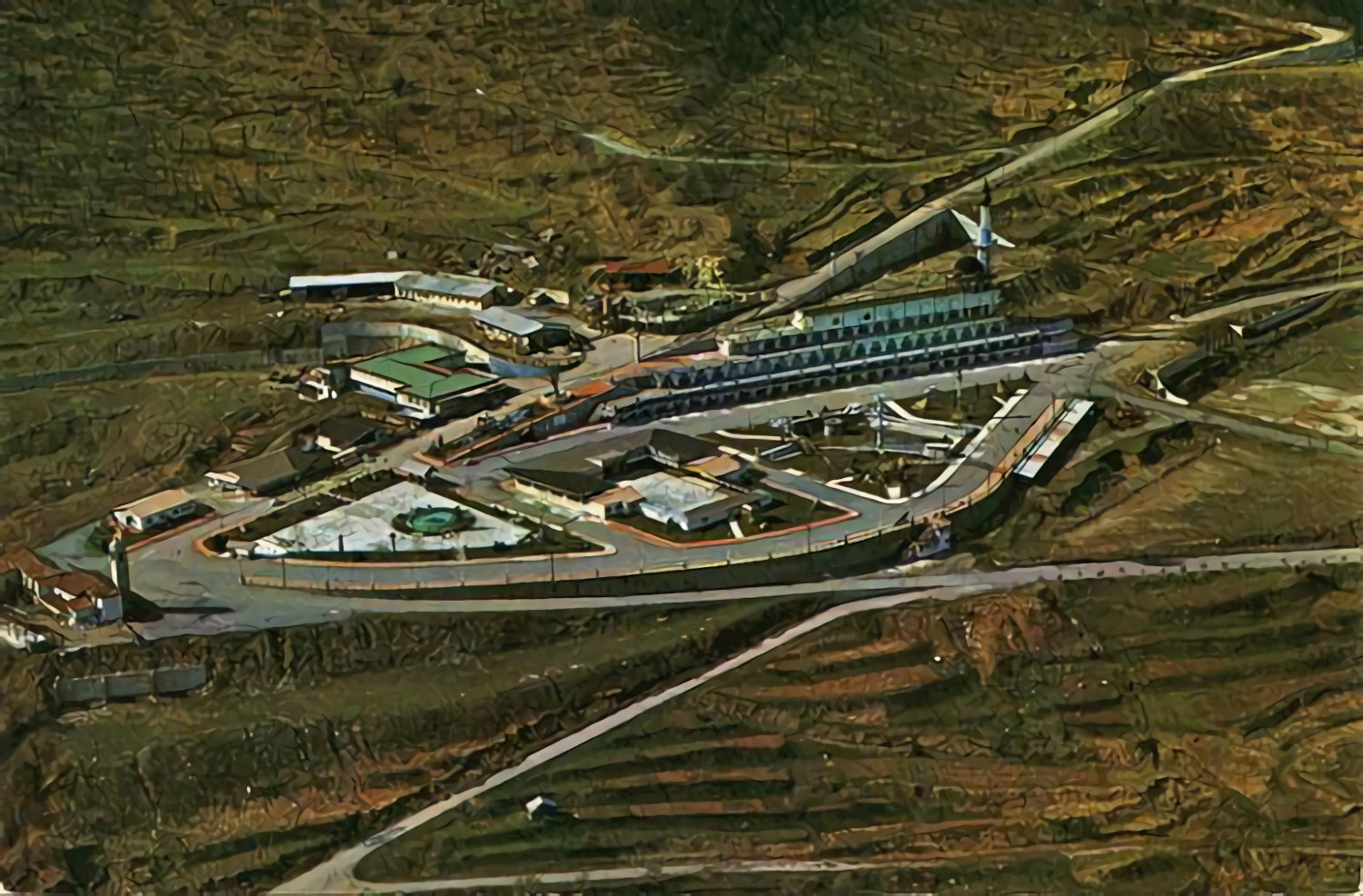
Shortly after the purchase a new road was built and the bulldozers went to work. One after the other the houses and roads were destroyed and most of the inhabitants left the village. At the end only the small church Chiesa San Maurizio, the rectory and the tiny cemetery remained. In place of the former residential buildings the Plaza Hotel, several restaurants, the dance hall Salone delle Feste (literally “Party Hall” in Italian), a medieval castle gate, a Shopping Arcade with its famous oriental-style “Minaret” and a shooting range on Monte Mario were erected until 1967. The buildings were constructed in the style of different eras and cultures. A “tourist train” carried visitors from attraction to attraction. Allegedly Count Bagno invested more than 60 million Lire.
The concept developed by the Count was very successful in its first years. Famous celebrities visited regularly and popular music stars performed in the dance hall. Bagno also organized special events such as bicycle races (e.g. the Circuito di Consonno on August 11, 1967) and motorcycle races (at least two eventy in the years 1975 and 1976).
But Count Bagno still had many big plans for new attractions in Consonno. Besides sports fields for soccer, basketball, tennis and boccia, a golf course, an ice rink, an amusement park and a zoo even an autodrome was on the list. However, the stream of visitors already decreased in the mid-1970s. In 1976 a landslide heavily damaged the main road, and unlike after previous incidents of this kind Bagno no longer wanted to pay for the repair costs on his own. The dispute with the local government lasted four years, and the road was not repaired until 1981 – paid in full by Bagno. By then, however, Consonno’s fate had already been sealed. The buildings were in poor condition, Inhabitants and merchants left the place.
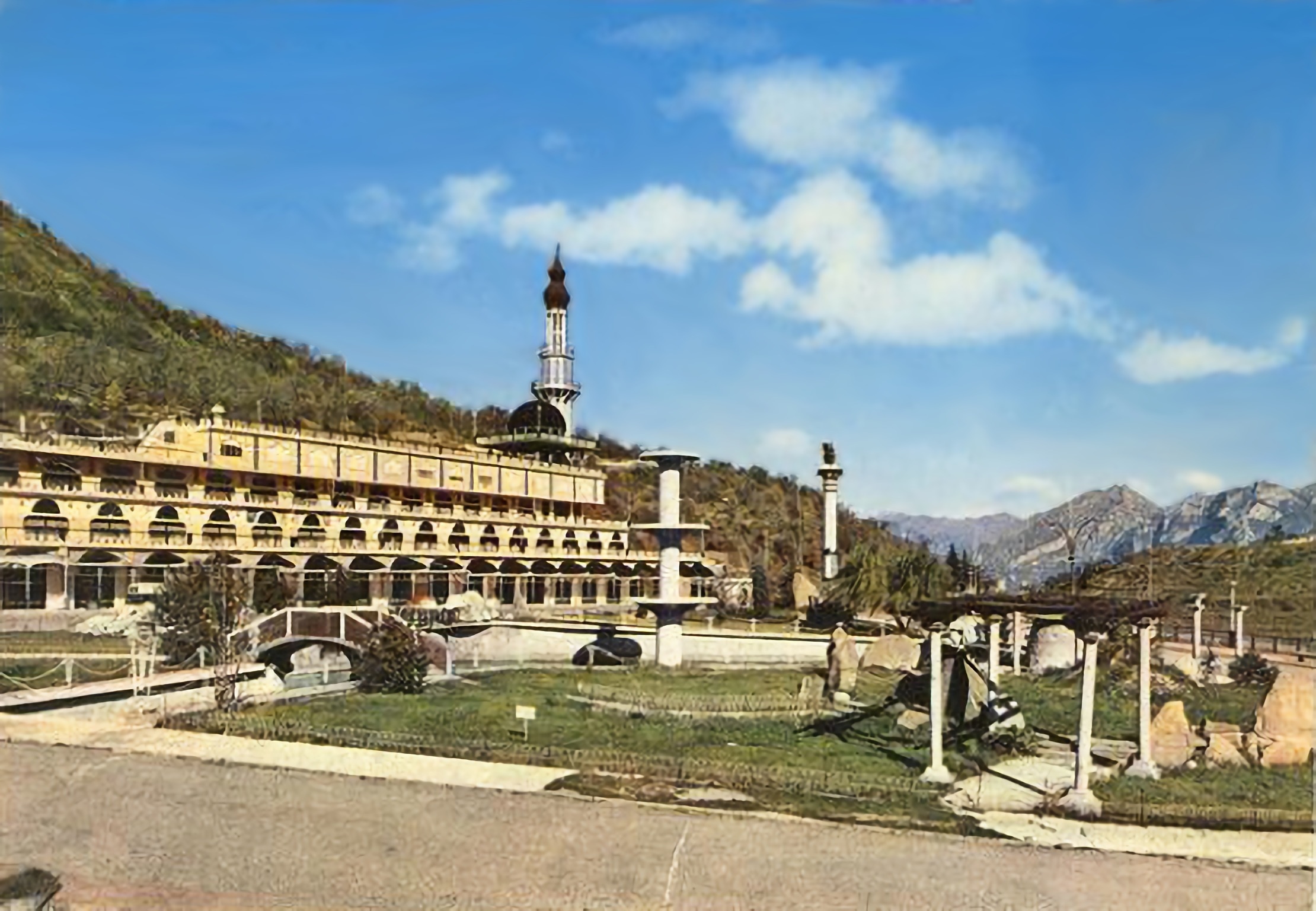
Count Bagno, now over eighty years old, had a nursing home built in the former Grand Hotel in the 1980s. He died in 1995 at the age of 94 years. The nursing home finally closed its doors for good in 2007. Shortly thereafter many of the buildings were damaged during a three-day Techno rave, thus destroying any hope for a return of the former “European Las Vegas”. All attempts to find new uses for the area or to sell it have so far failed. In 2014 Bagnos heirs tried to sell Consonno for 12 million Euros. Between 2012 and 2019 a group of volunteers ran the small Bar de la Spinada for hikers, mountain bikers and motorcyclists on summer weekends.
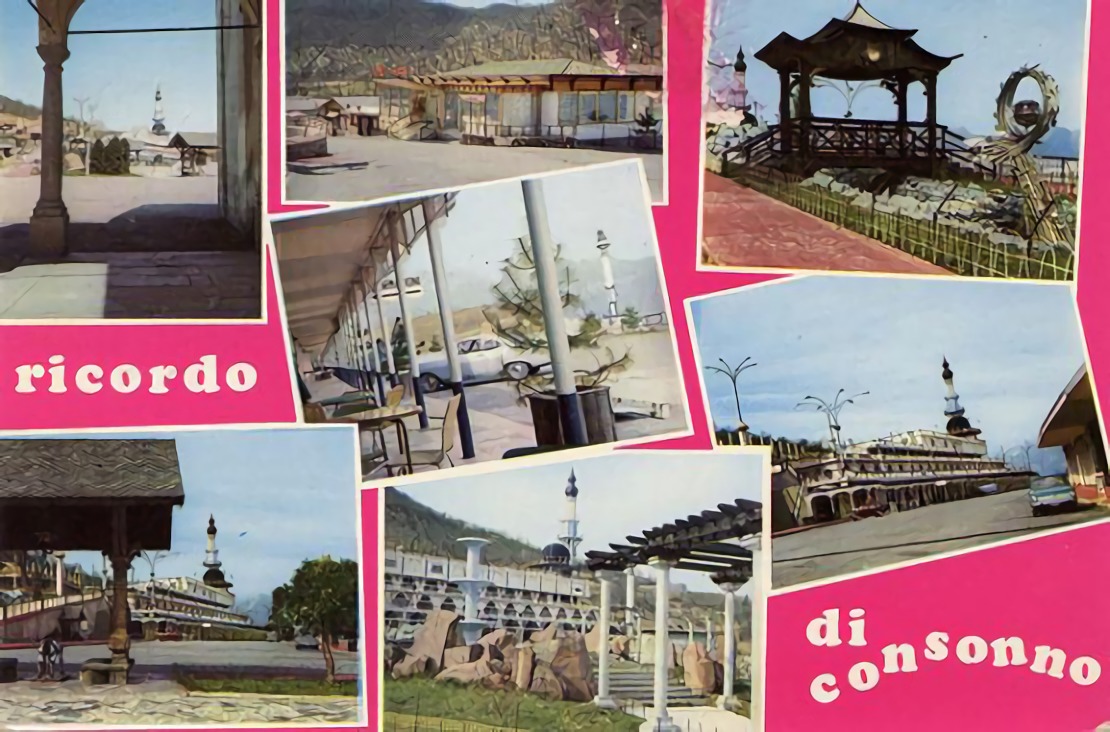
*Direct access by car is only possible between Easter and October on Sundays between 10:00 and 12:00, when the batting posts are opened for visits to the Chiesa San Maurizio. At all other times one has to walk at least one kilometer uphill to reach Consonno.
On the road from Olginate to Consonno you first pass the ruins of the panoramic restaurant “Il Pavesino”. Construction was never completed.
A frequently photographed feature of Consonno are the signs with the writing on the access road. They come in four different variations: “Qui a Consonno tutto è meraviglioso” (“Everything is wonderful here in Consonno”), “Consonno è il paese più piccolo e più bello del mondo” (“Consonno is the smallest and most beautiful village in the world”), “Chi vive a Consonno campa di più” (“Who lives in Consonno lives longer”) and “A Consonno è sempre festa” (“In Consonno there is always a celebration”). Probably many visitors had really felt like this was true, otherwise it is hard to explain why thousands of people came again and again to a place in the middle of the forest…
The top of the minaret is already visible from the access road. The medieval-style entrance gate at the road no longer exists. Allegedly some kind of entrance fee had to be paid there (at least at some times during the week), but it could also be possible that it was just the parking fee.
The small Chiesa San Maurizio and the rectory are still in their original place at the end of the street, a little away from the other buildings. Today, masses are only held at Easter or other high holidays. In 2008 and 2014 small folk festivals were also organized in memory of “Old Consonno” from before 1962.
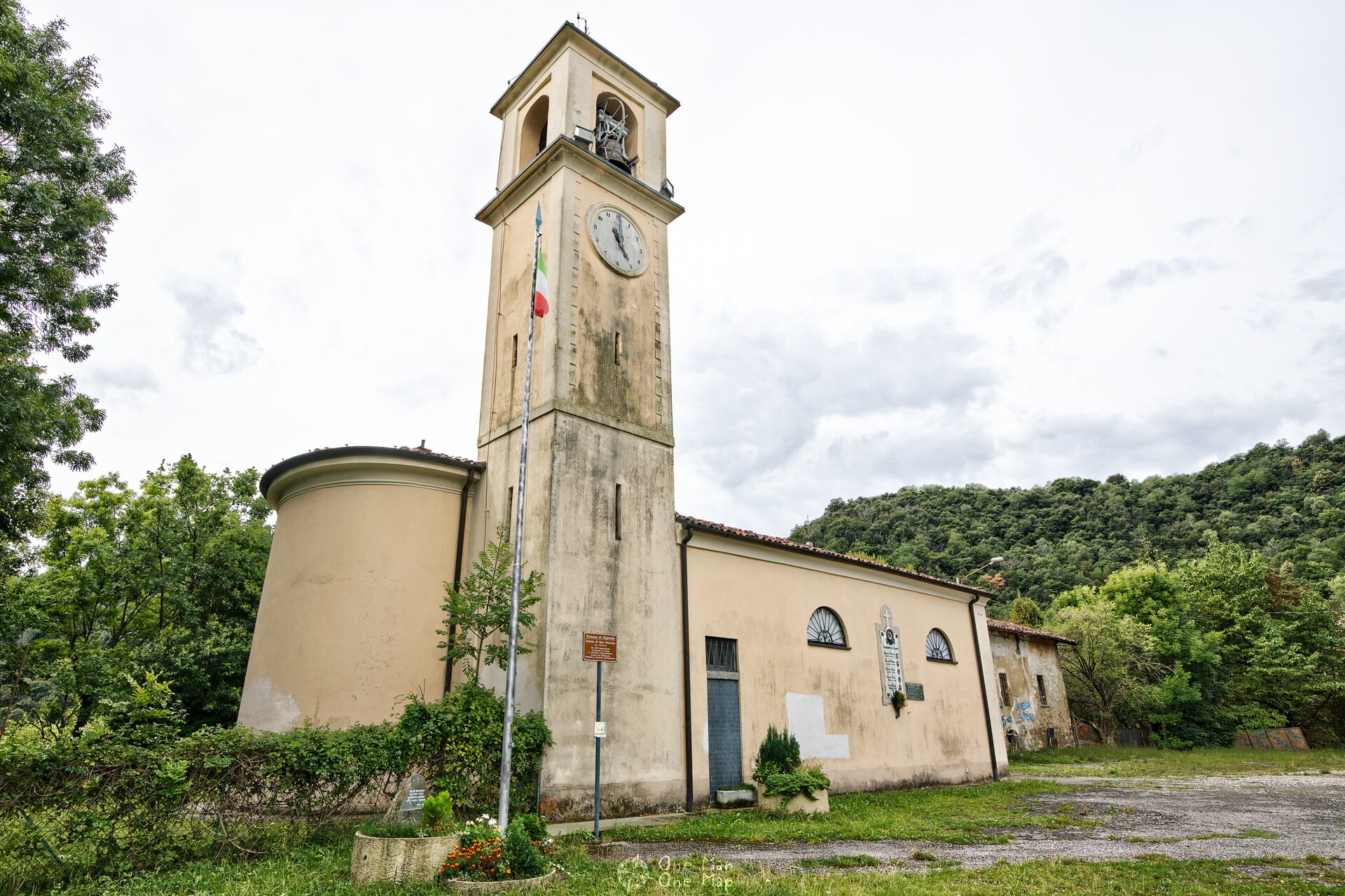
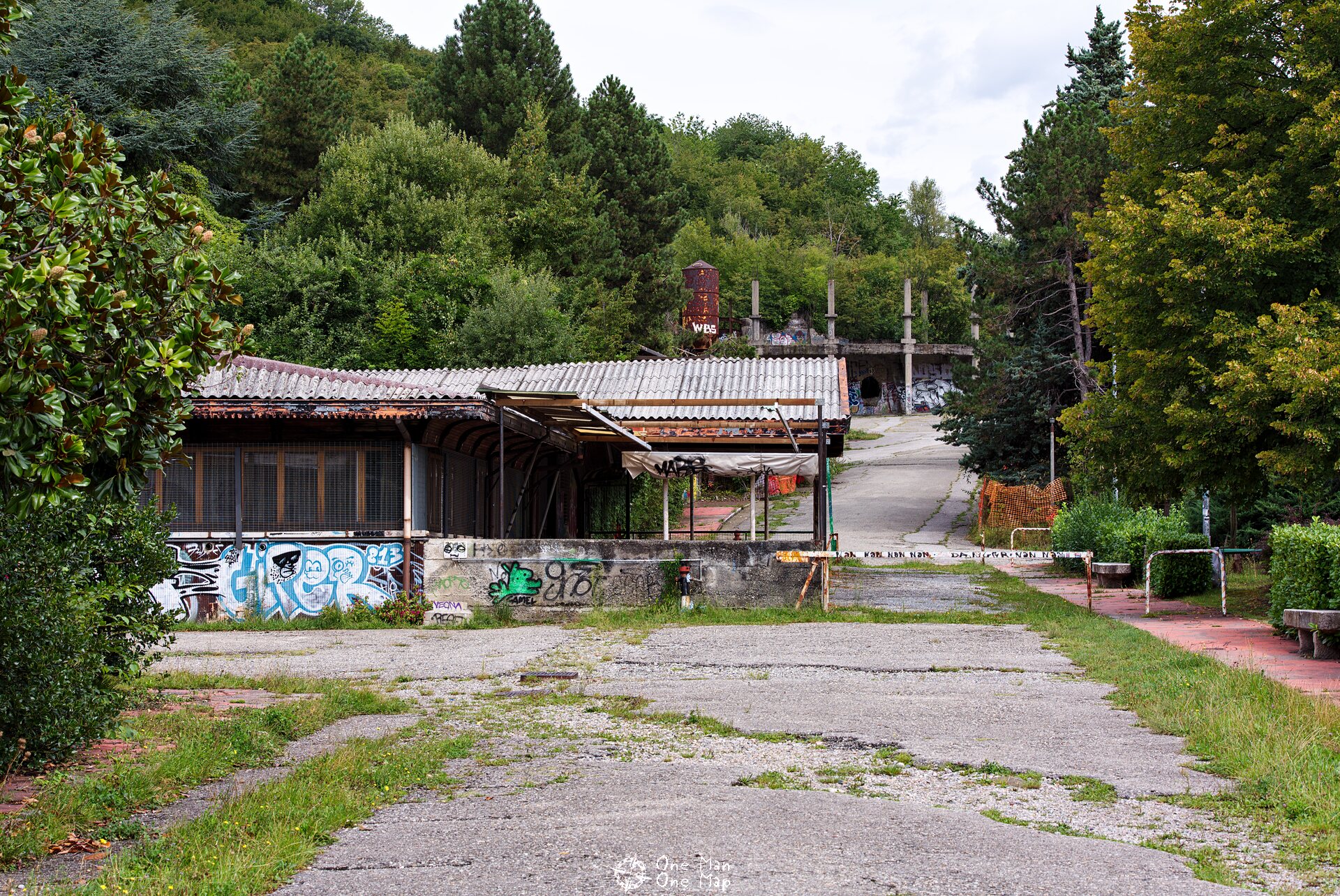
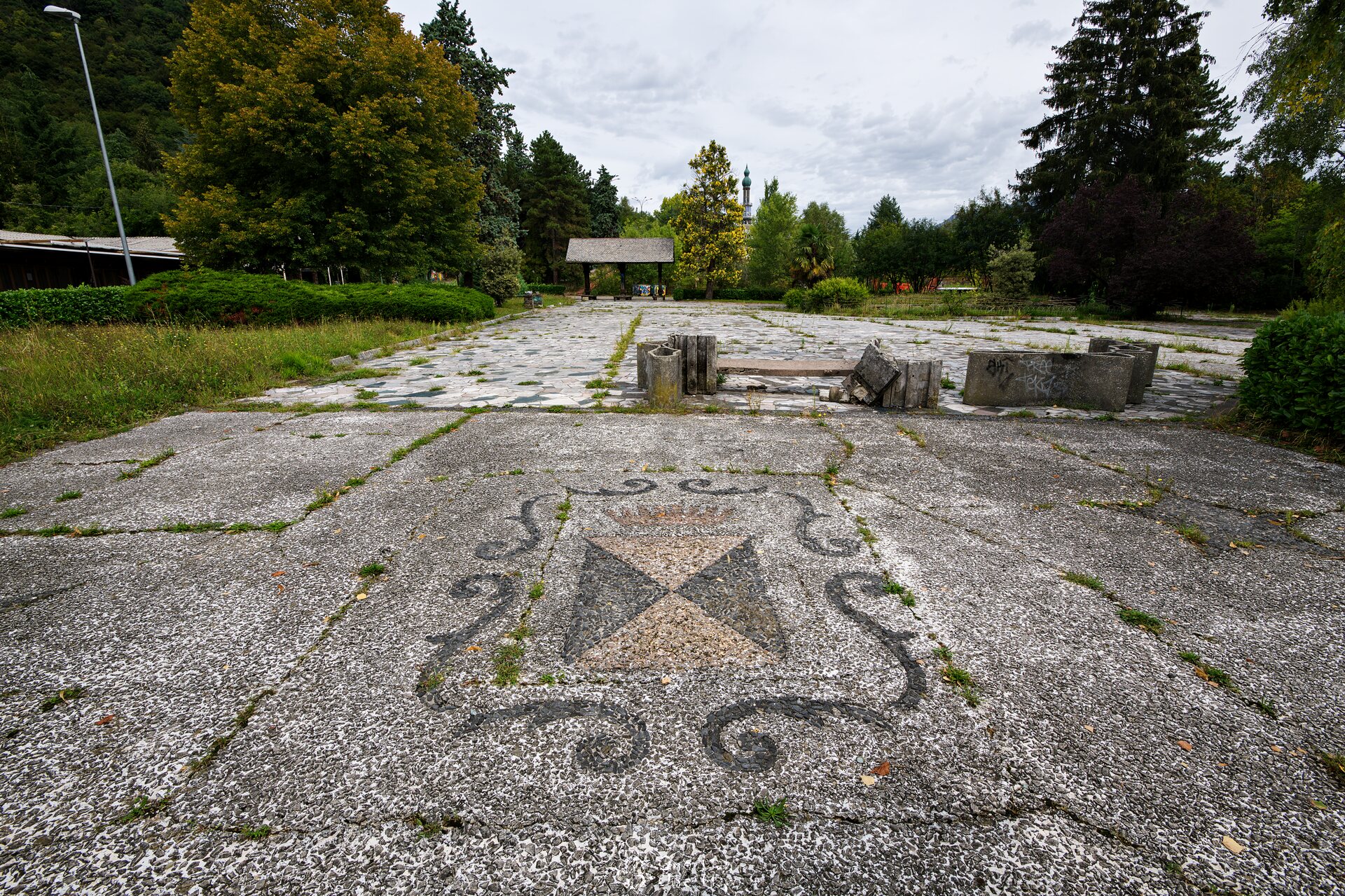
Between the entrance square and the shopping arcade are the ruins of the Salone delle Feste. It had cafés, restaurants and stages for music, dancing and variety performances. Today there is basically nothing left of it. Even the outer walls are no longer complete, not to mention the roofs and interior decoration.
The most striking and most frequently photographed building is the three-story shopping arcade with its arcades, terraces and the minaret on the roof.
The 30-meter high minaret and the dome are located on the roof of the building. In the past the roof terrace was probably also used for parties and music concerts.
The stairs and ladders on the dome and minaret had been removed, so it was no longer possible to get to the top in a safe way. When I arrived at the minaret, a couple of teenagers were just climbing down an improvised “ladder” made of fence grids and pipes. I definitely don’t recommend using this construction!
Below the roof terrace there were some apartments, probably for servants and artists on tour.
The second floor used to house the stores and other amenities. Unfortunately I couldn’t find out what exactly was sold here. Some former guests have immortalized their memories on the internet, according to these the stores sold “simply everything, really everything”. At peak times the crowds of people walking around Consonno are said to have been comparable to the beach promenades of Rimini.
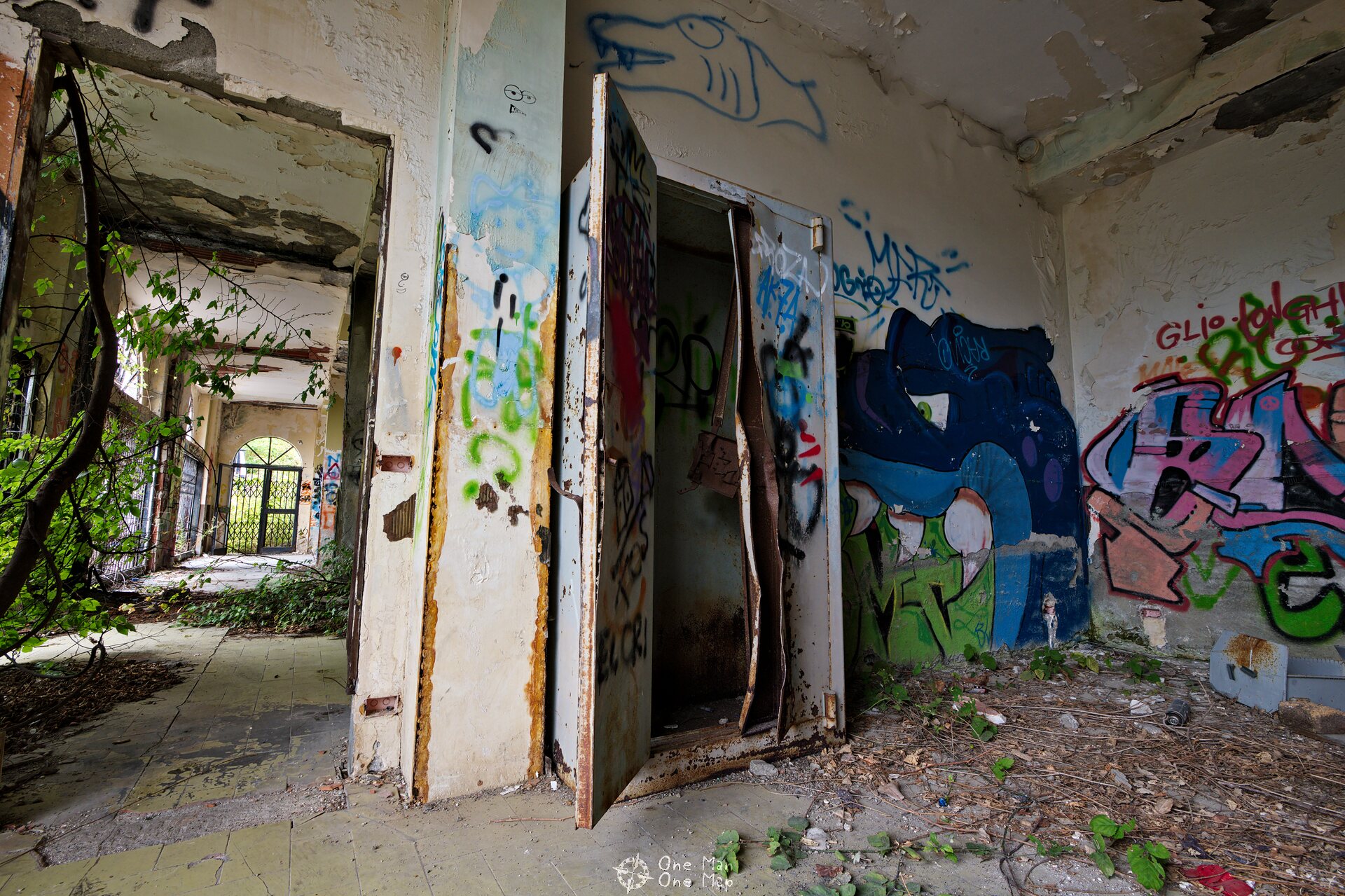
There were also other storefronts on the first floor. According to the reports, mainly toys and sweets for children were sold here.
The stores on the first floor were mostly two-story. However, I can’t quite imagine that these narrow stairs were intended to be used by customers. Presumably the upper floors were used as storage rooms?
On the west side of the shopping arcade was a restaurant with a large dining room.
Consonno was an open construction site until the end. Behind the shopping arcade are the remains of a large concrete mixer and some pillars of a construction site for an unknown building.
Next to the abandoned construction site are the remains of a workshop building and an old truck. The truck is said to have belonged to Mario Bagnos construction company, the wreck has been standing on the same spot for decades.
In the old workshop there were still some machines, including a planing bench and a circular table saw.
By far the most surreal place on the whole site is certainly the former small park with the lake, the water games and the Roman columns directly in front of the shopping arcades. As can be seen on the aerial photos and photos from the 1970s, there were no trees in this place at that time. In the meantime, however, the entire area is so overgrown that one can only guess at the original condition with a lot of imagination.
Conclusion: After decades of vandalism one can only guess at all the marvelous things that must have happened in this place in the past. The unique architecture and history are well worth a visit, though 🙂
This post was written by Simon for One Man, One Map. The original can be found here. All rights reserved.

